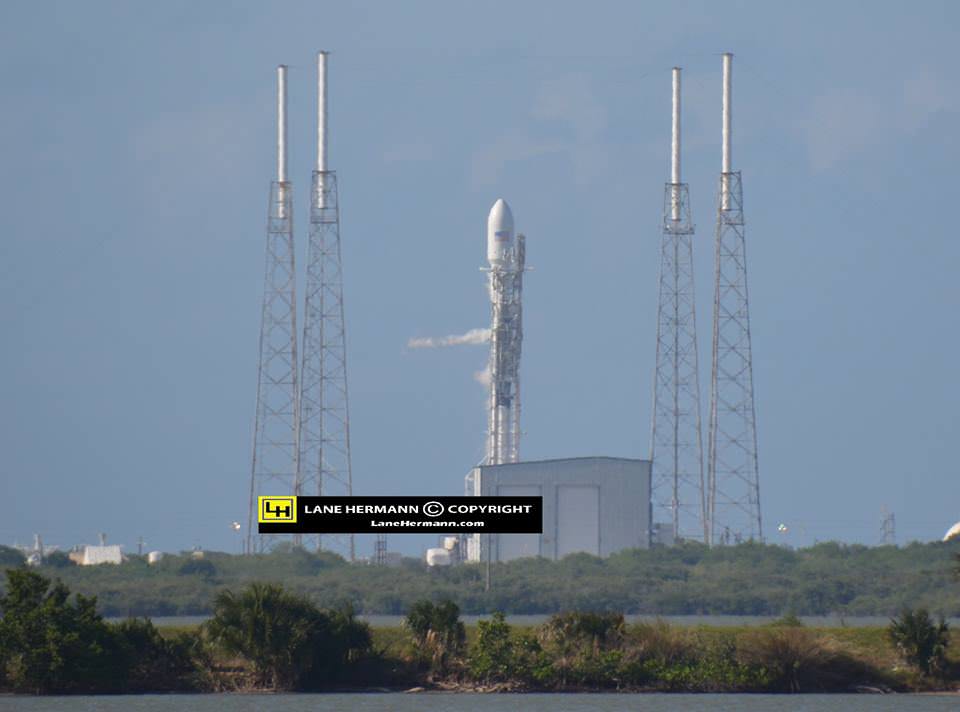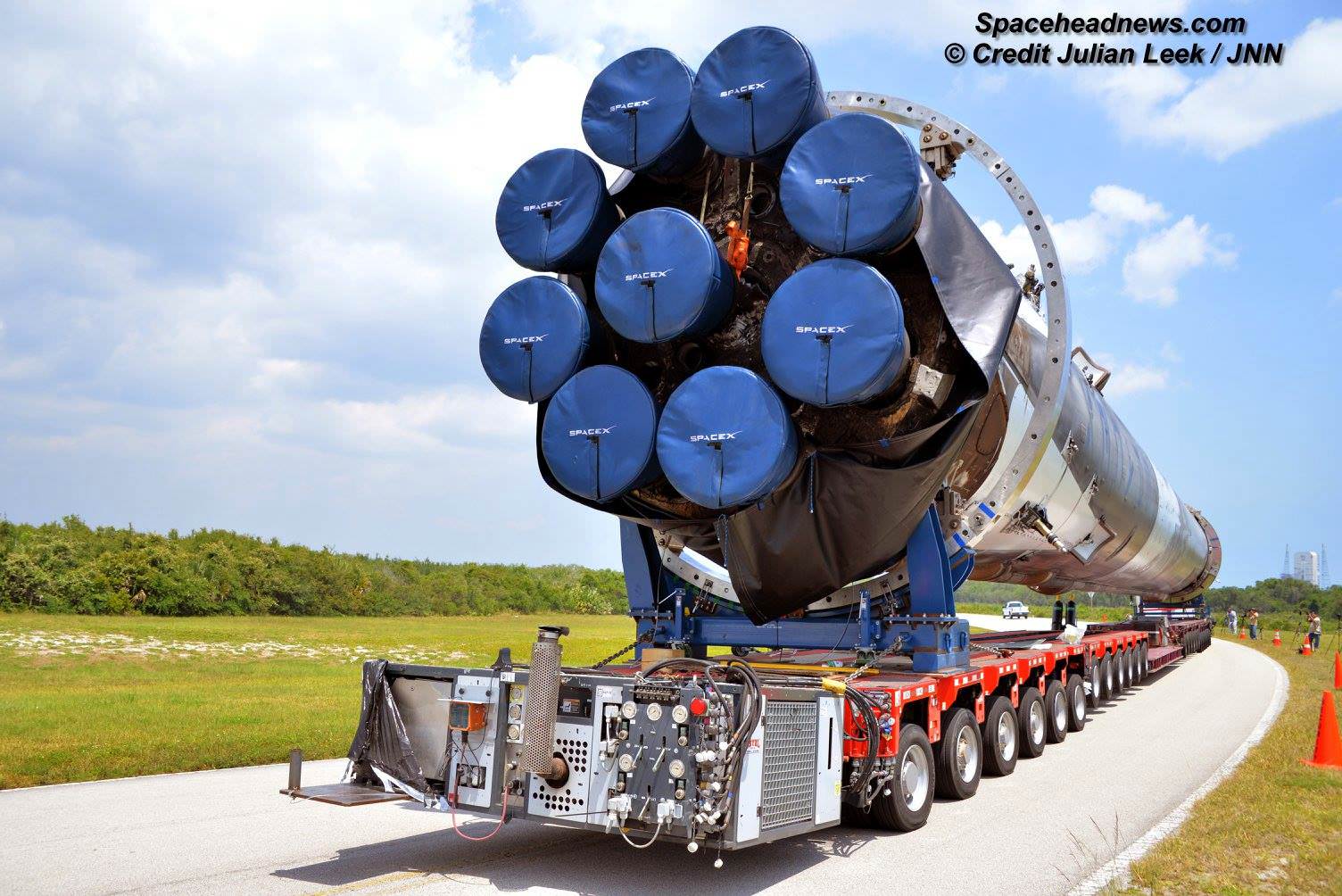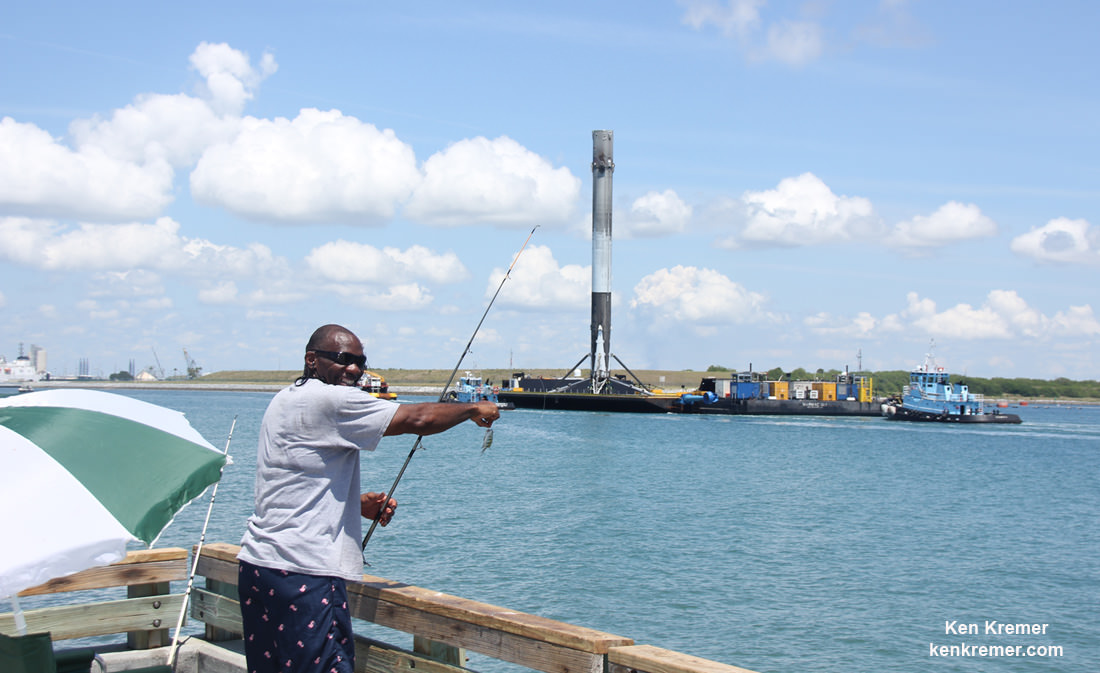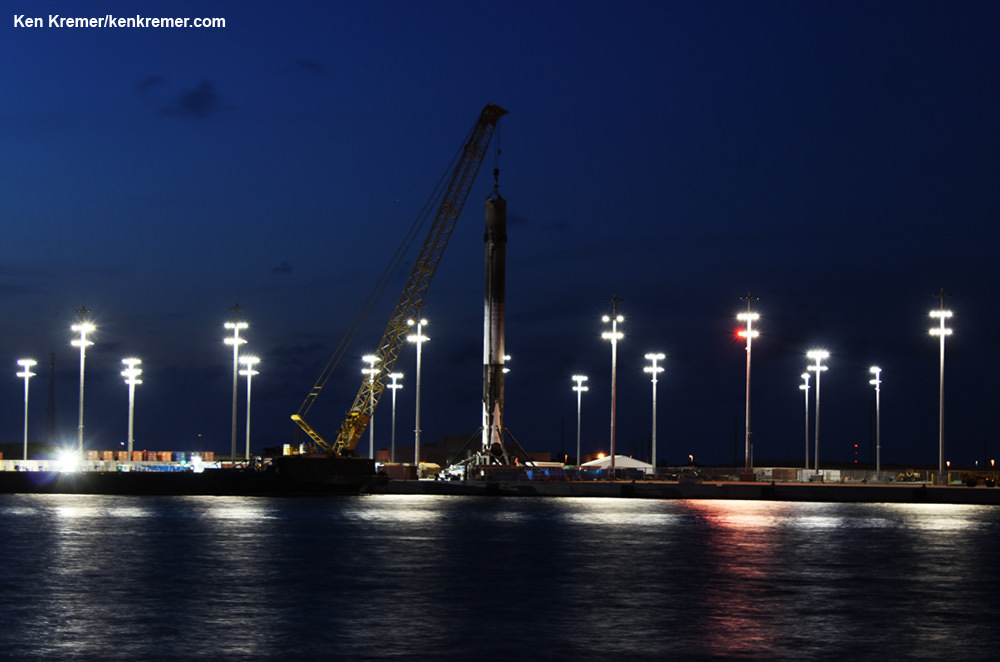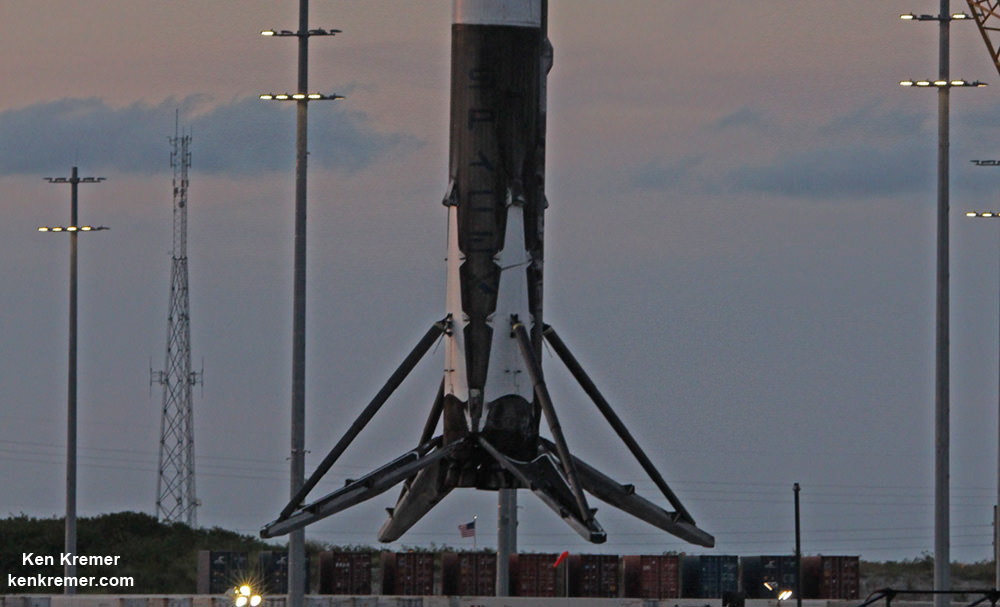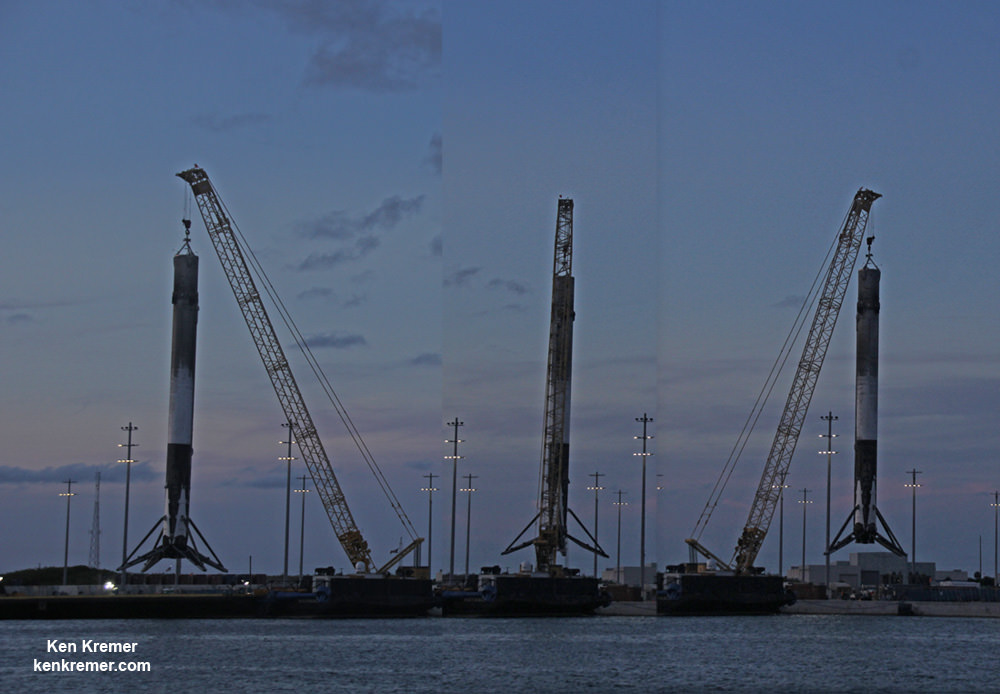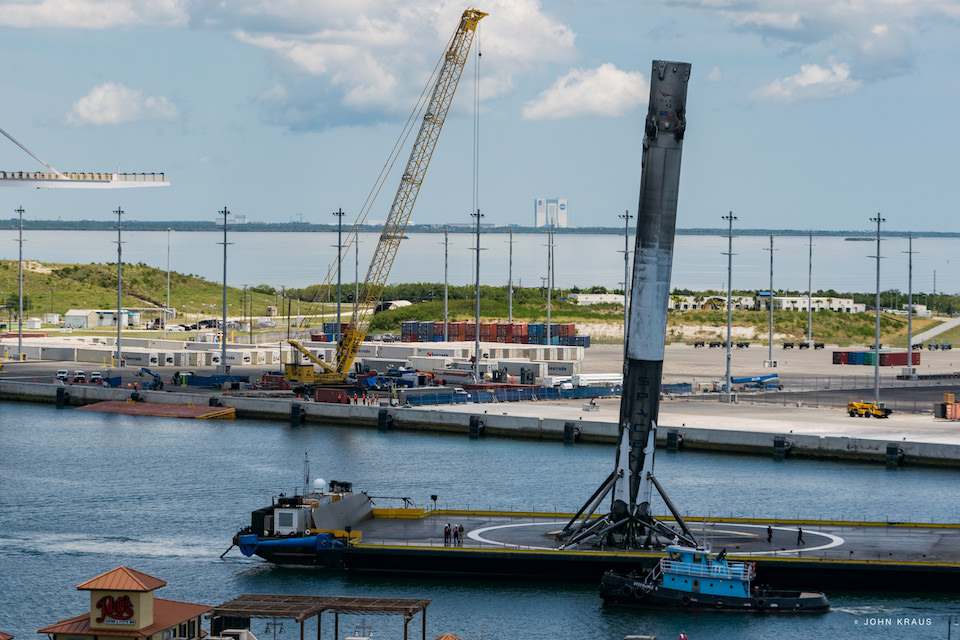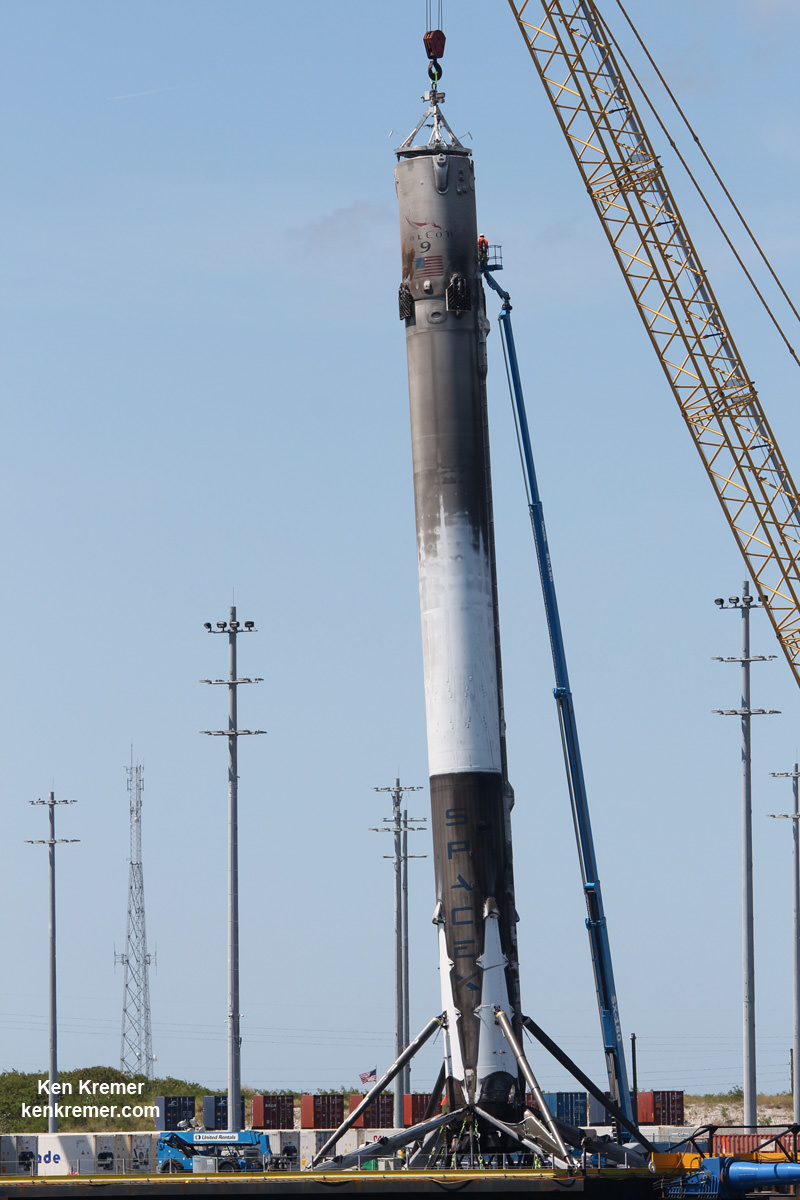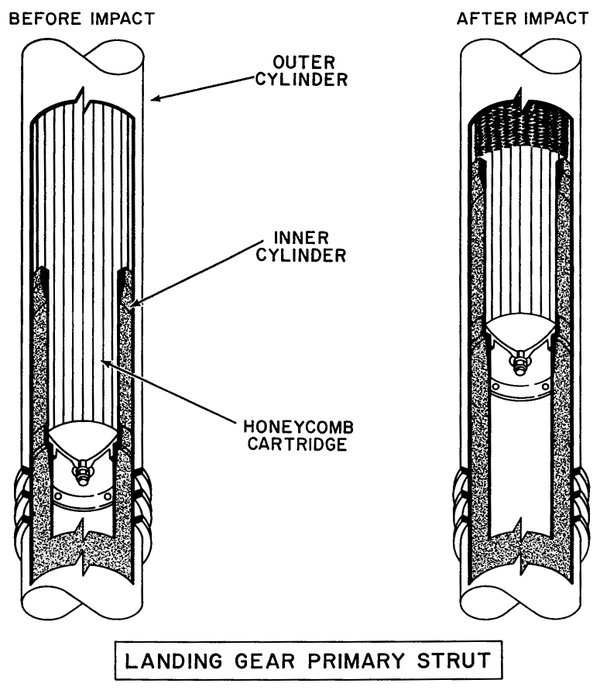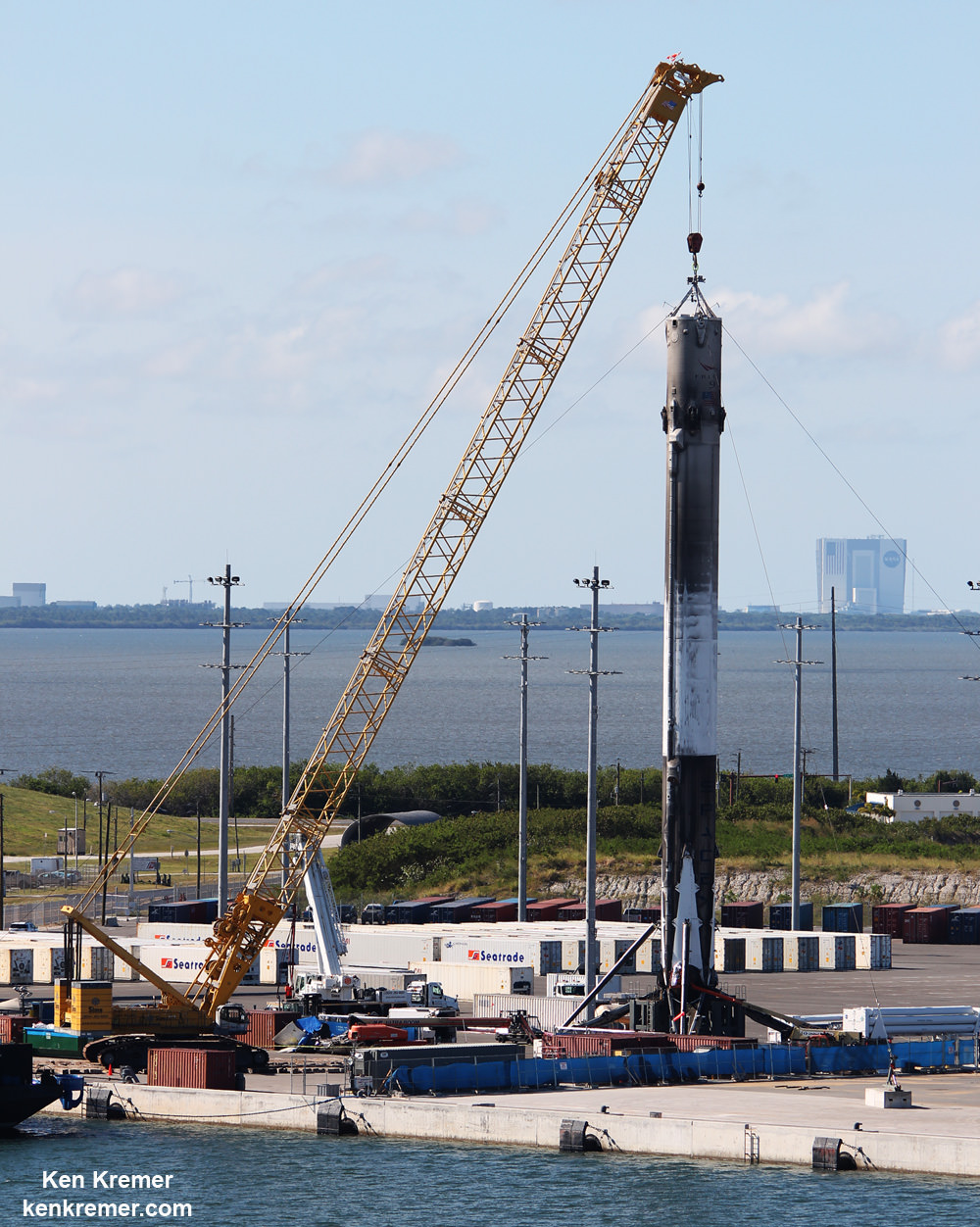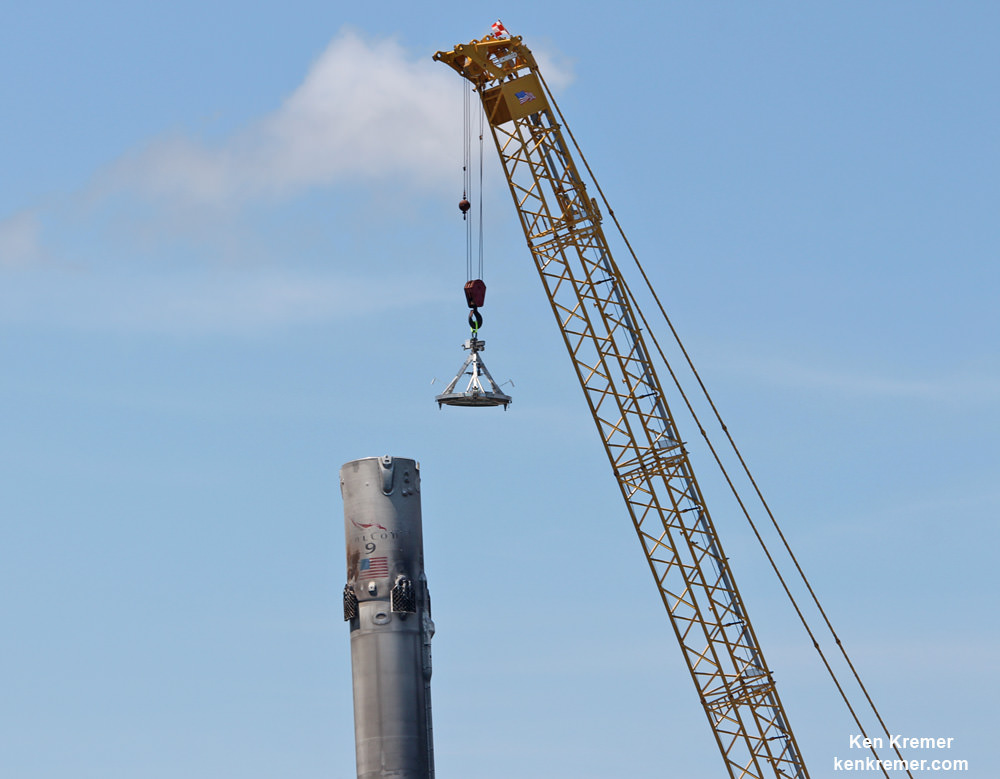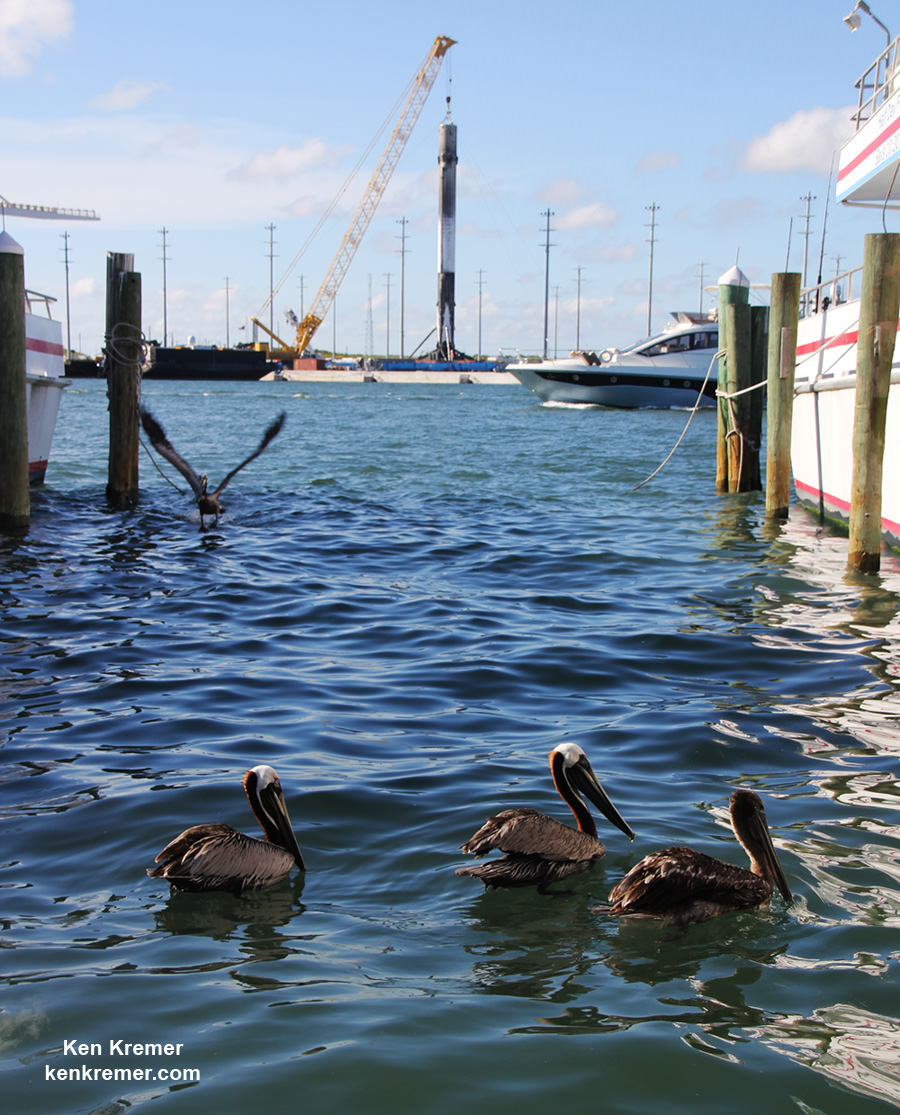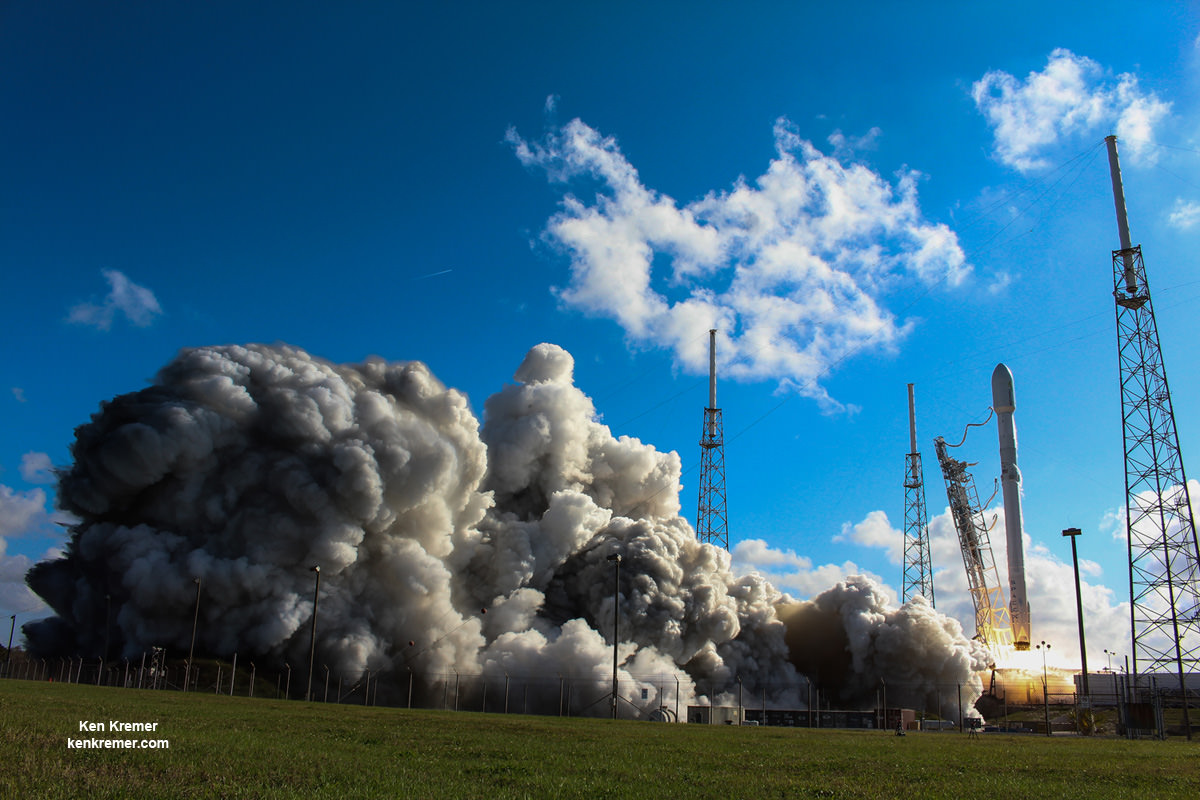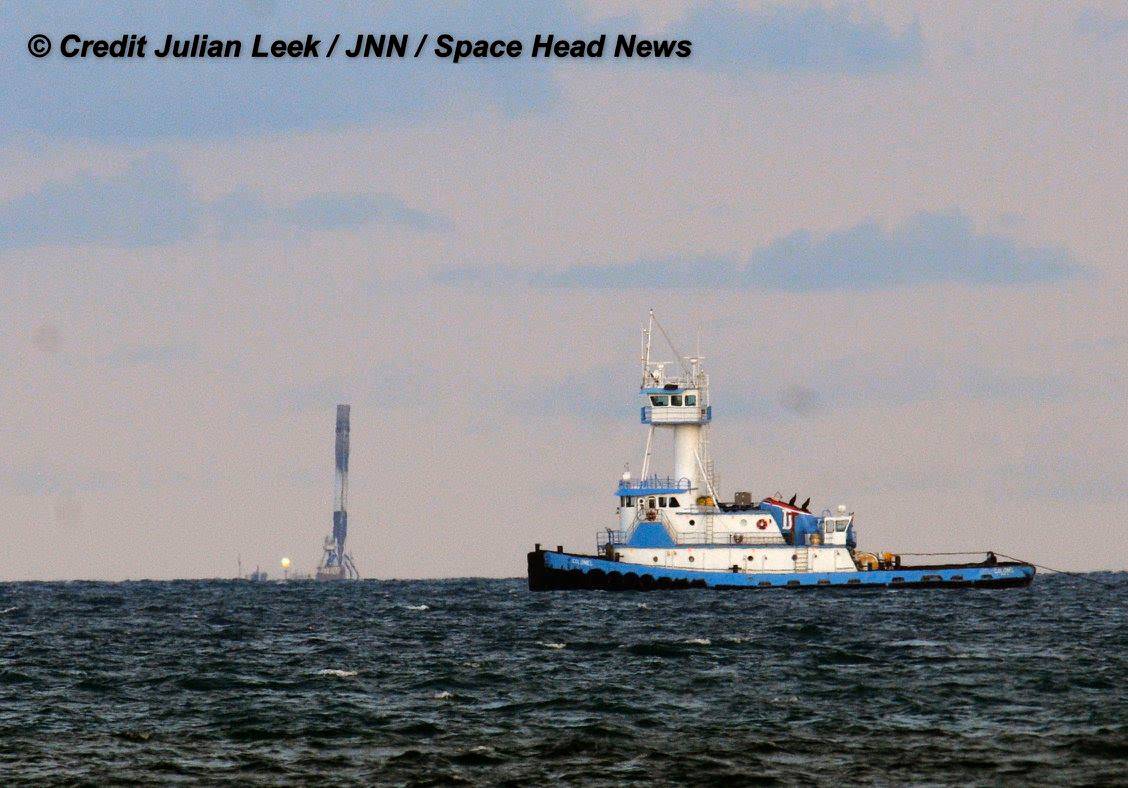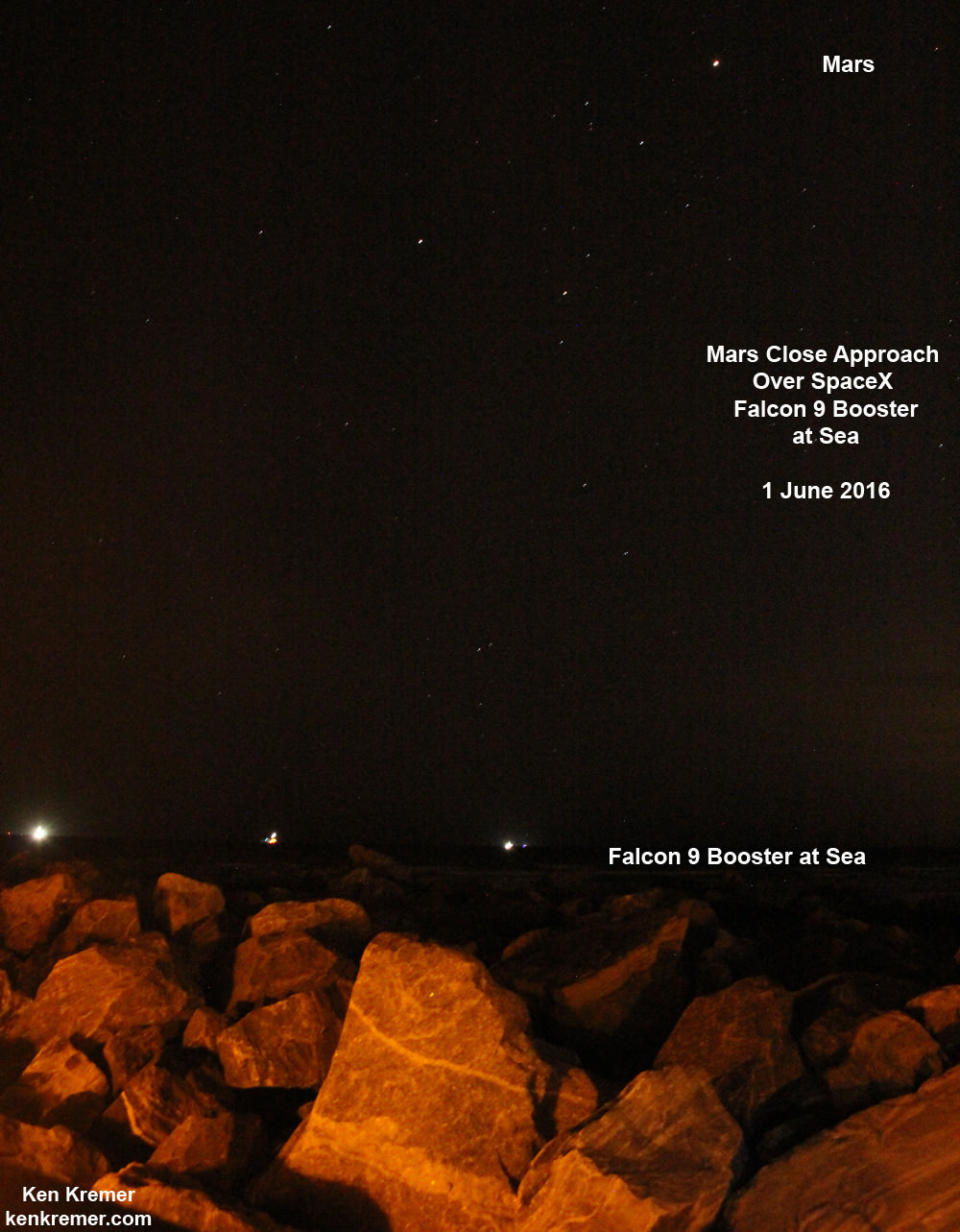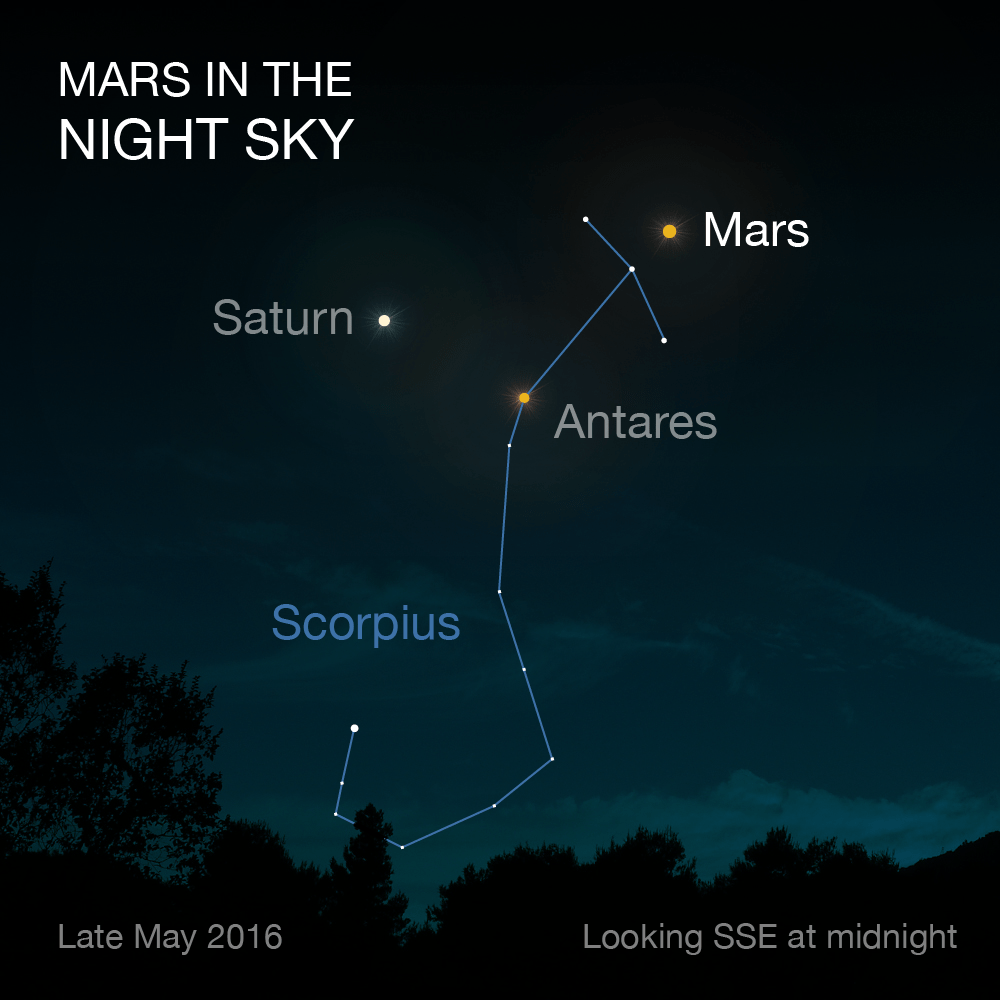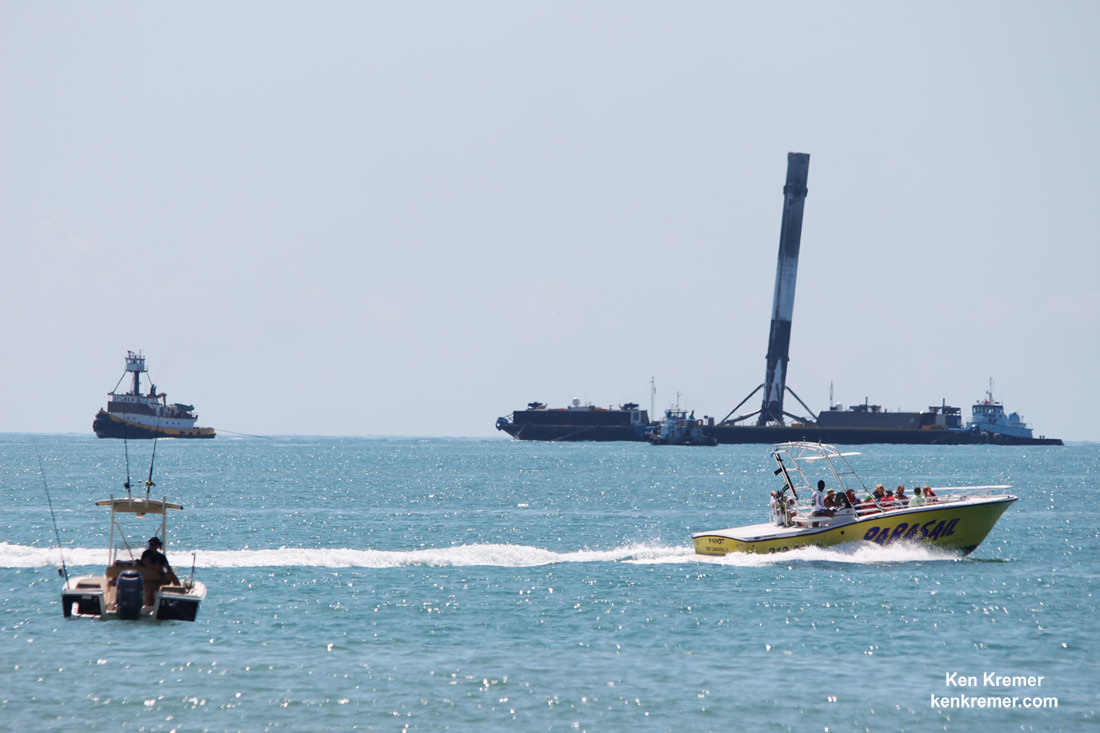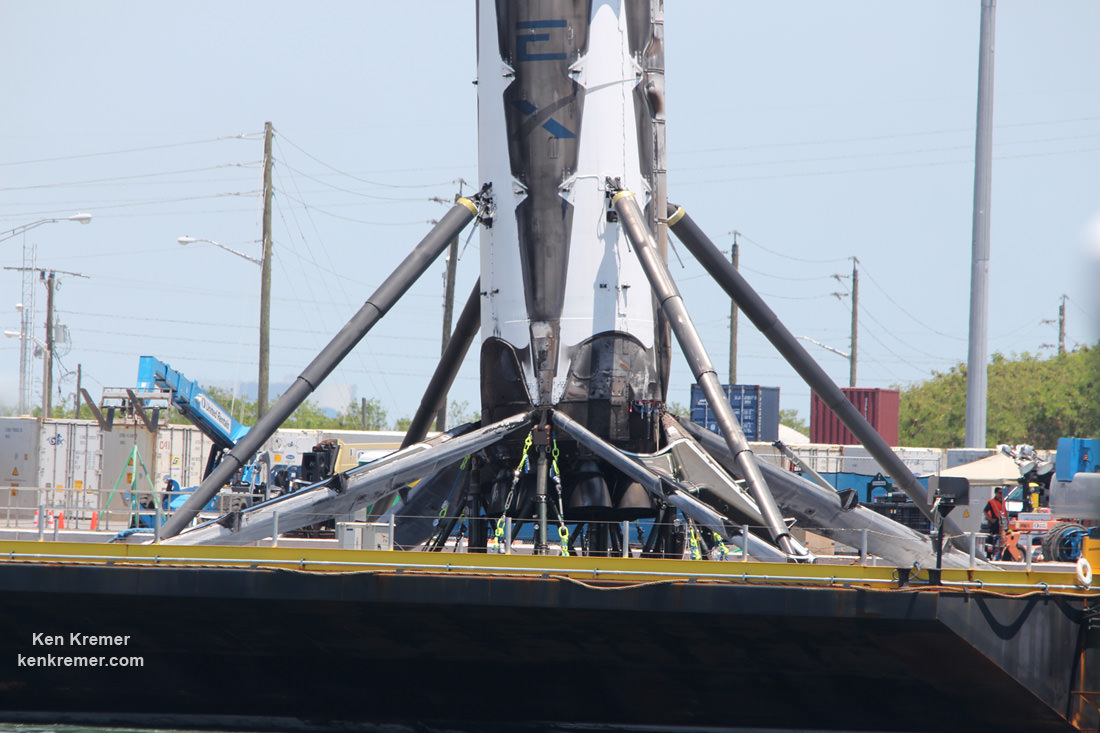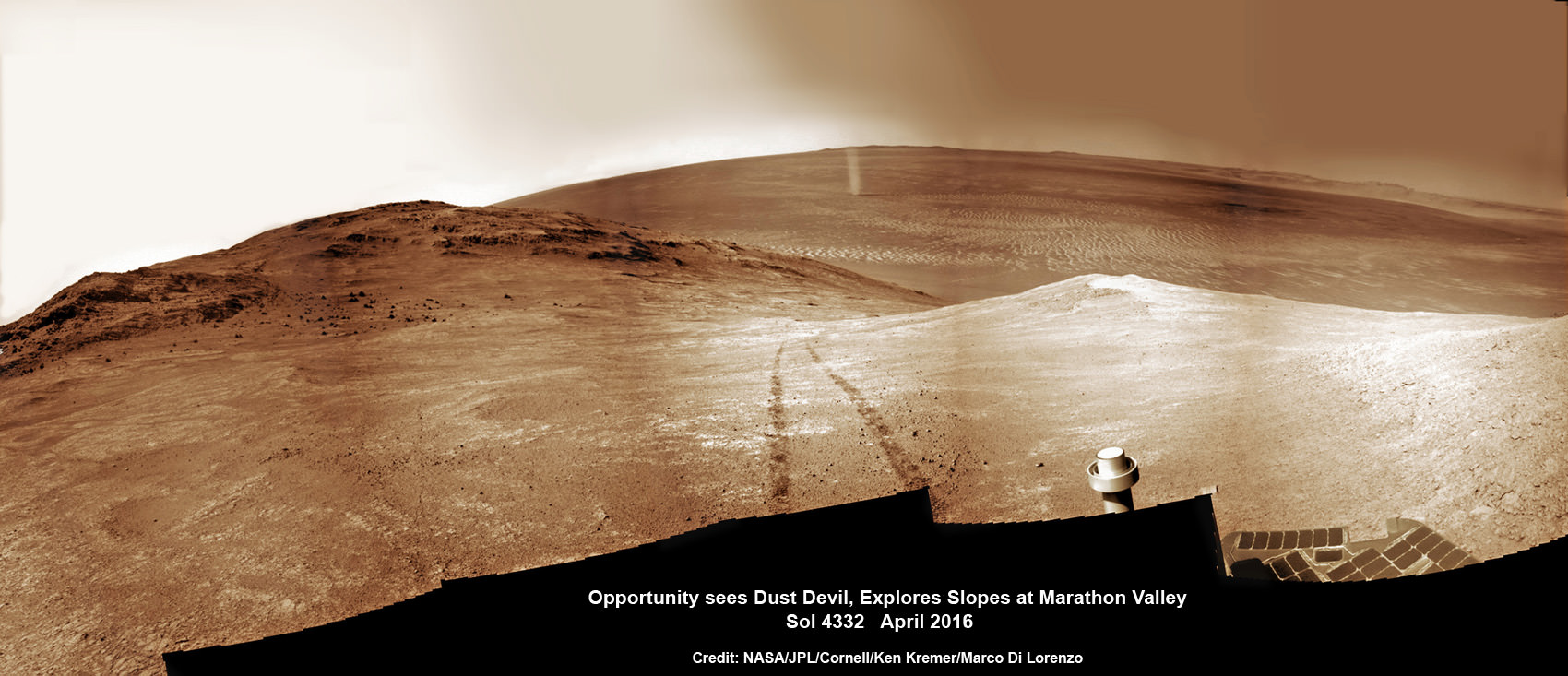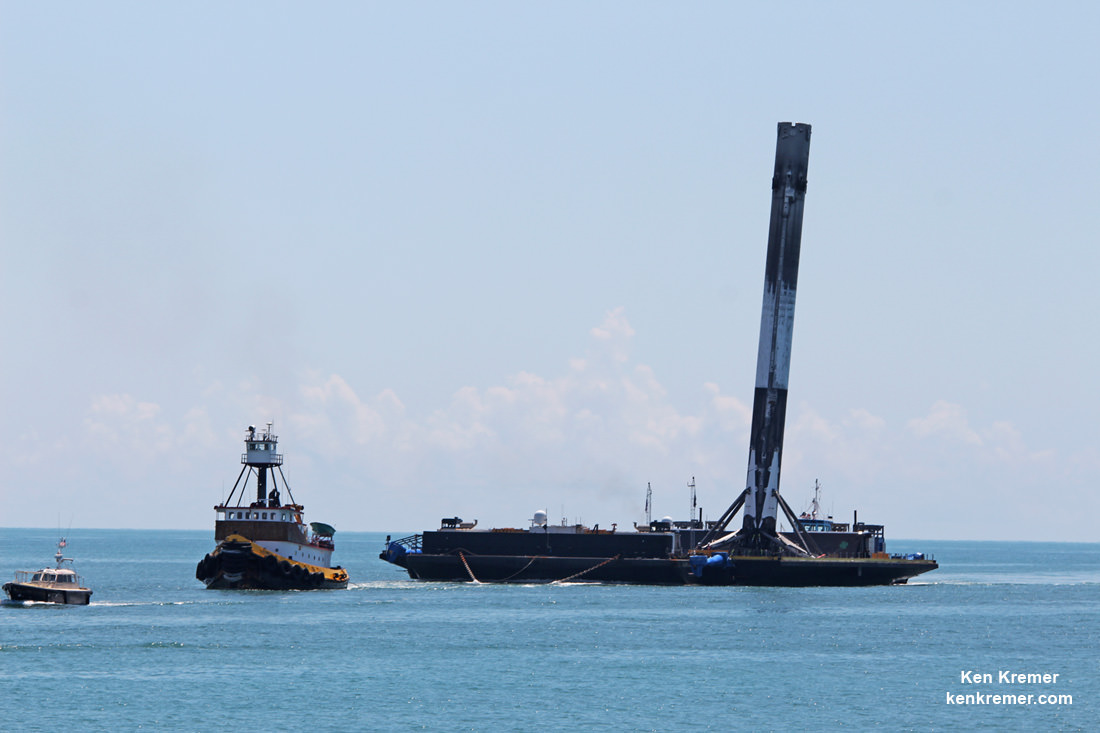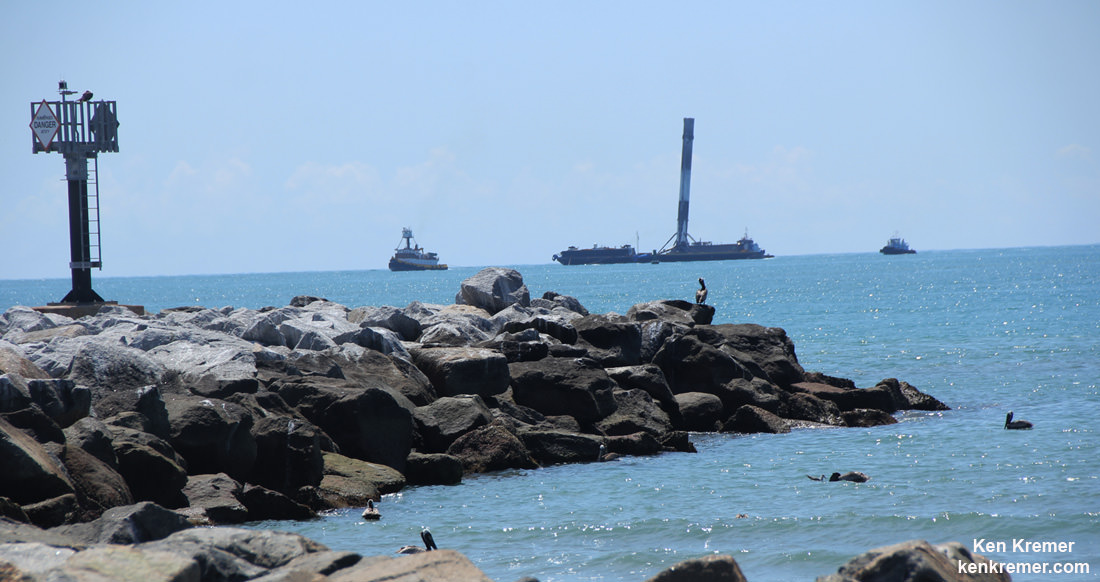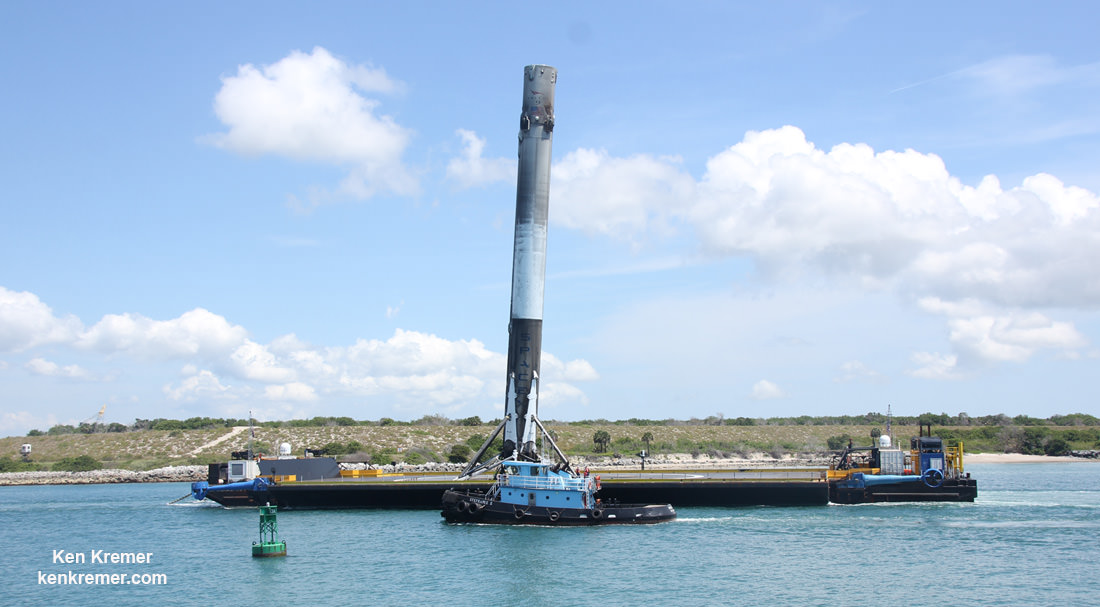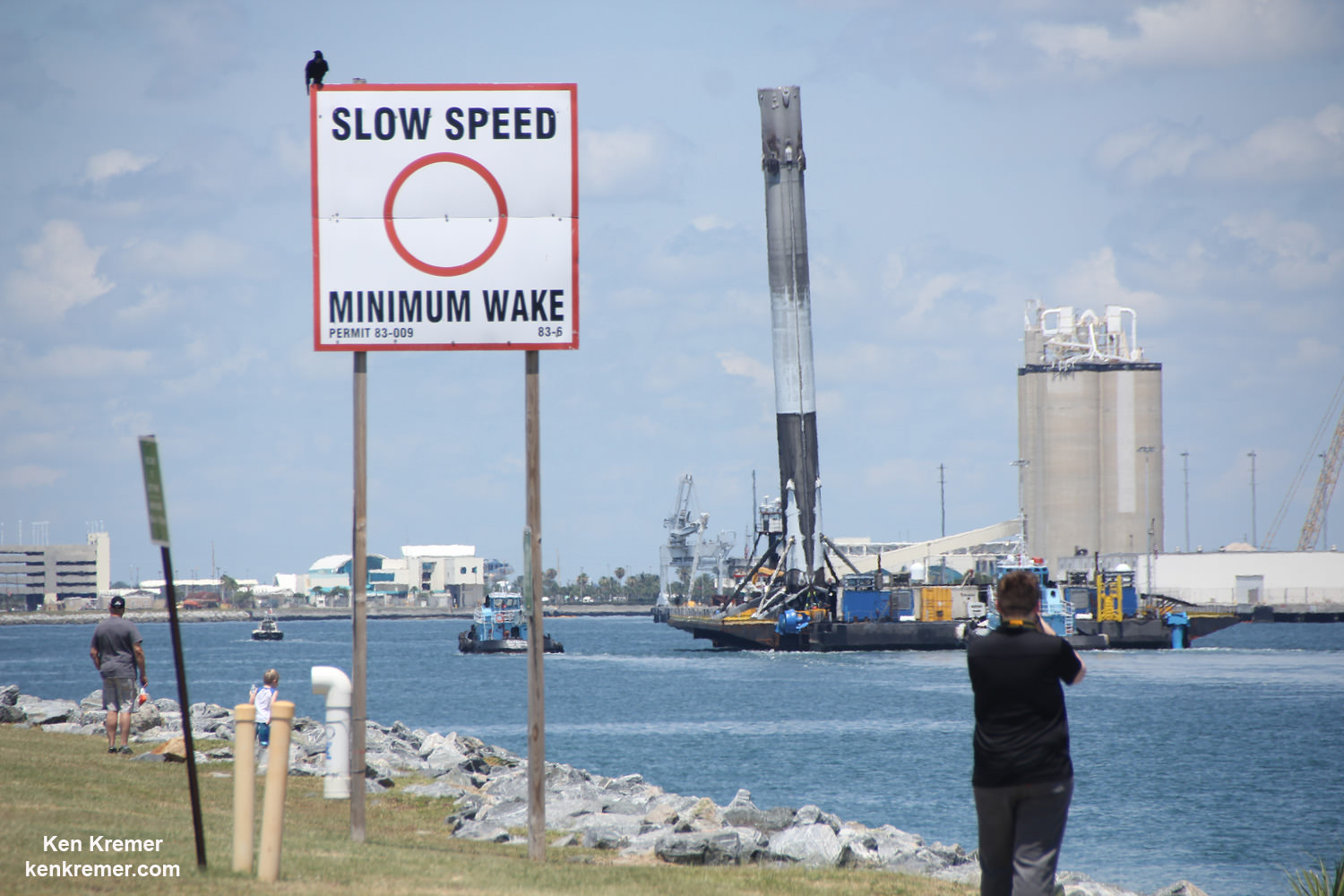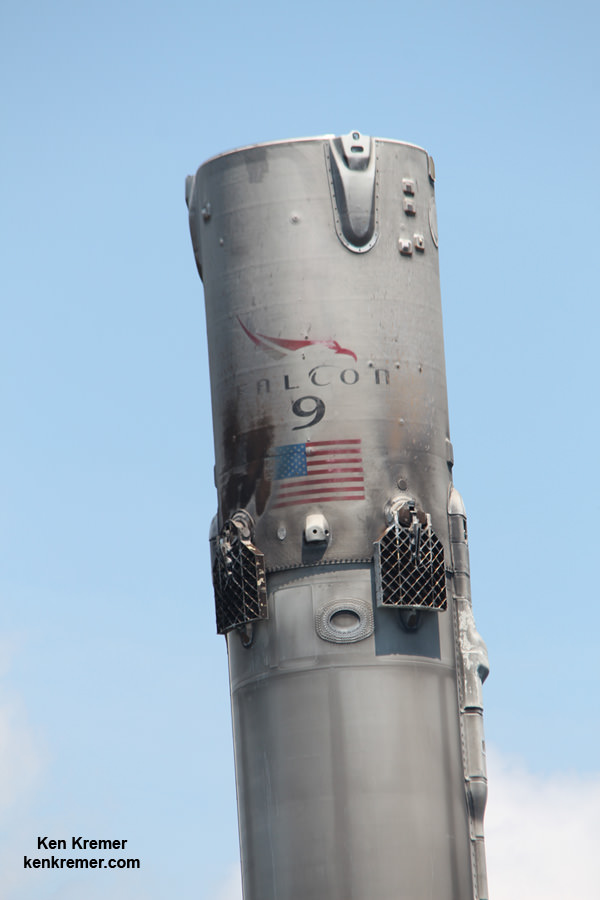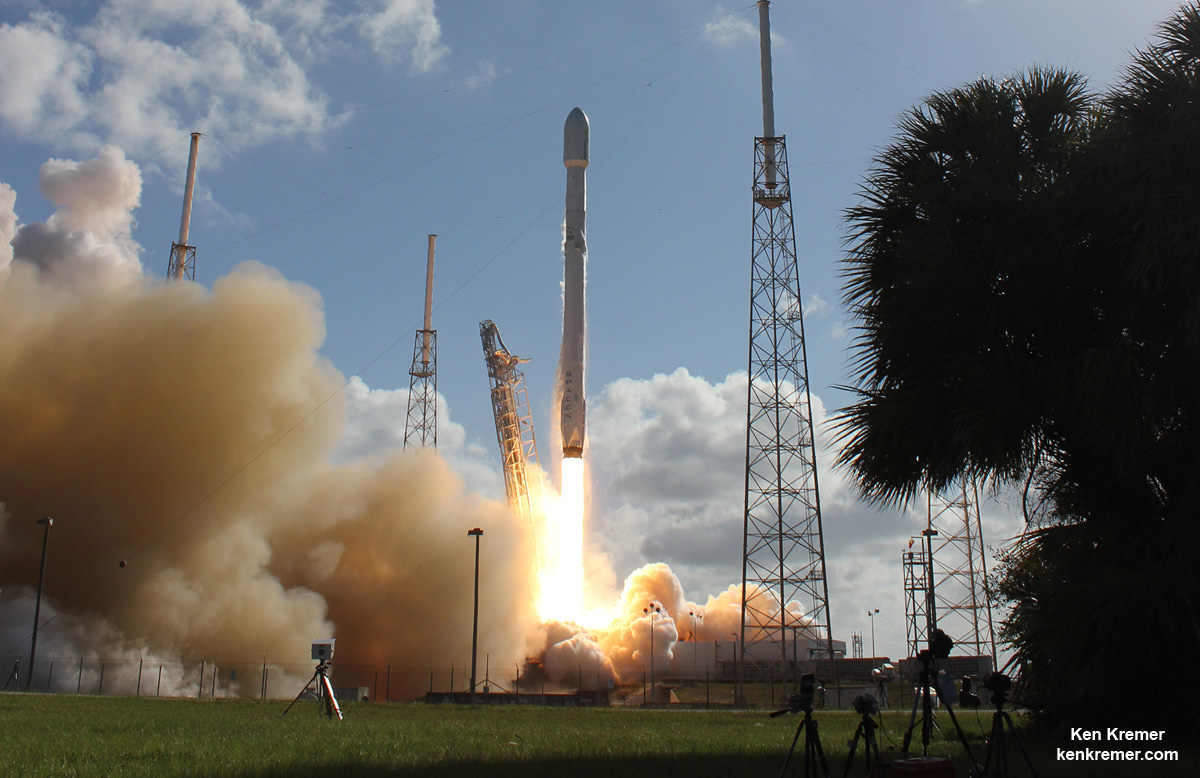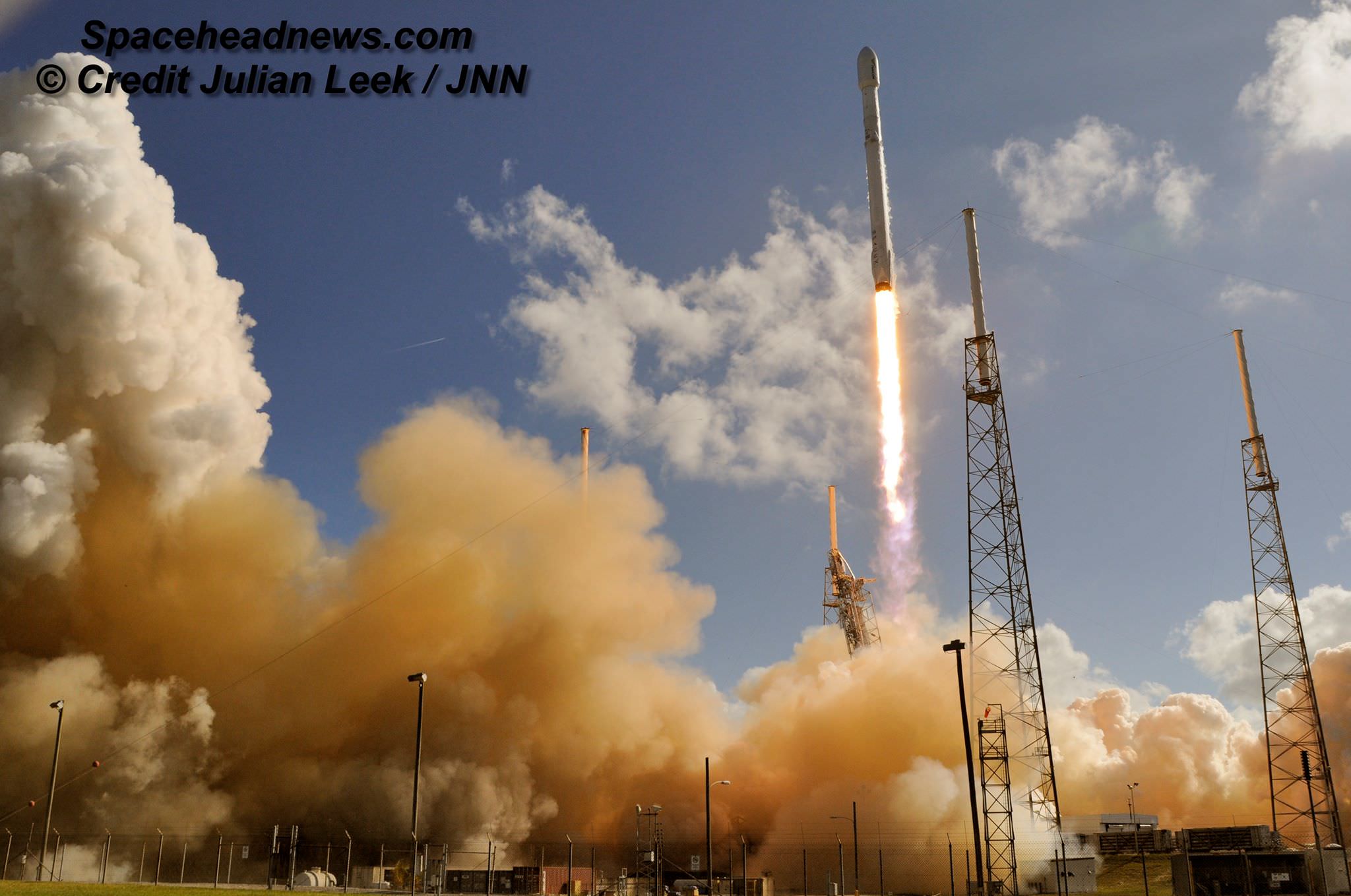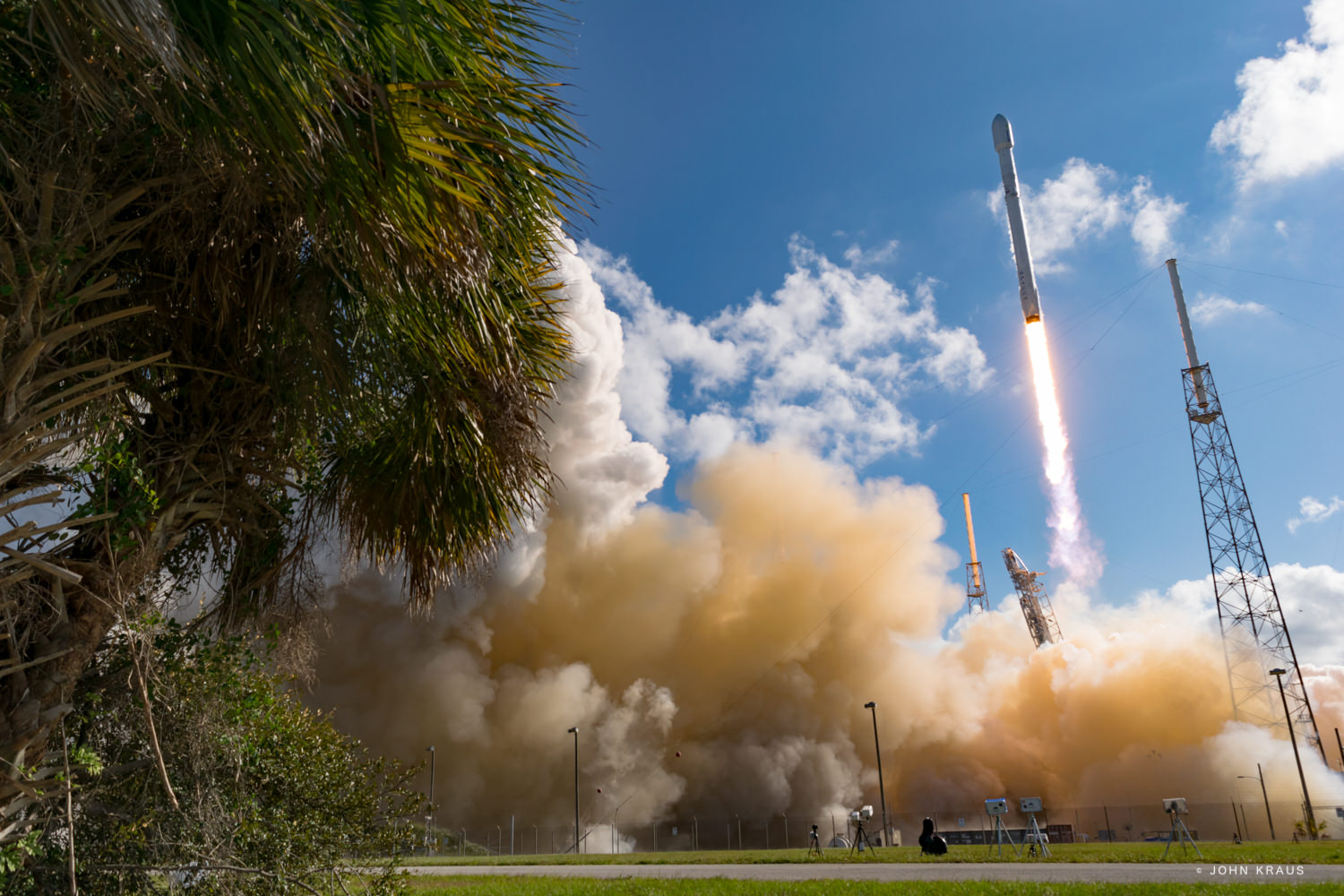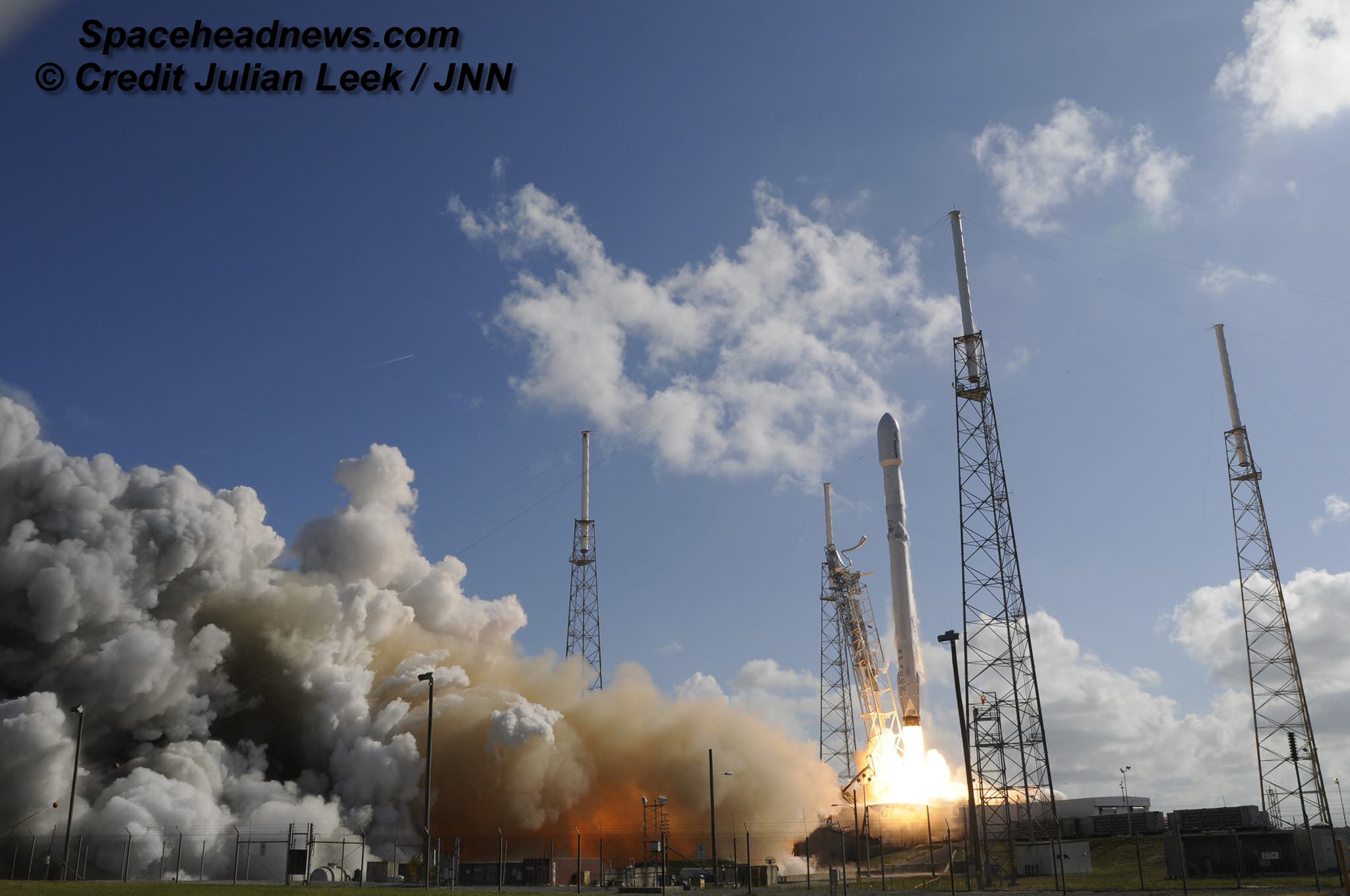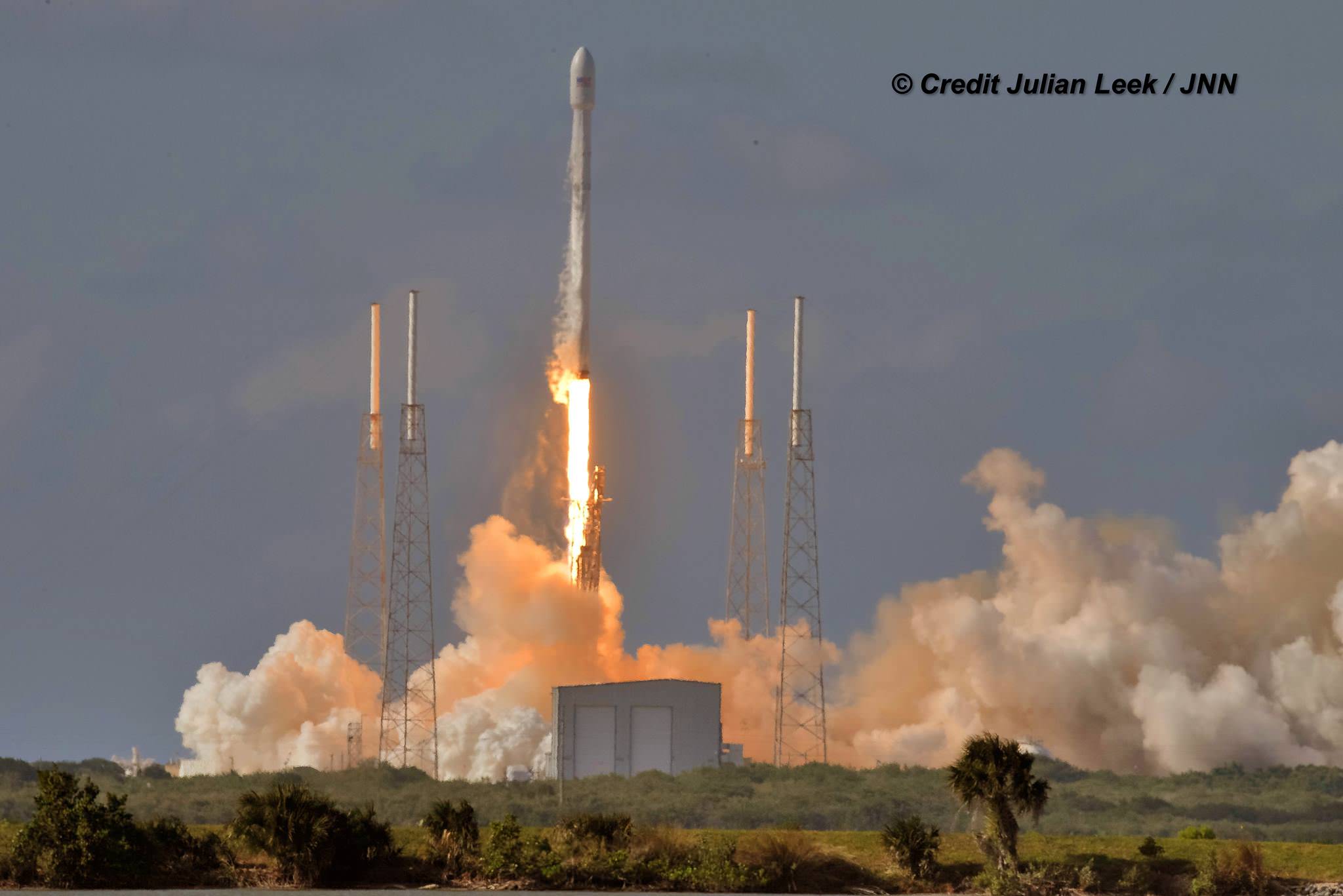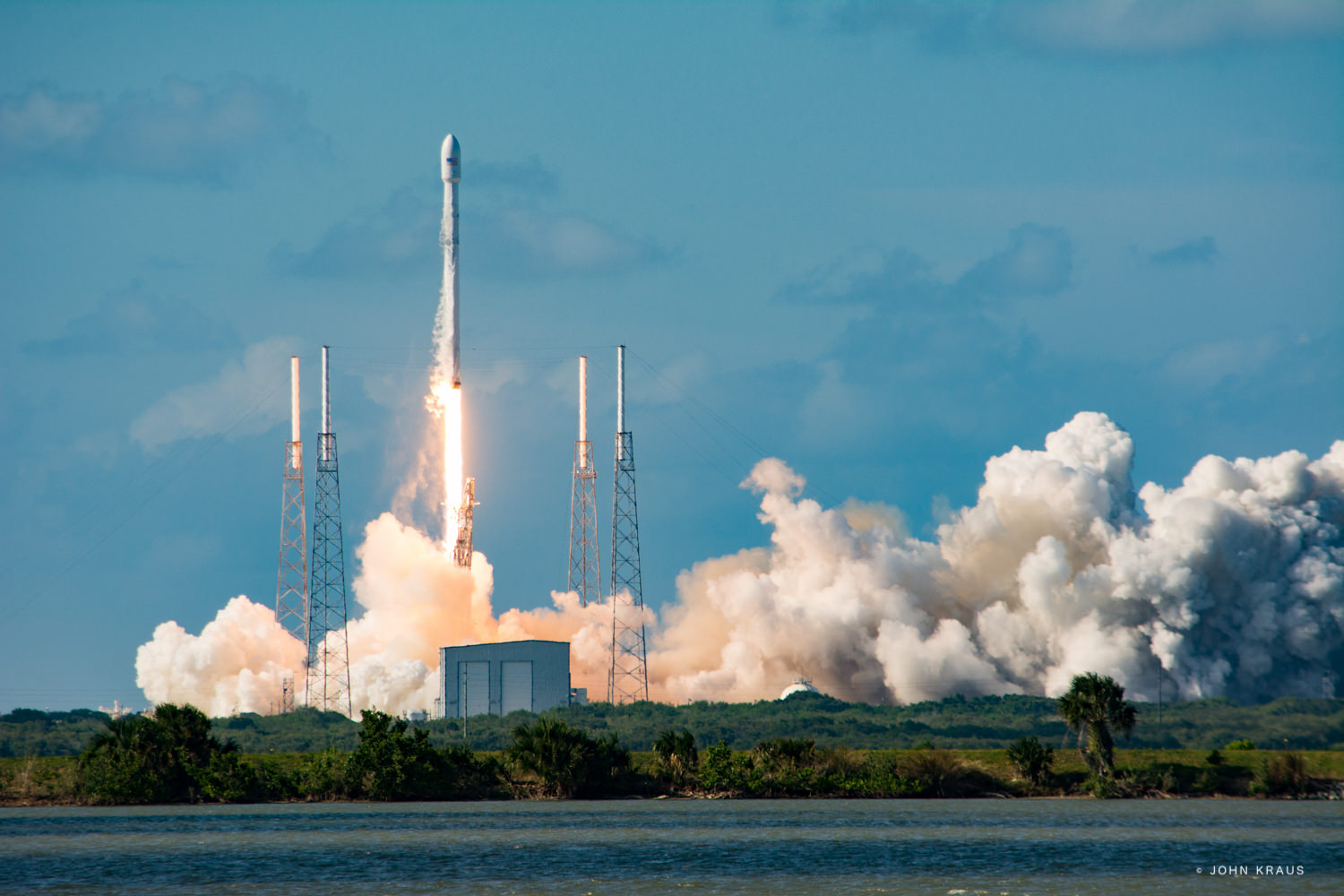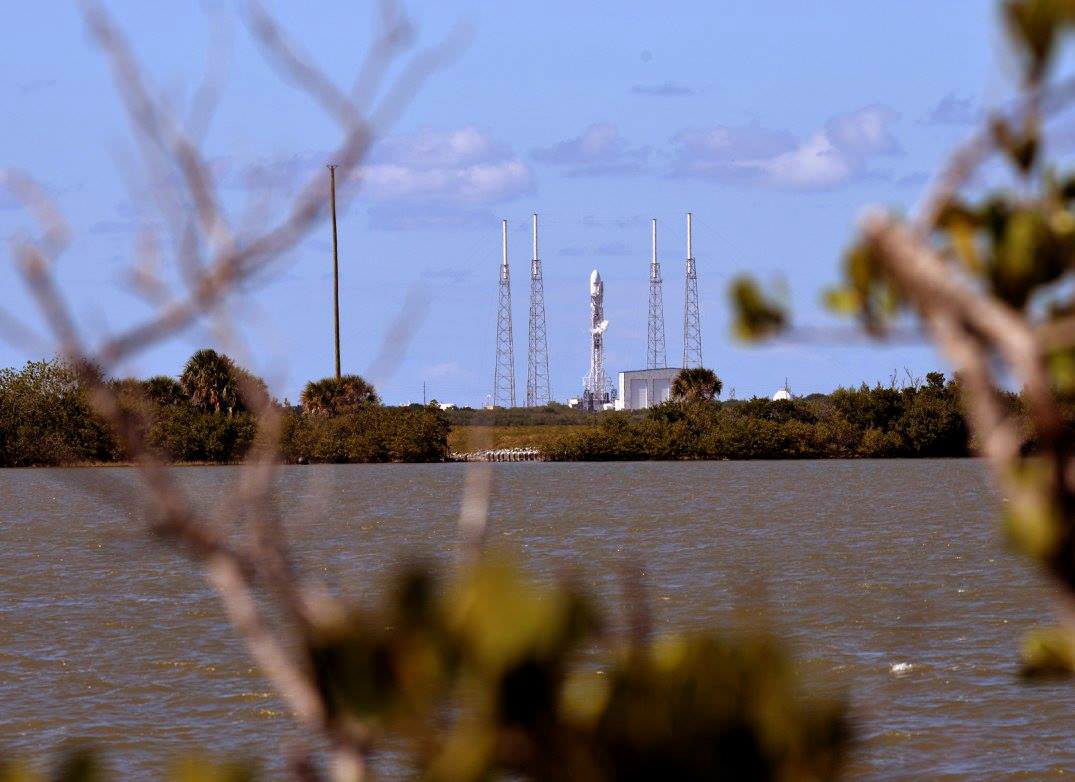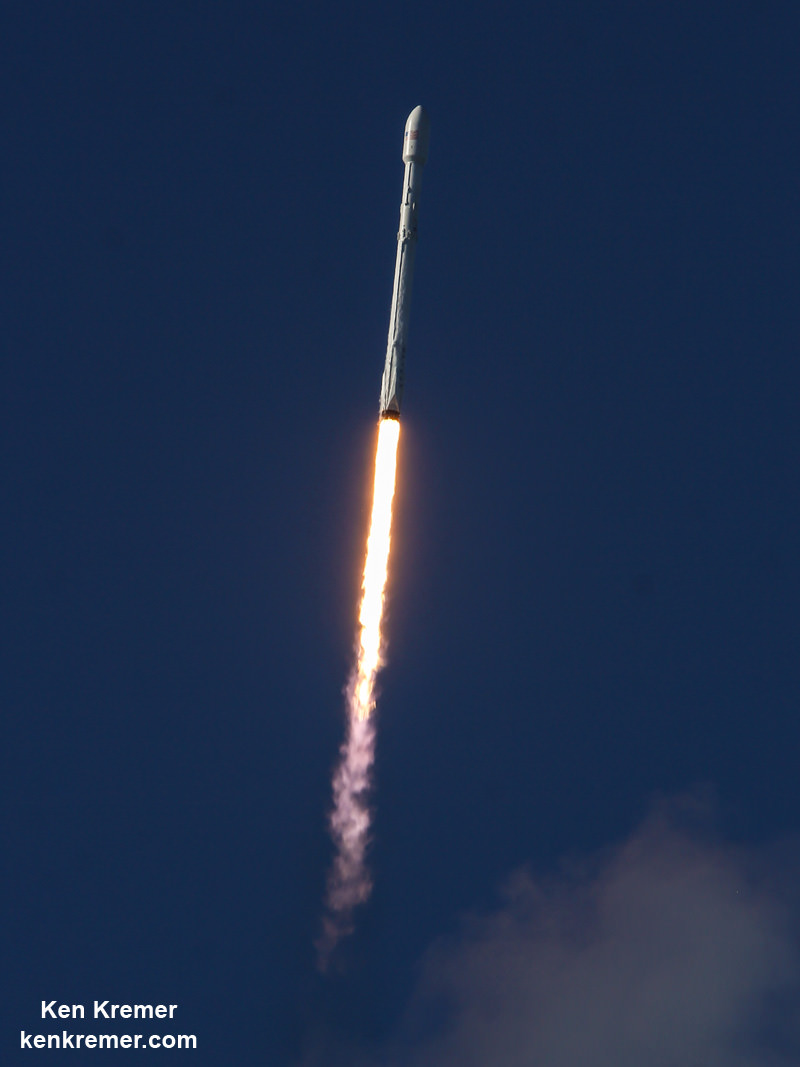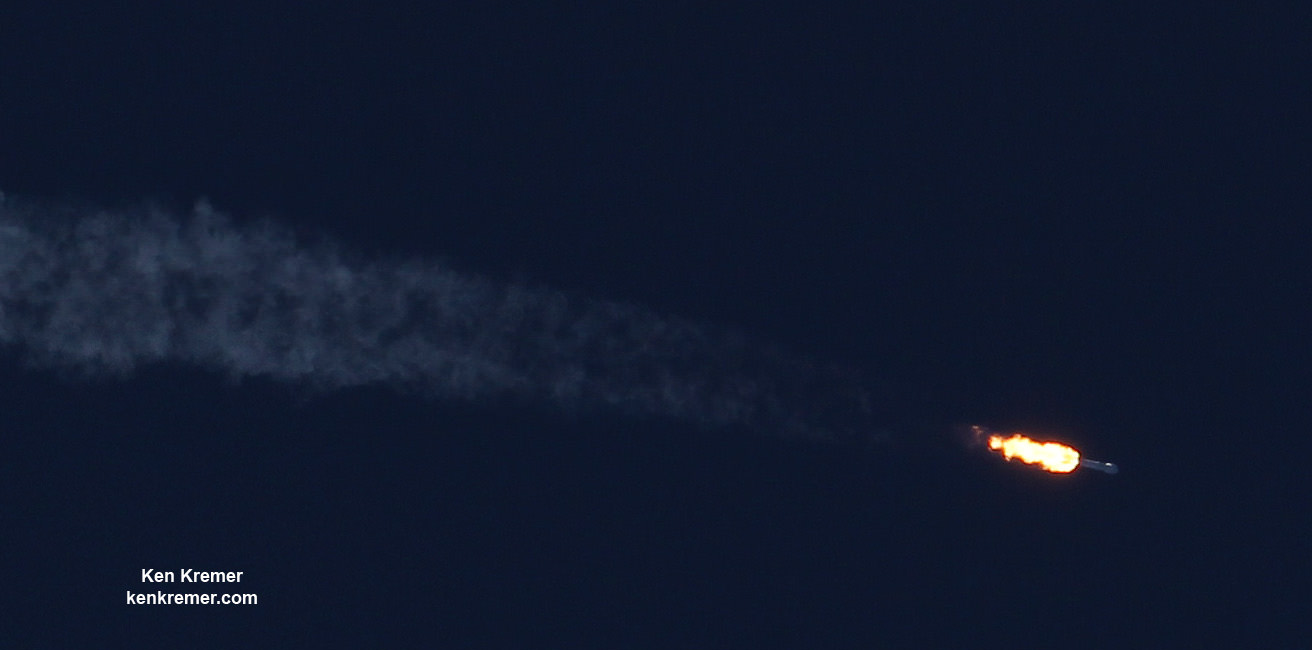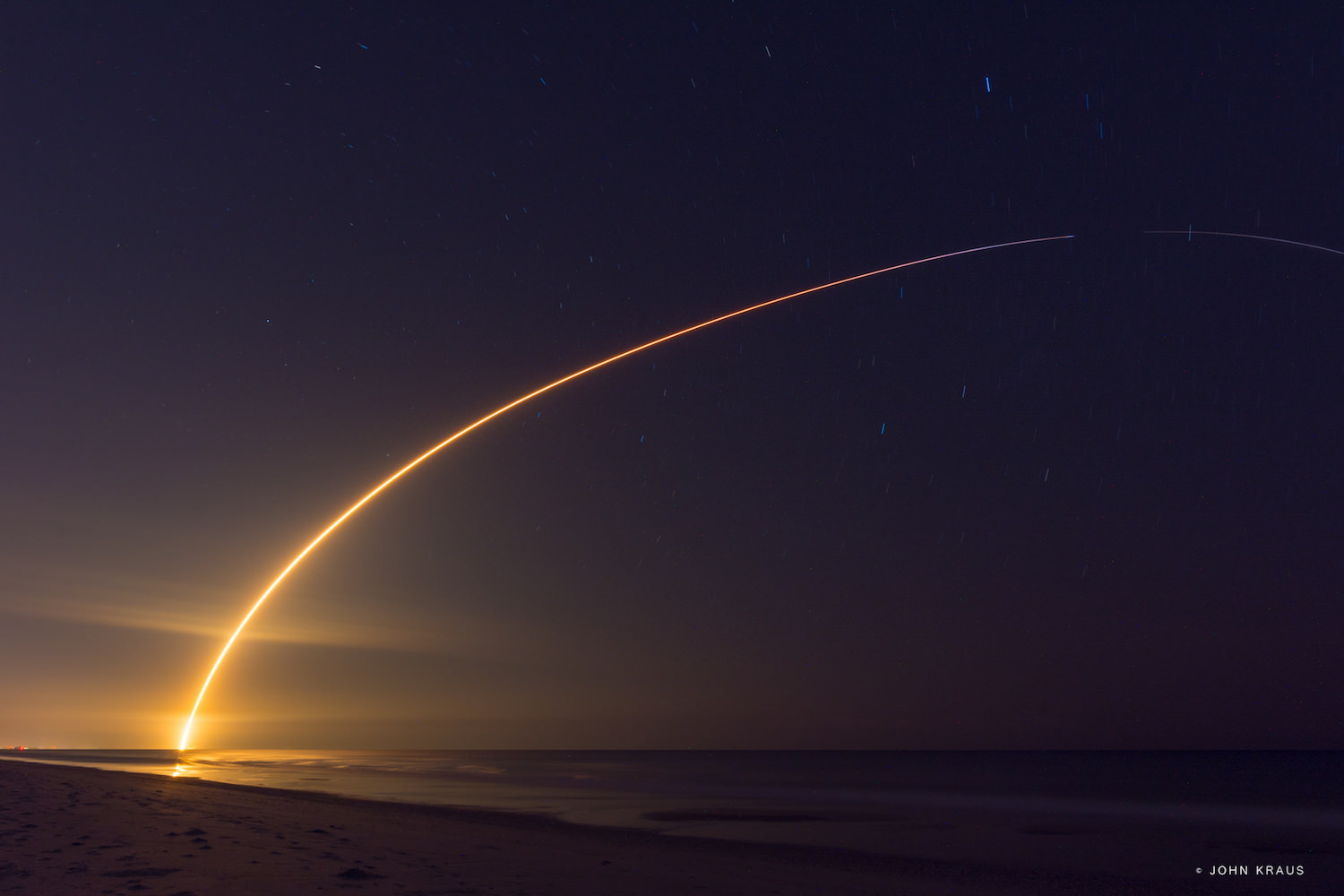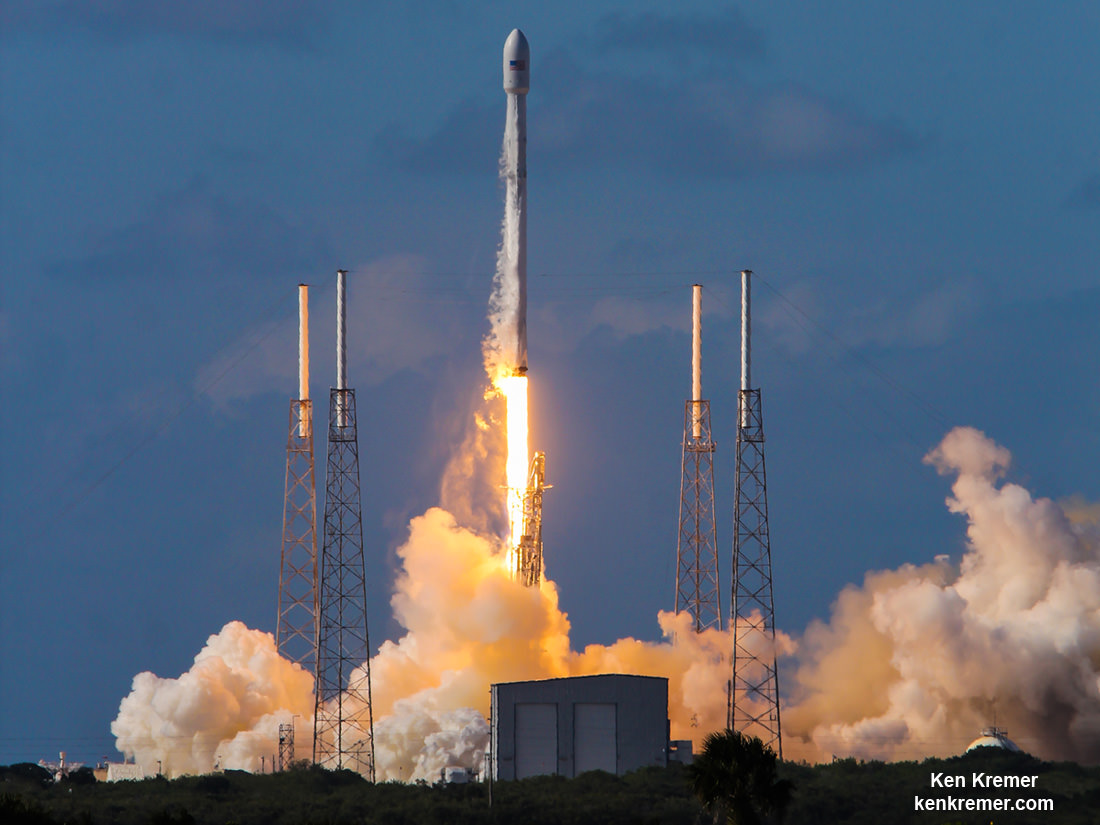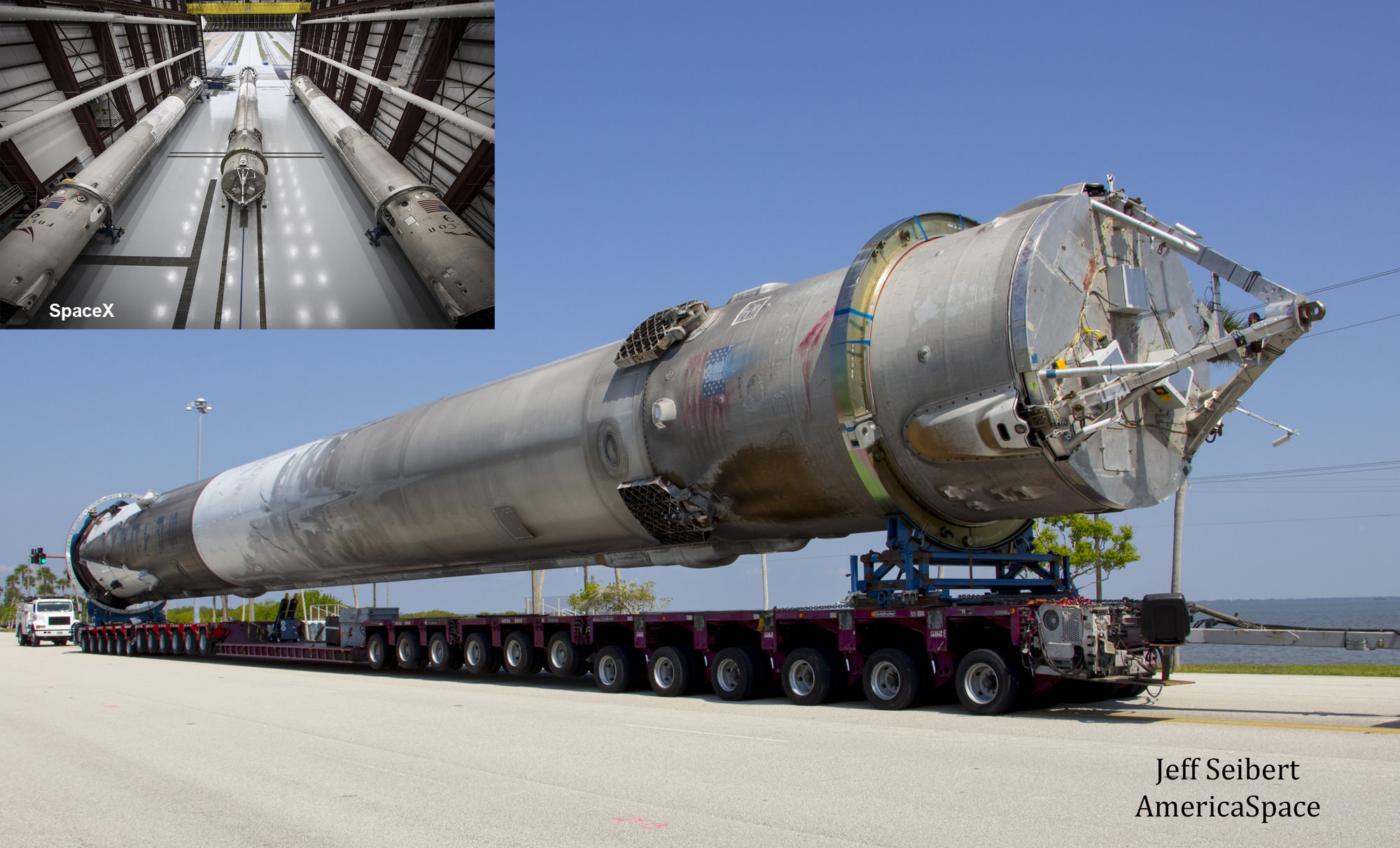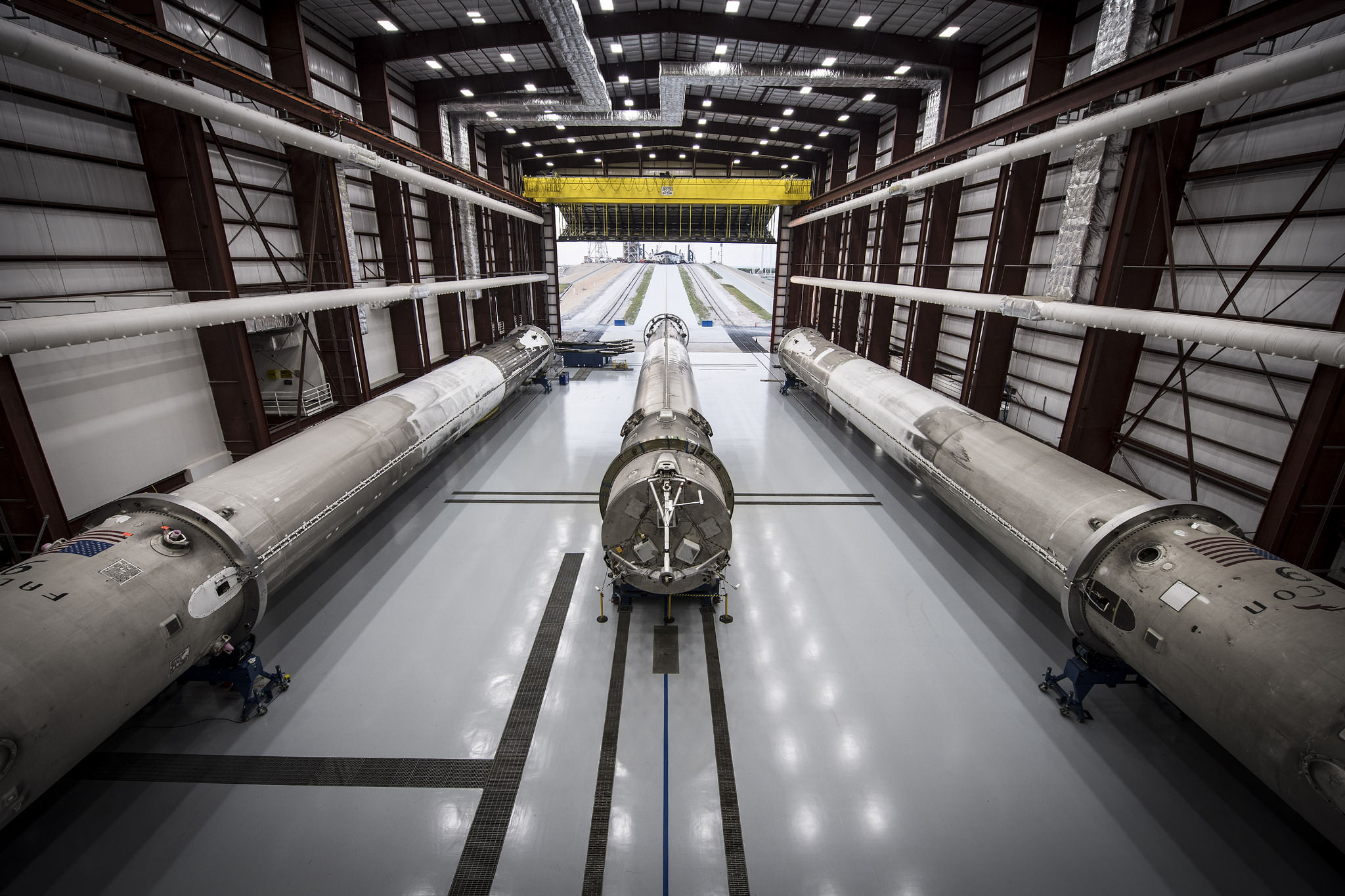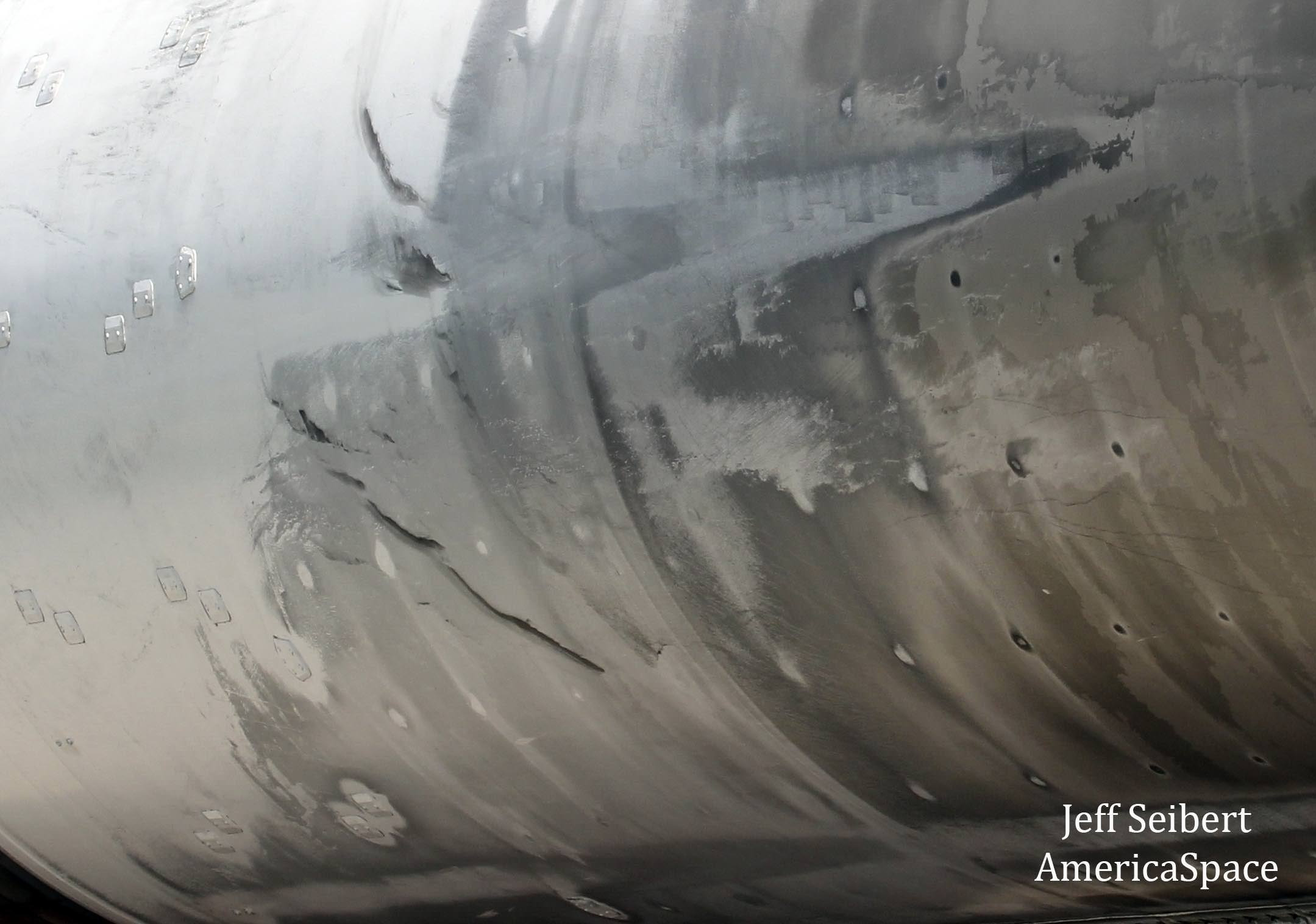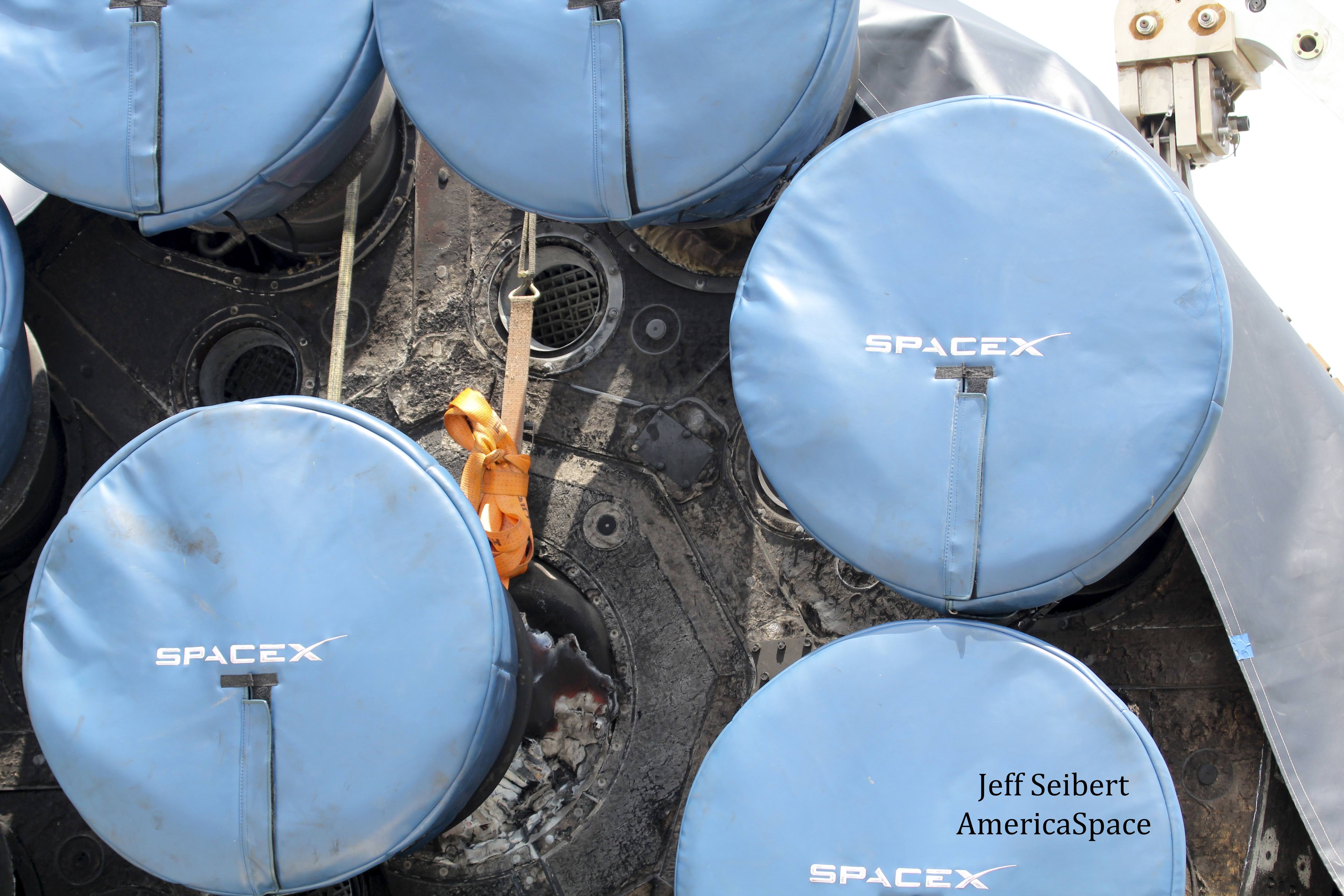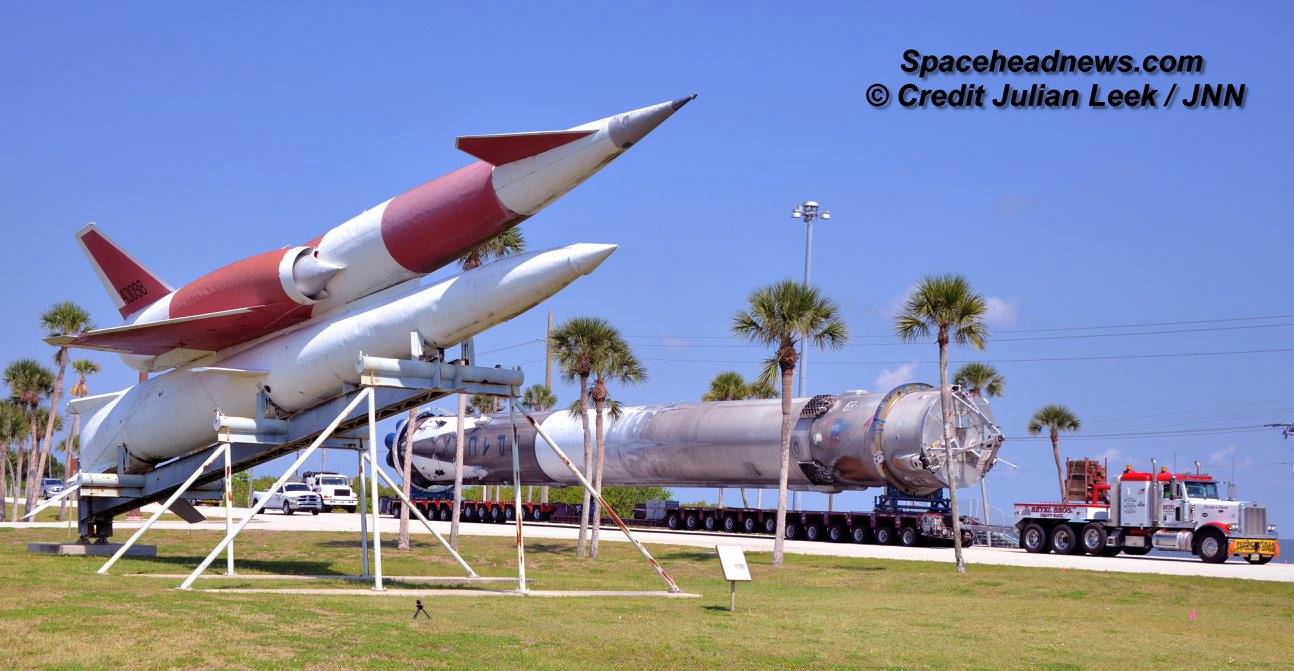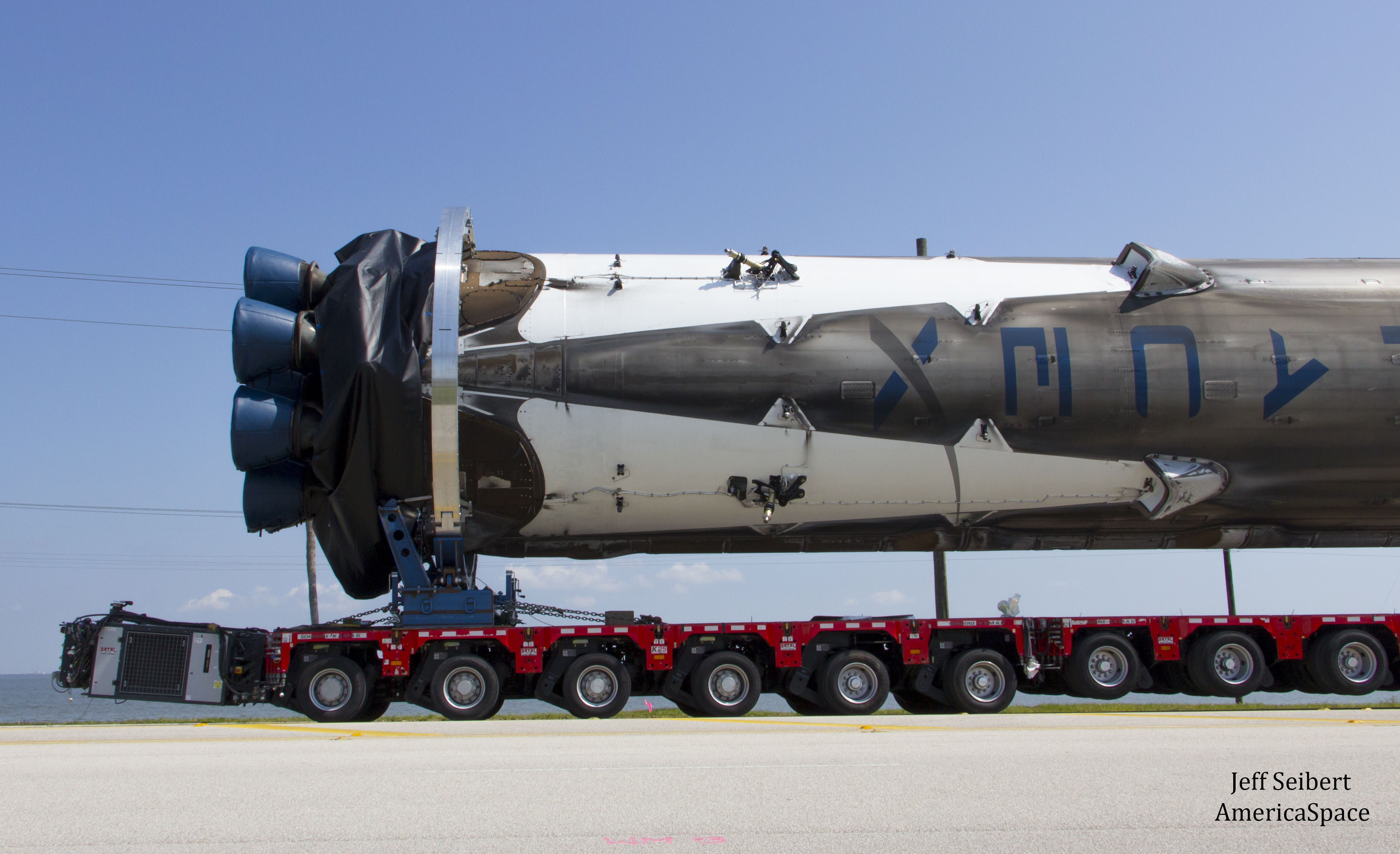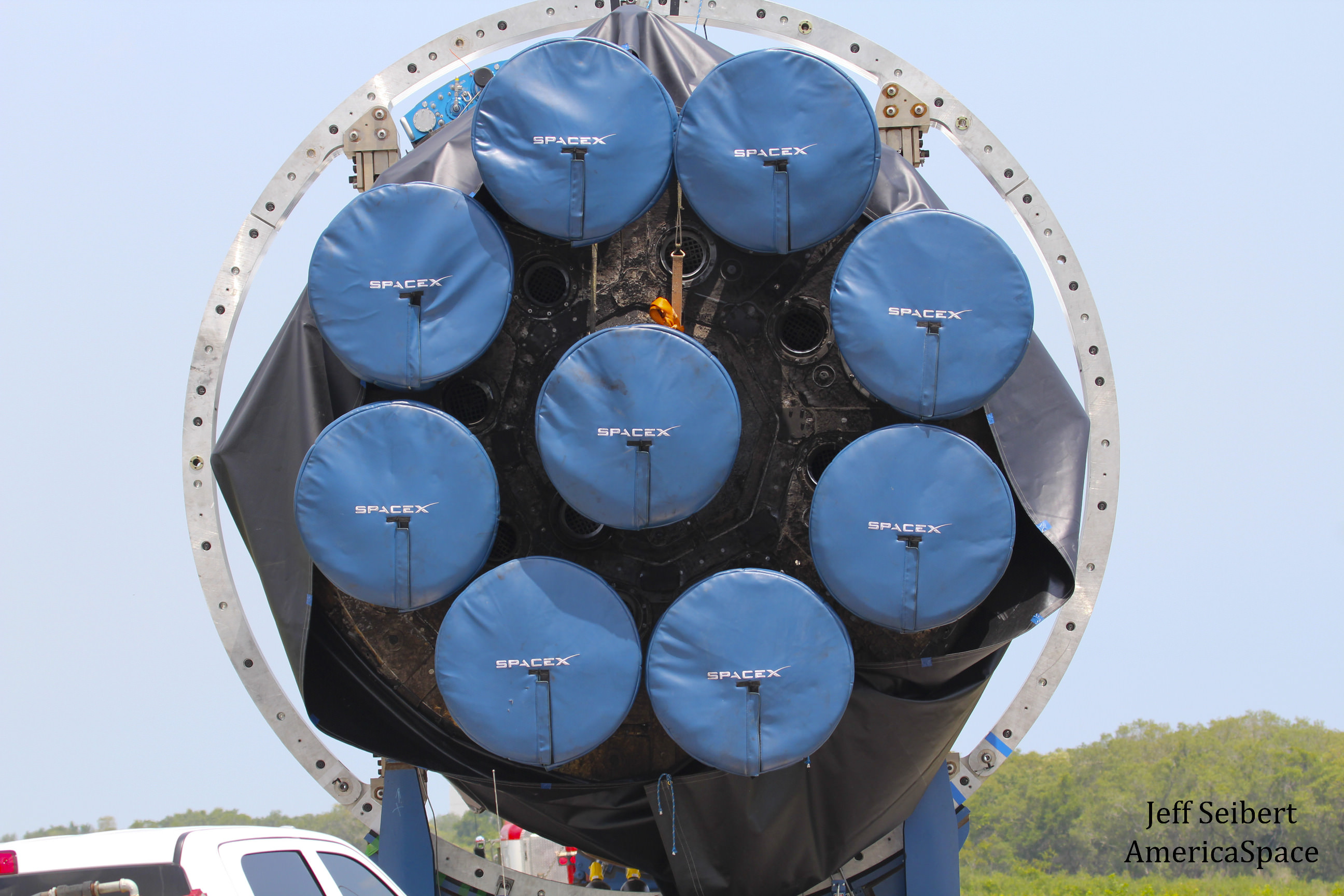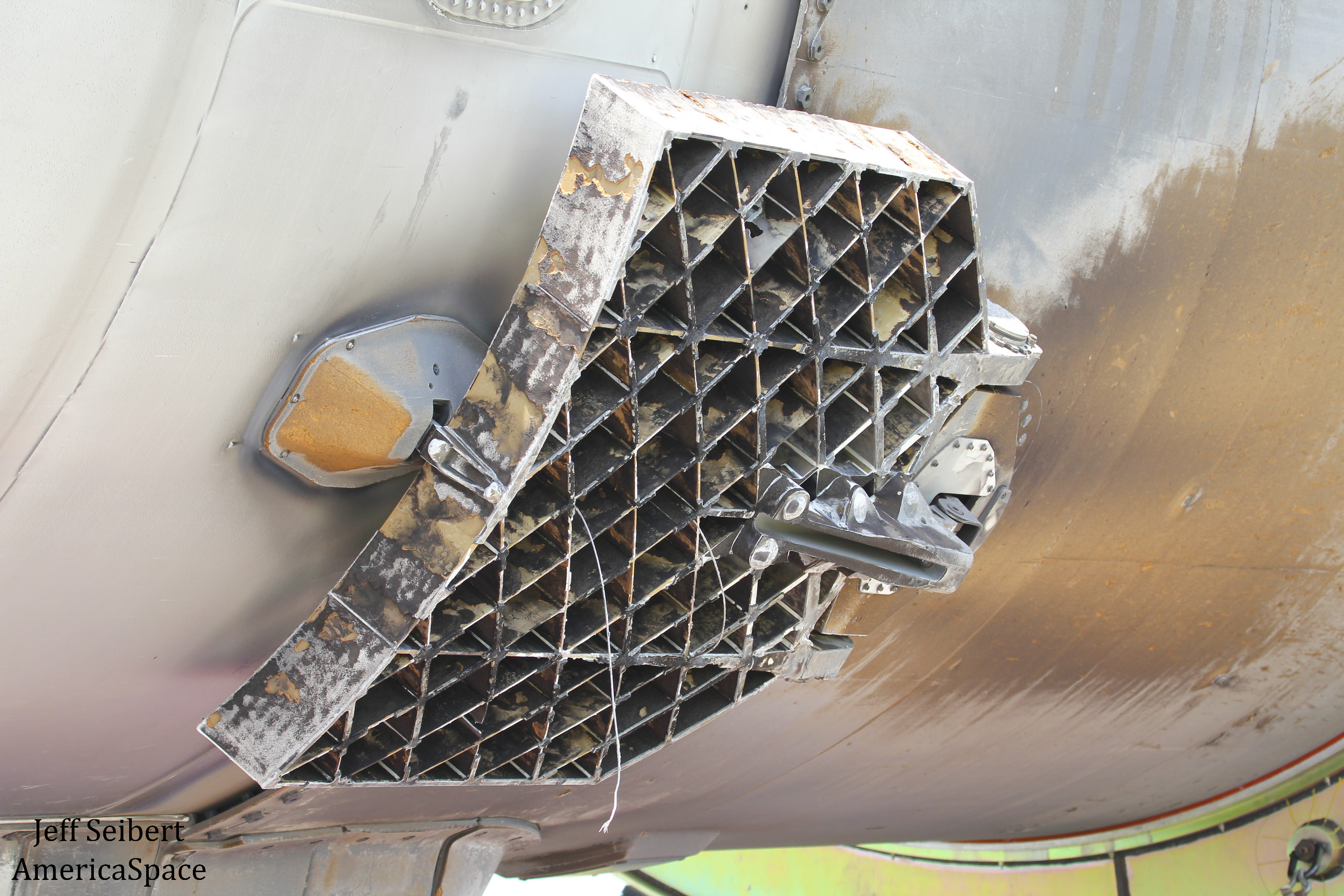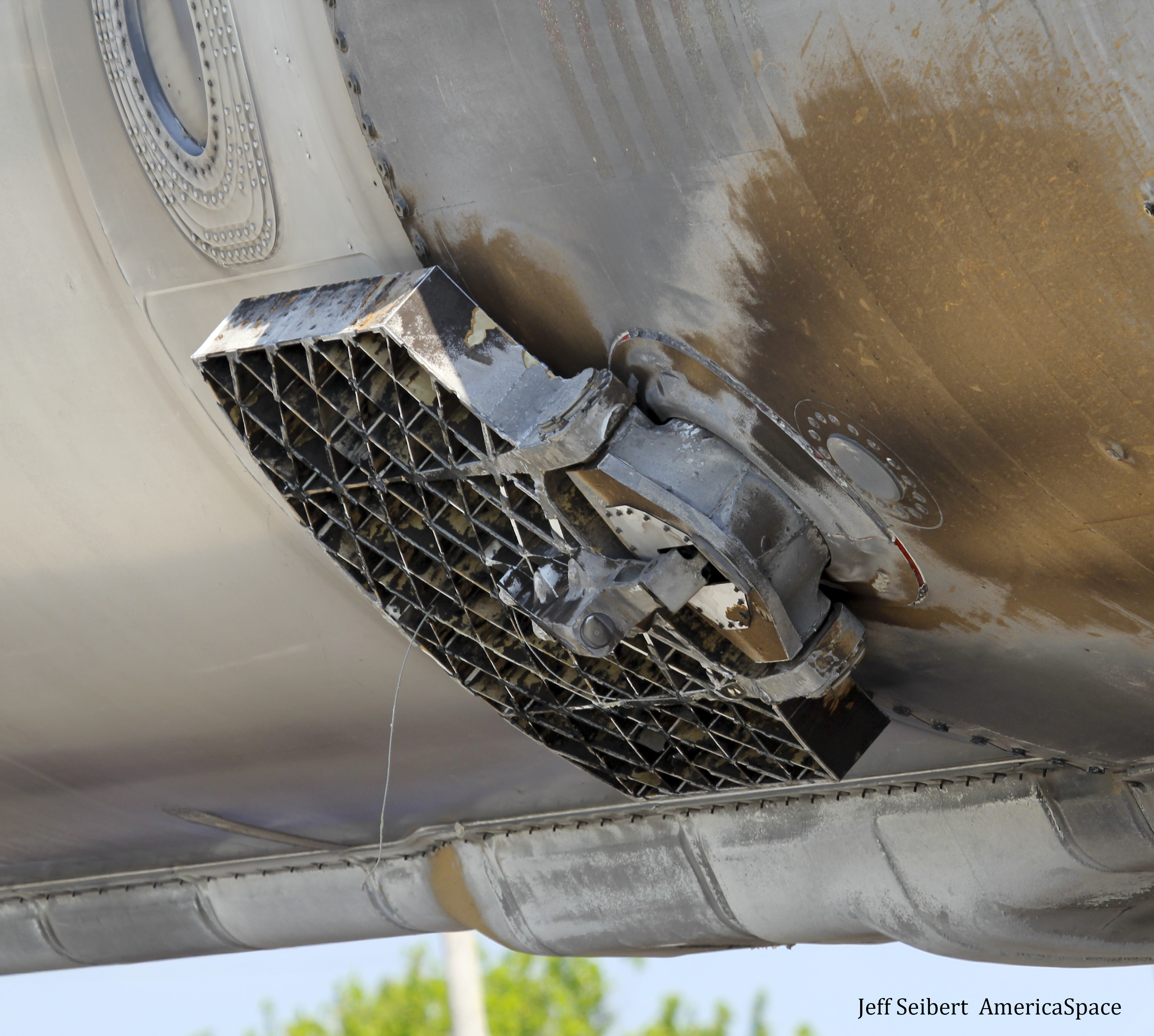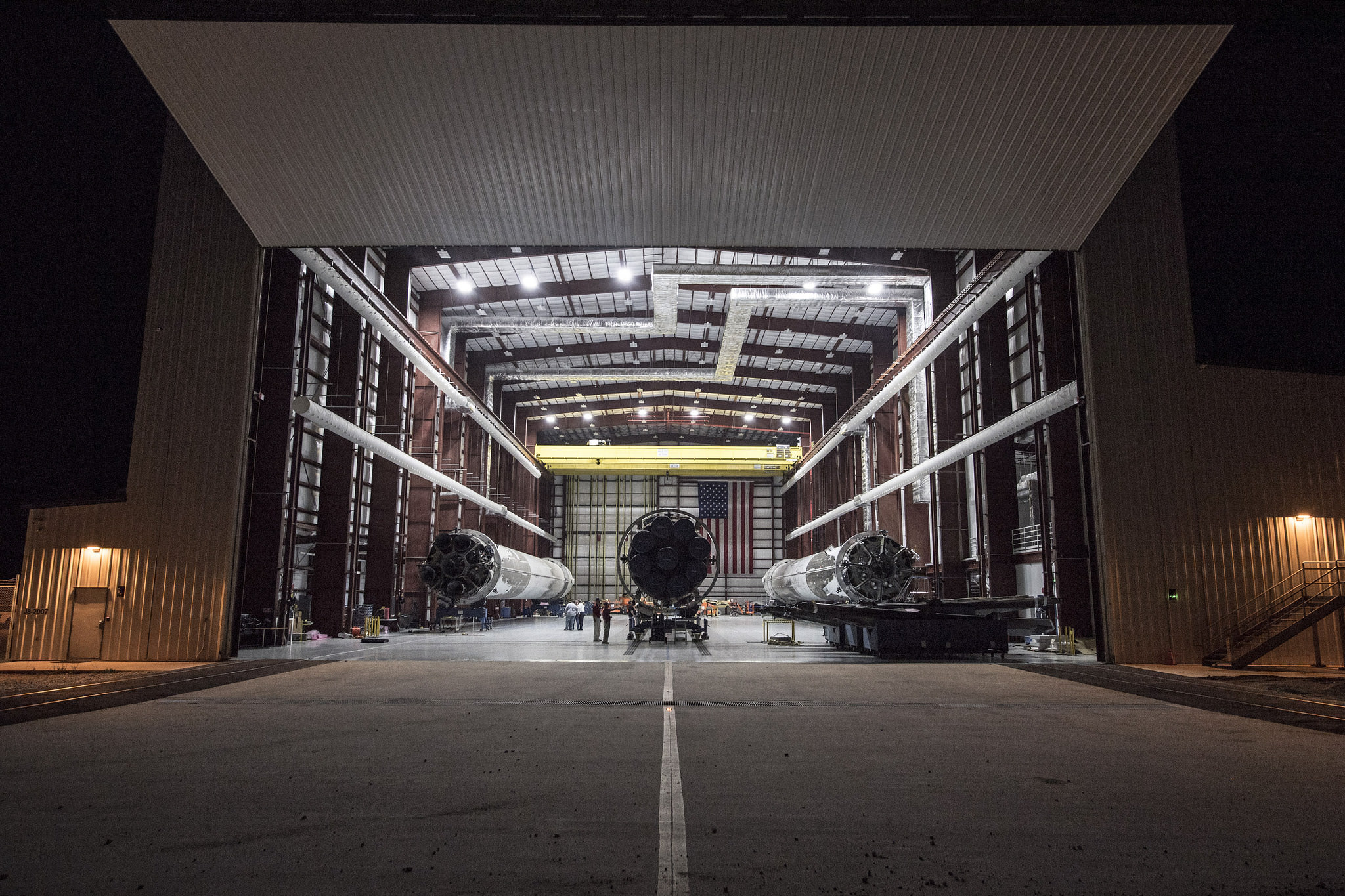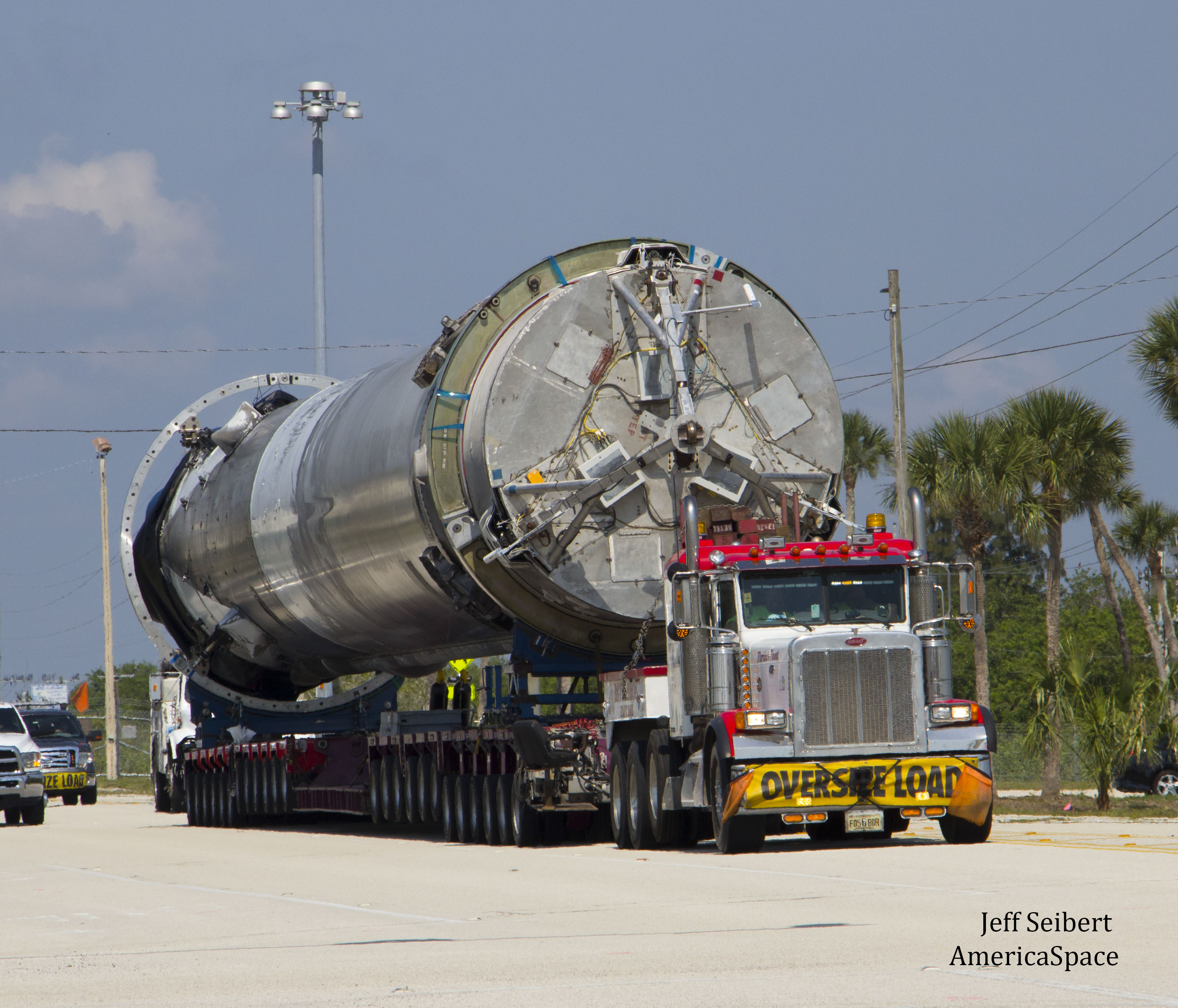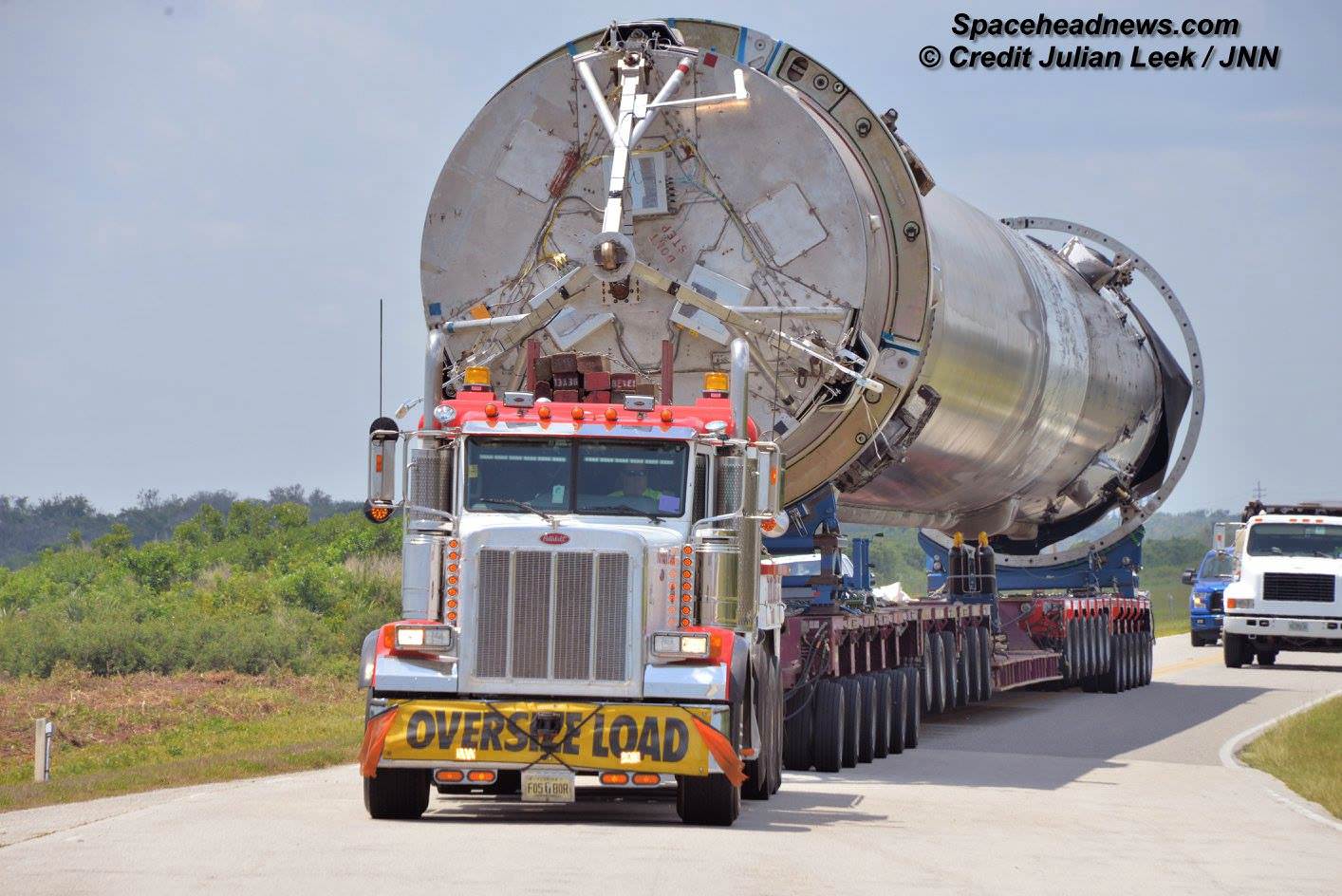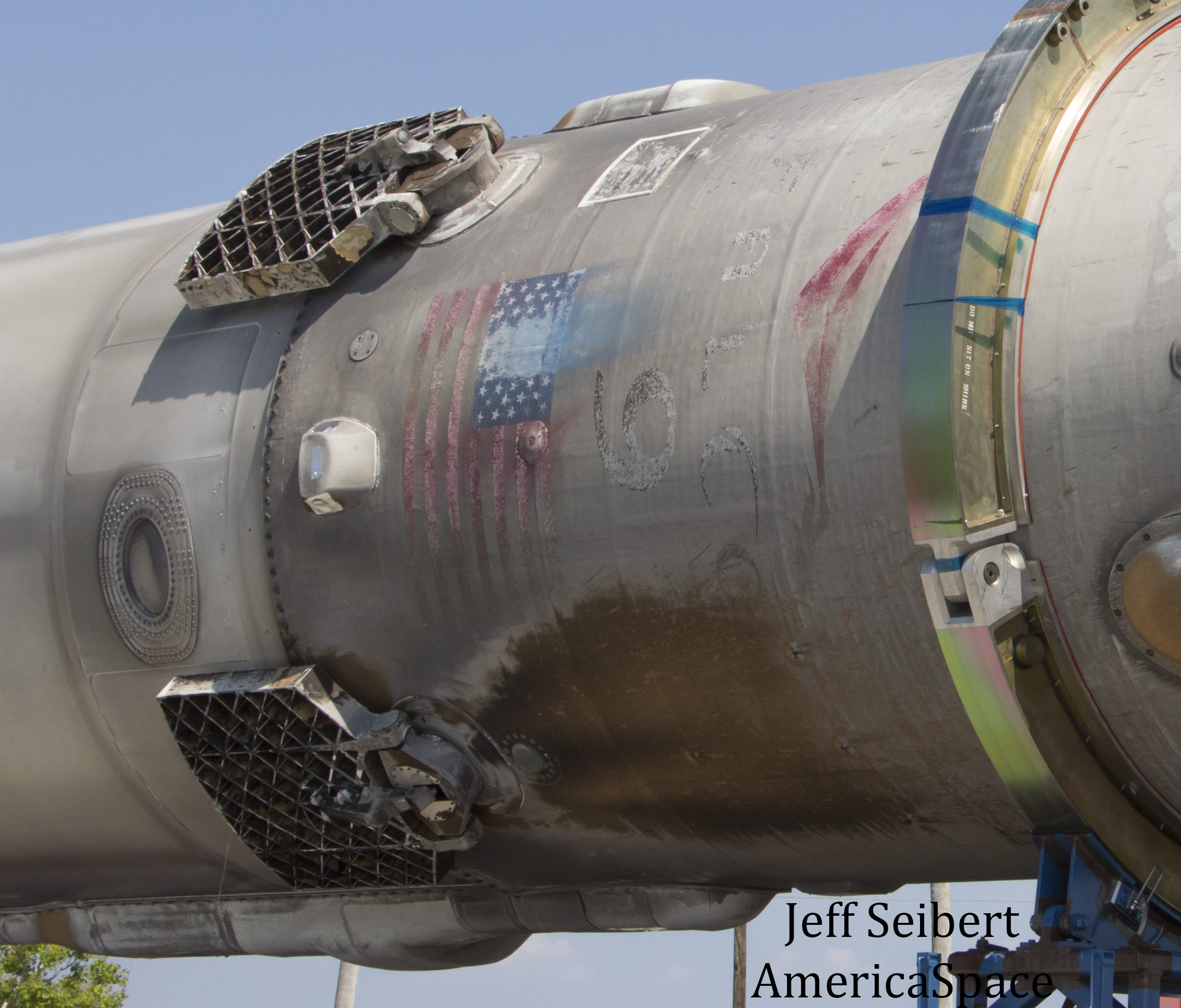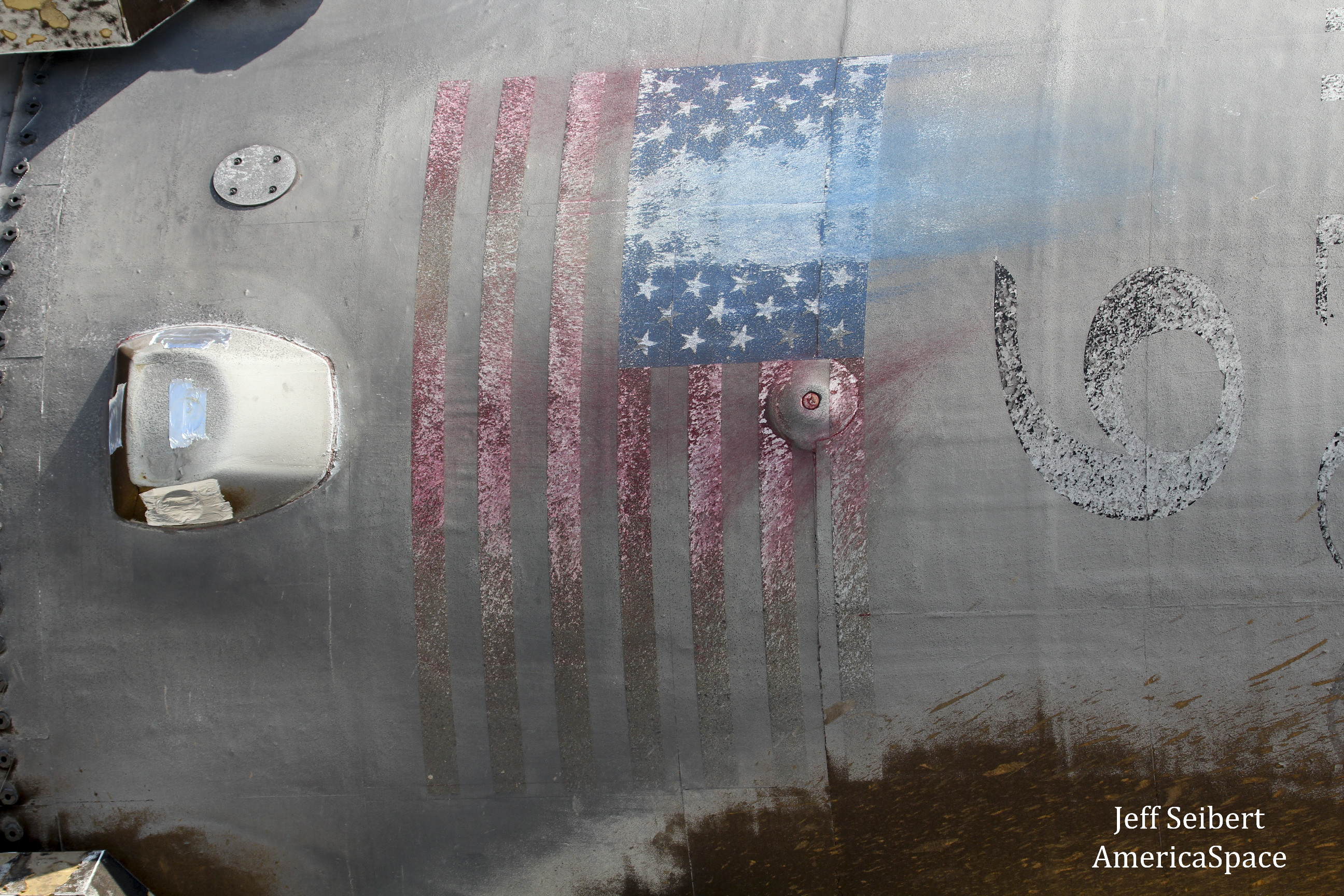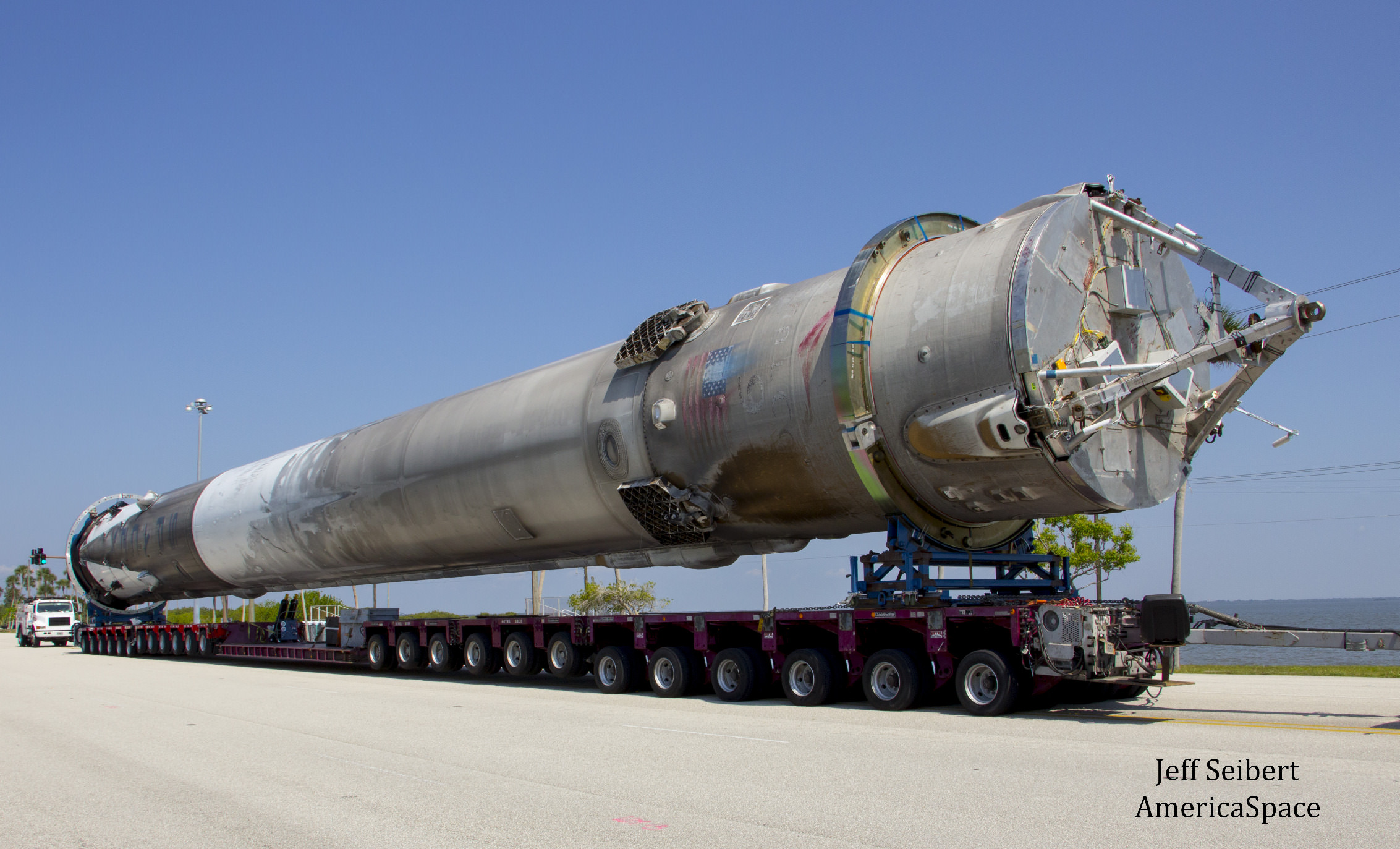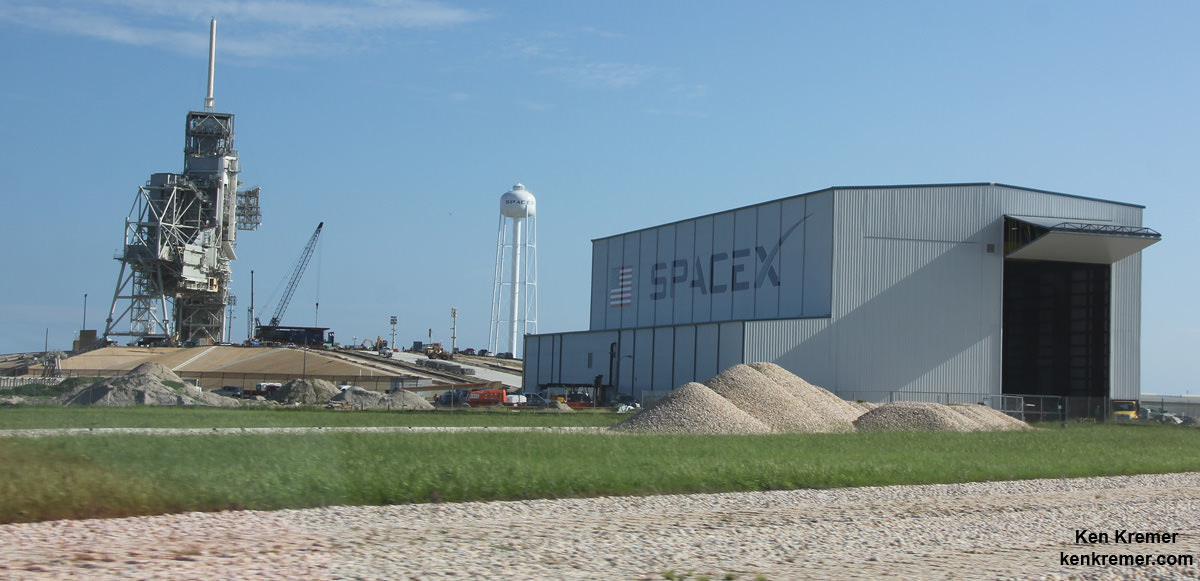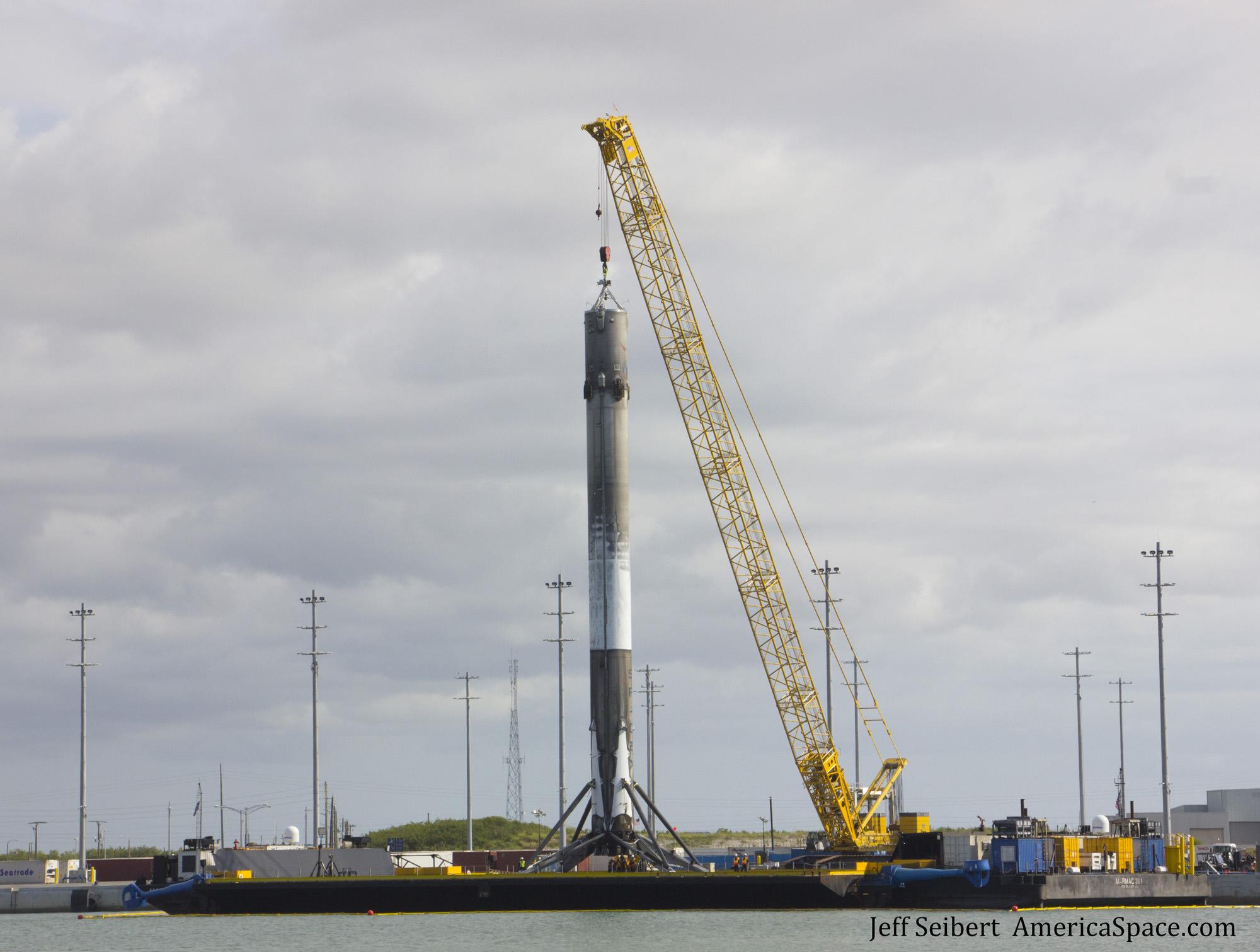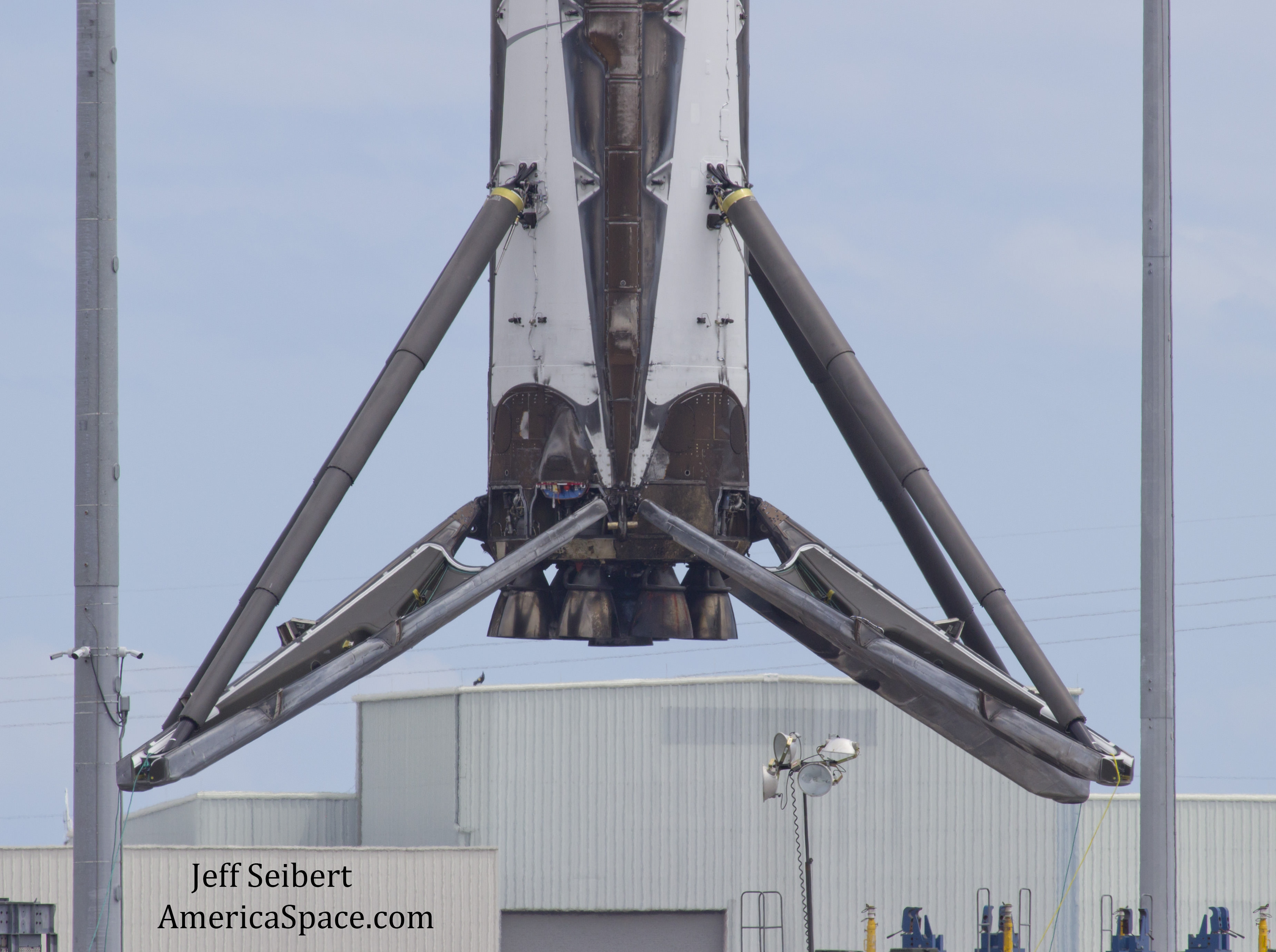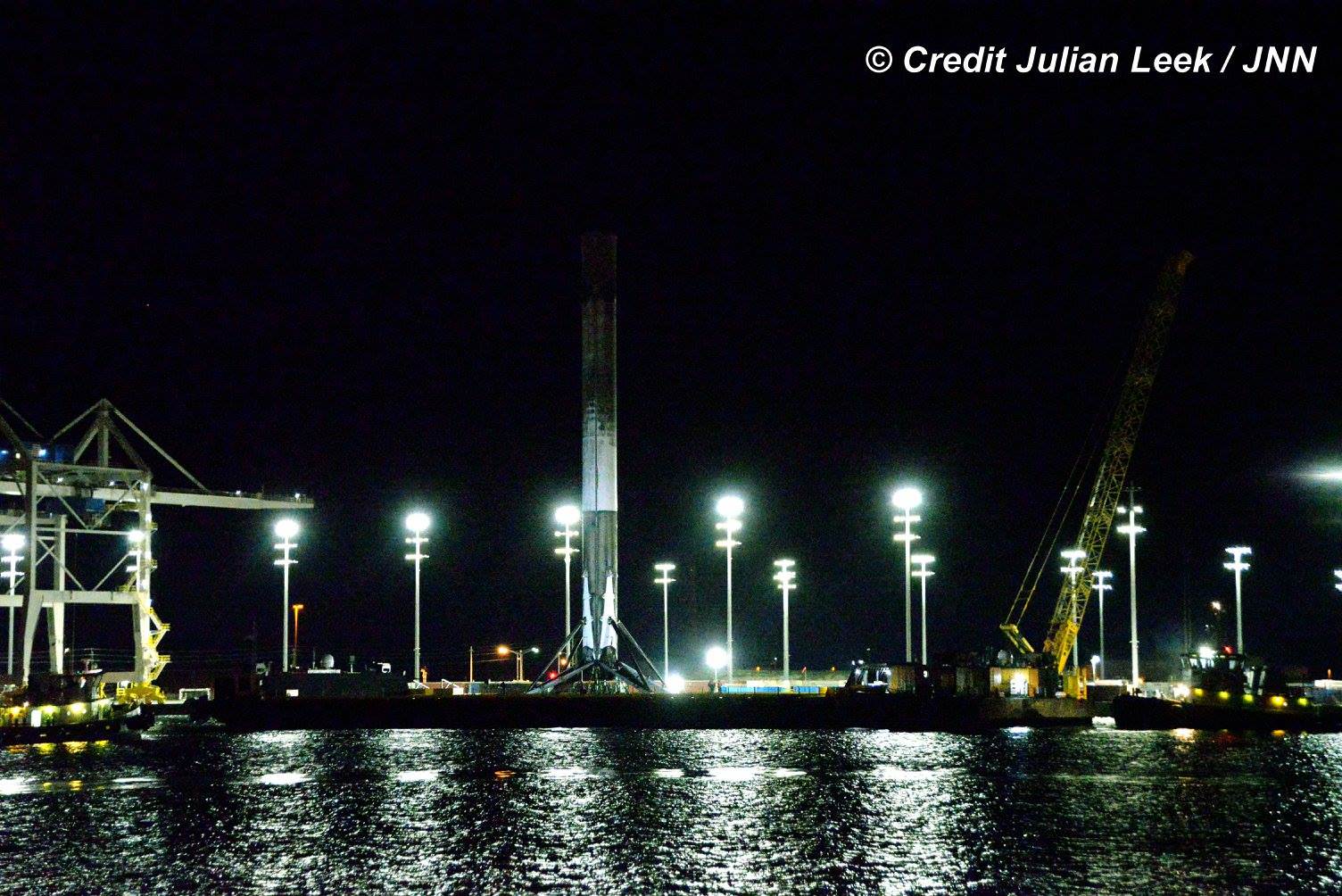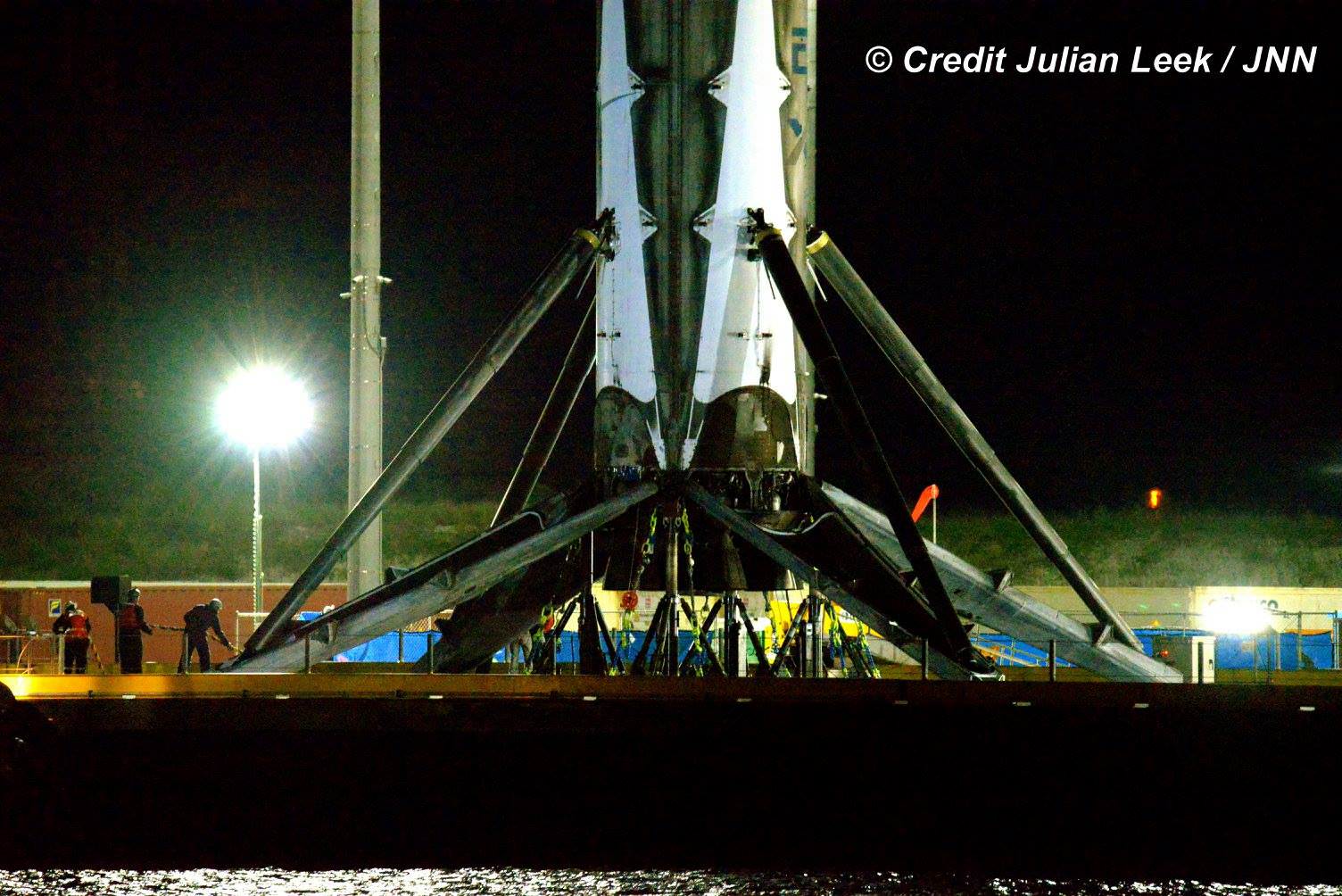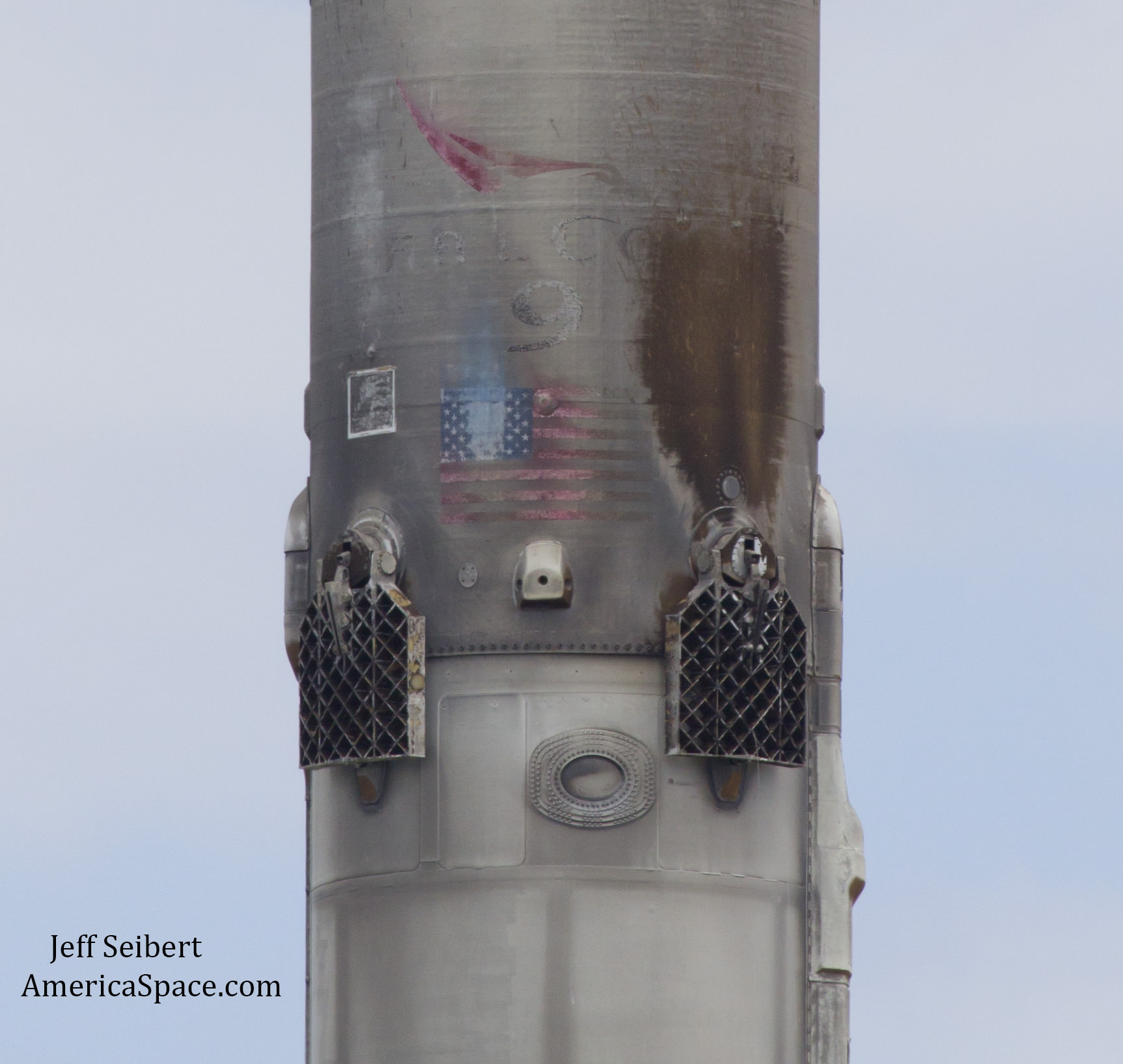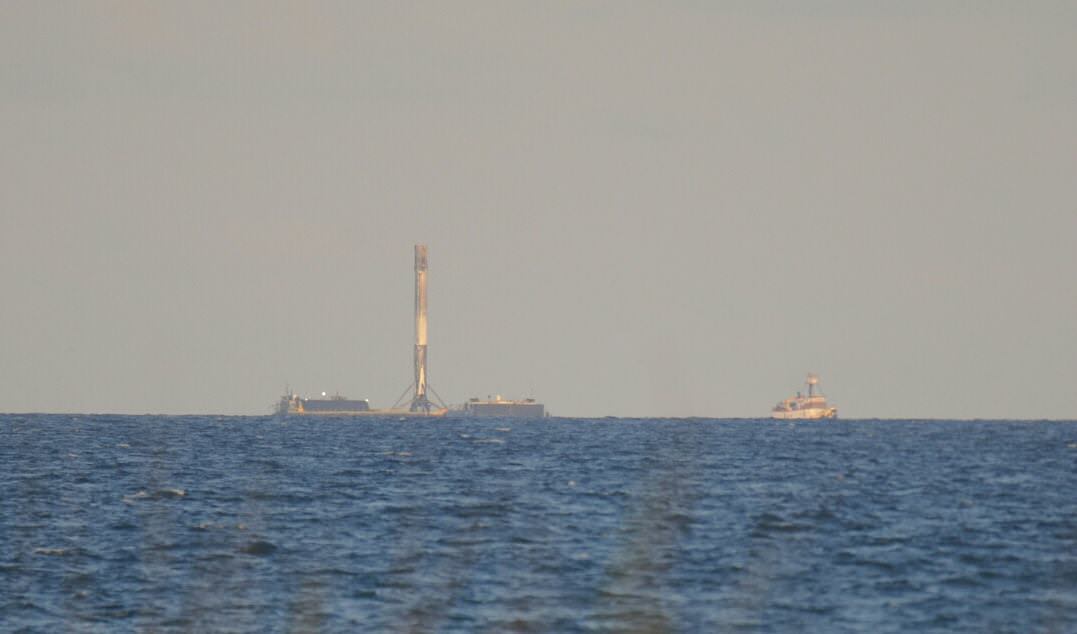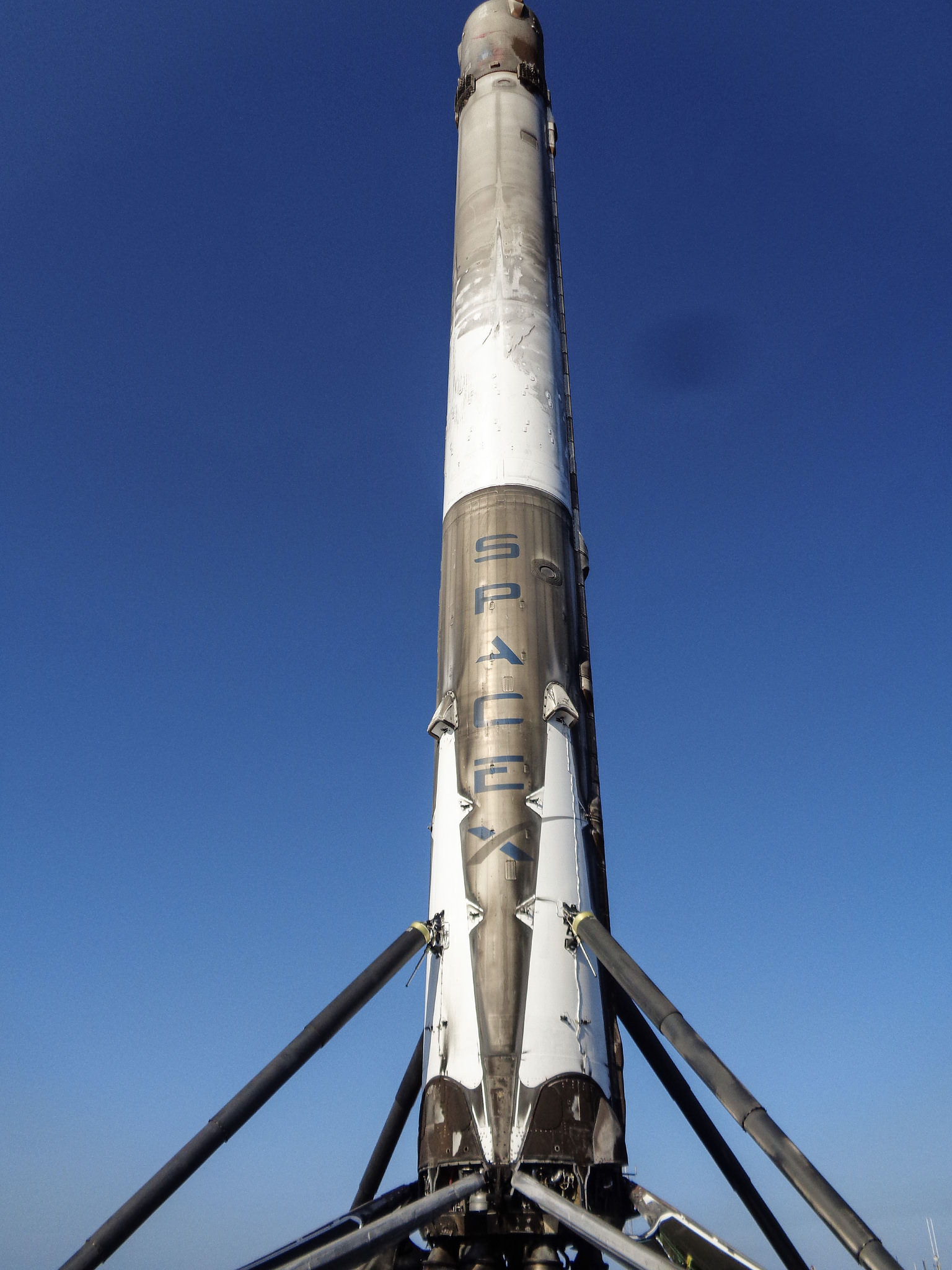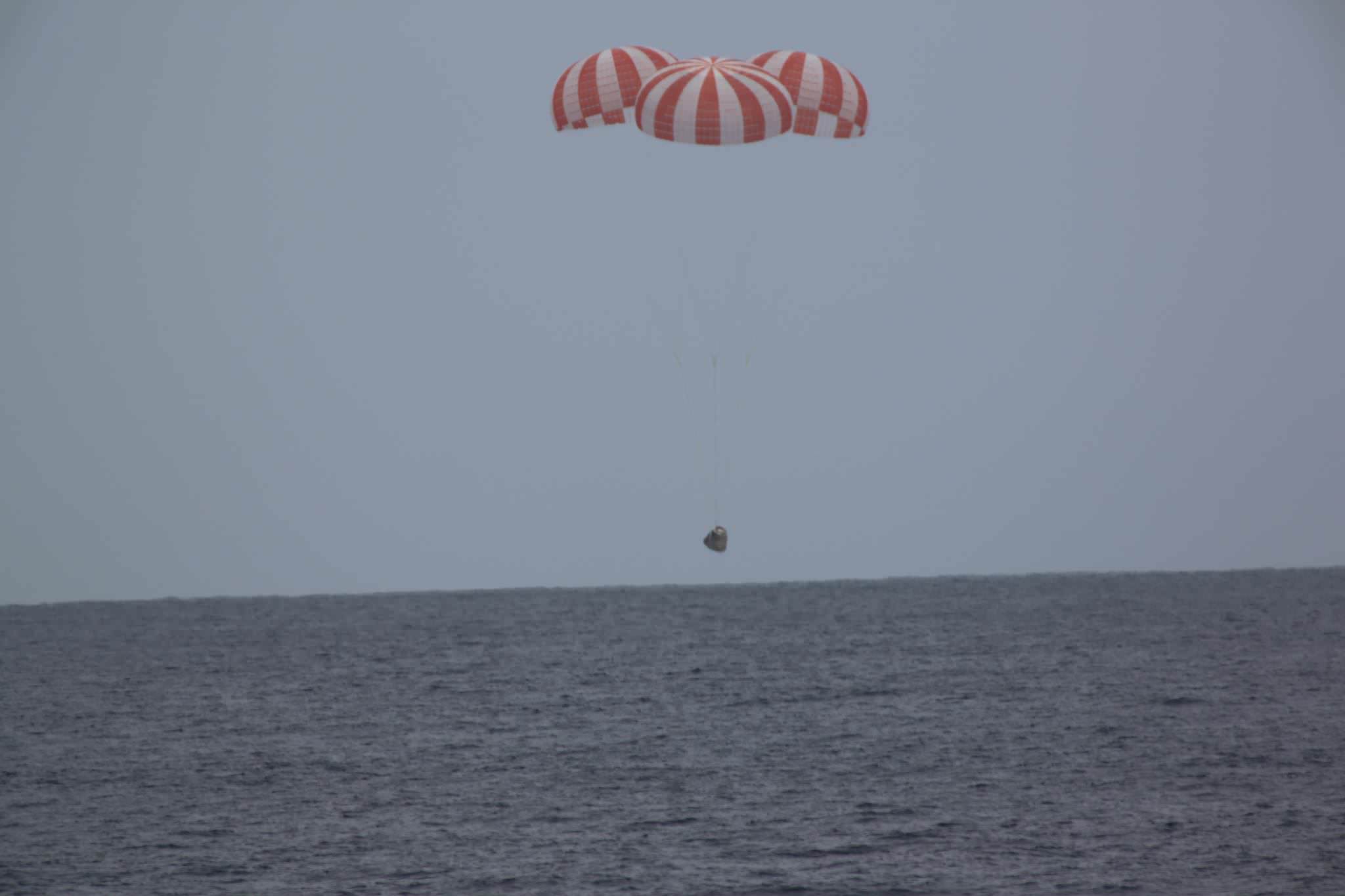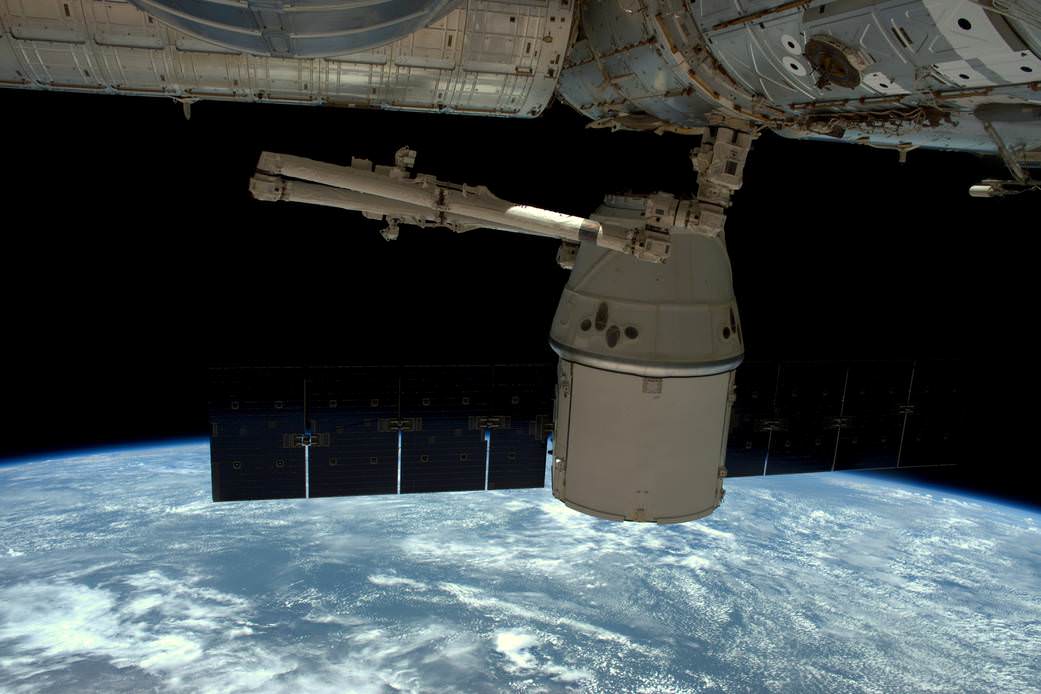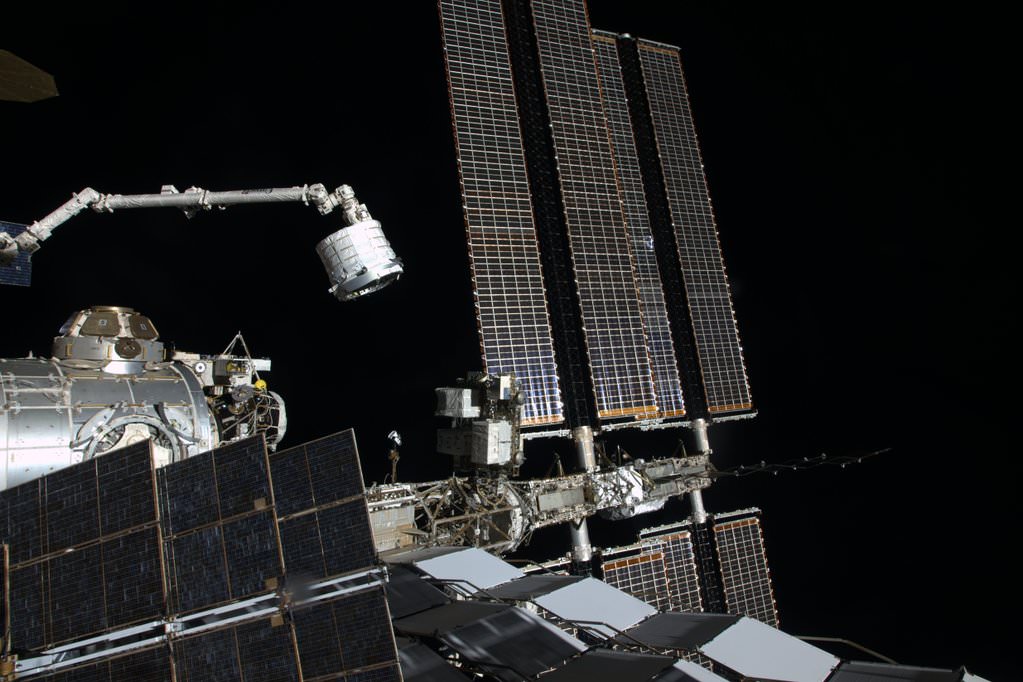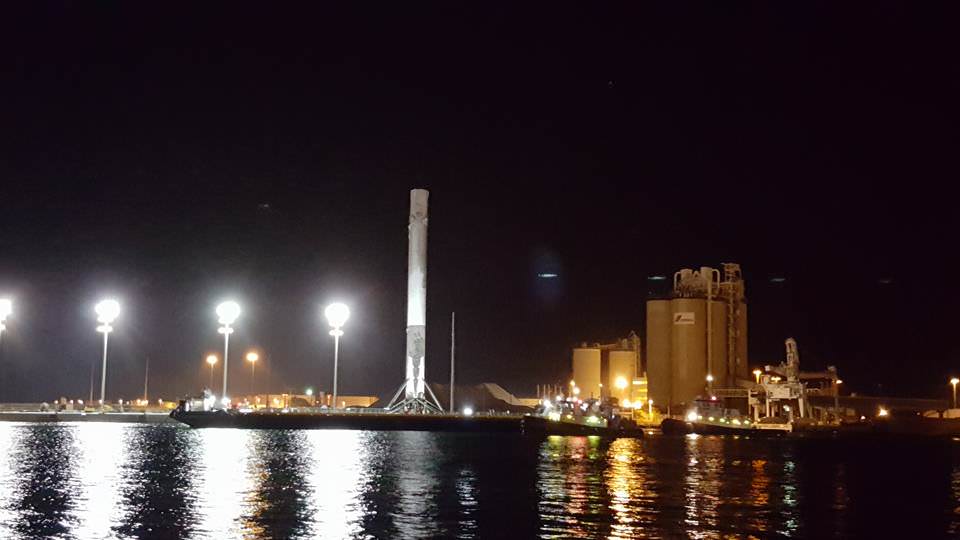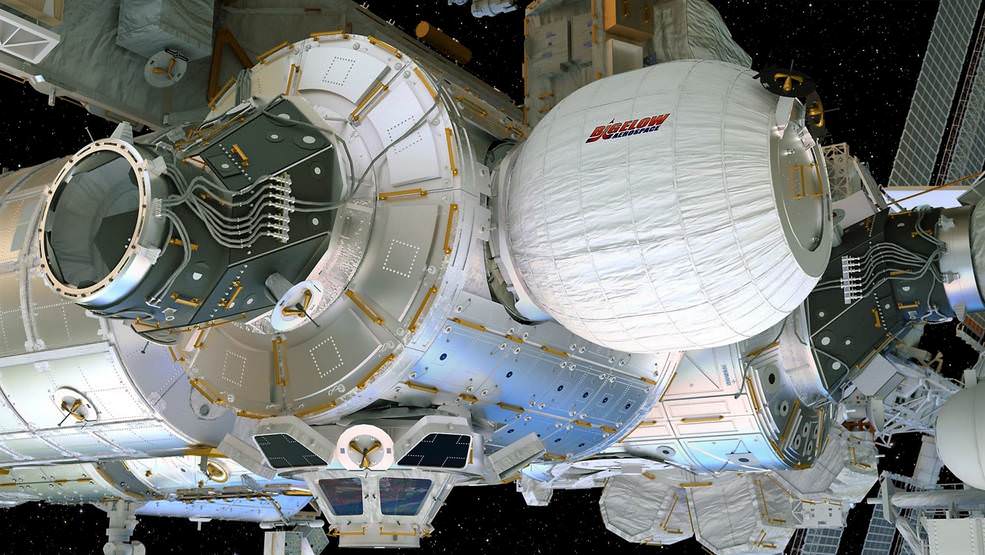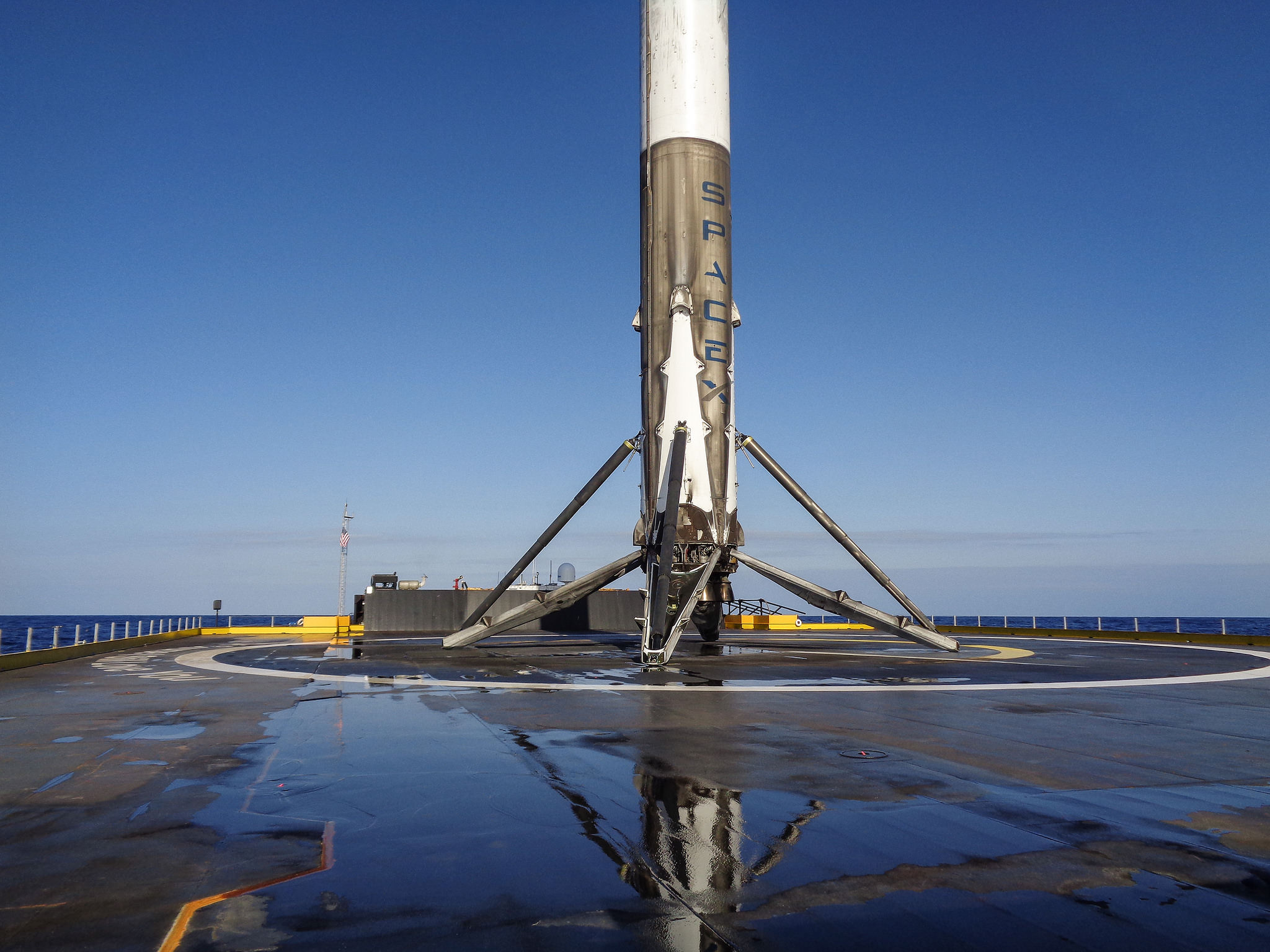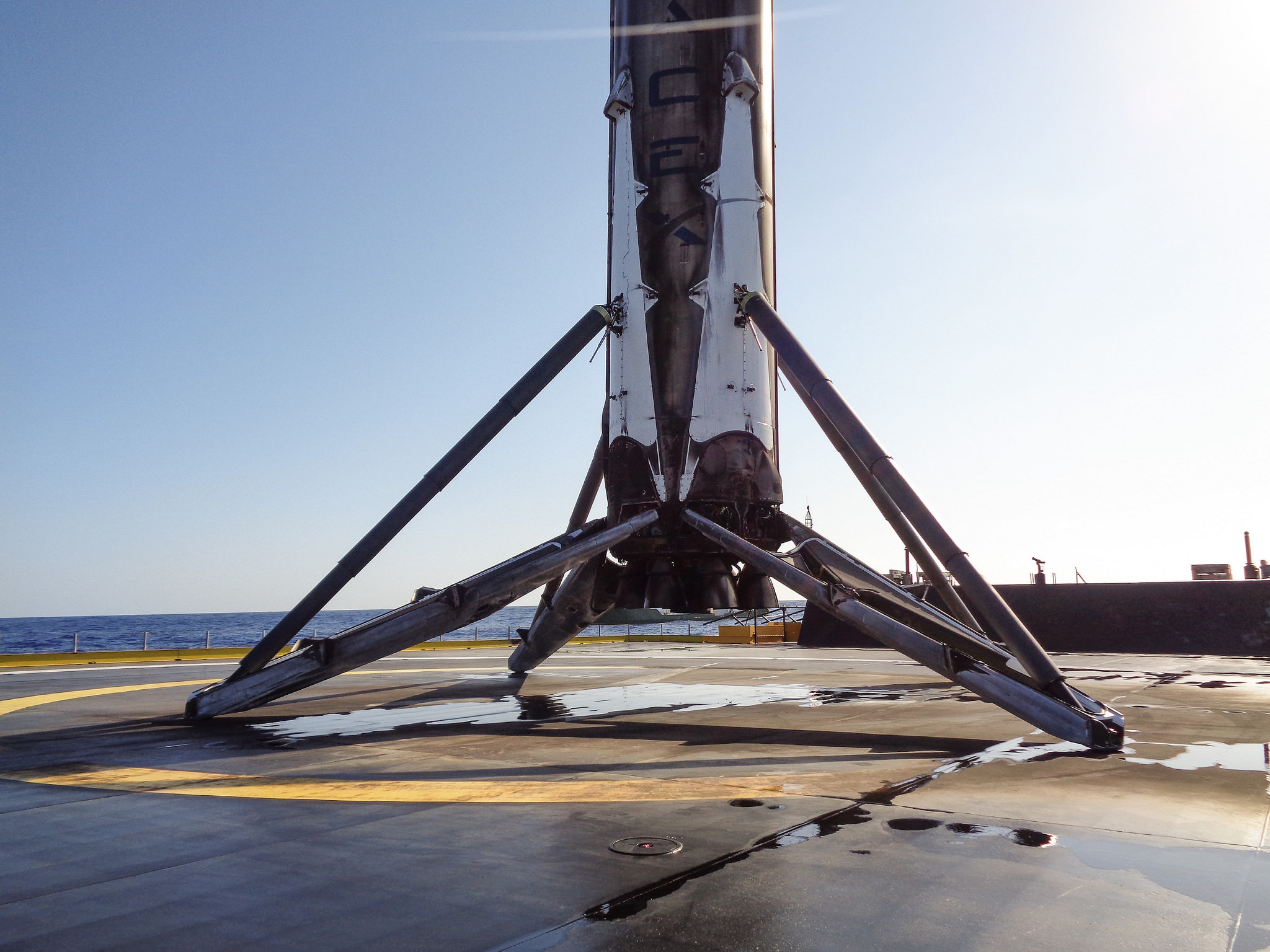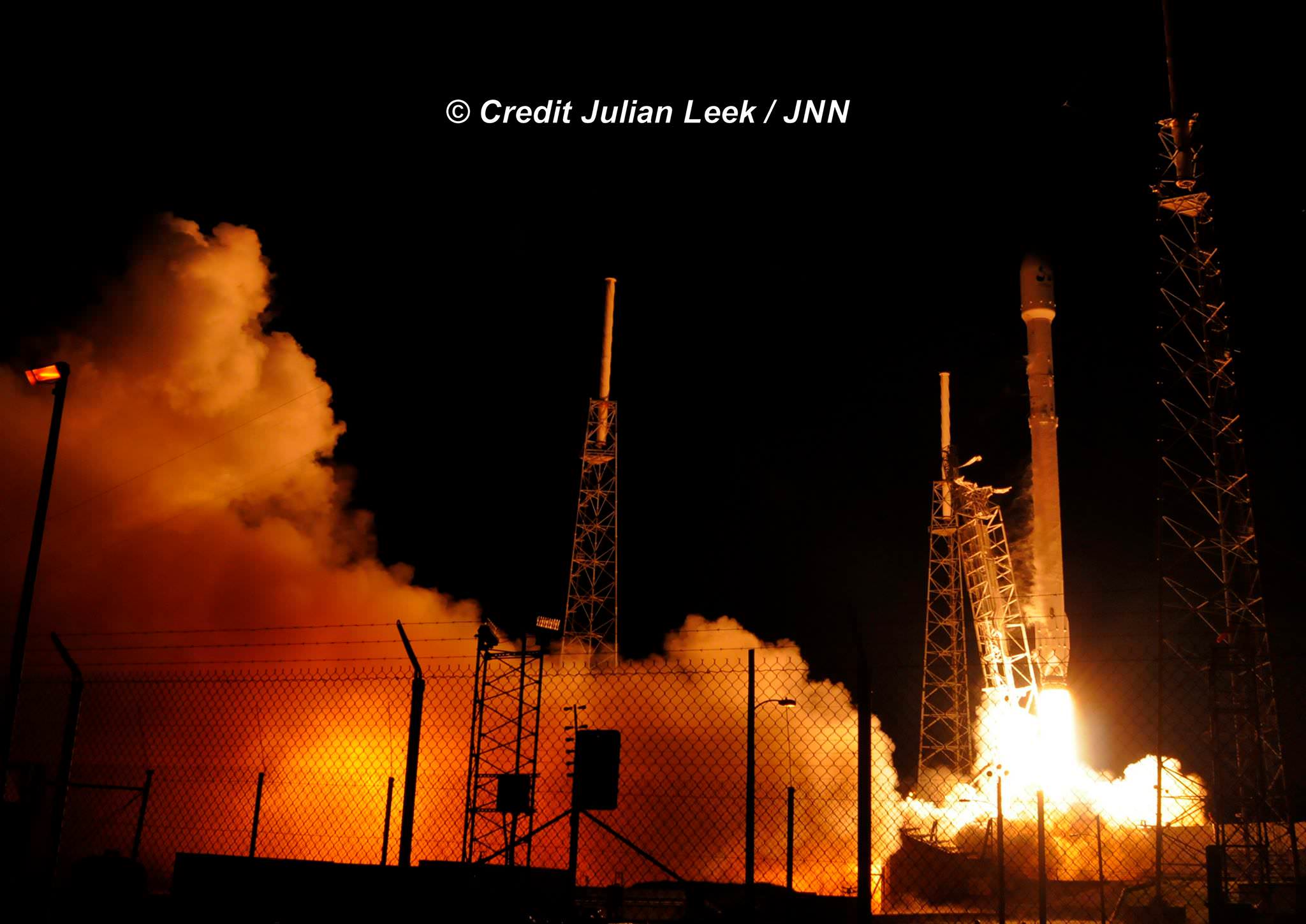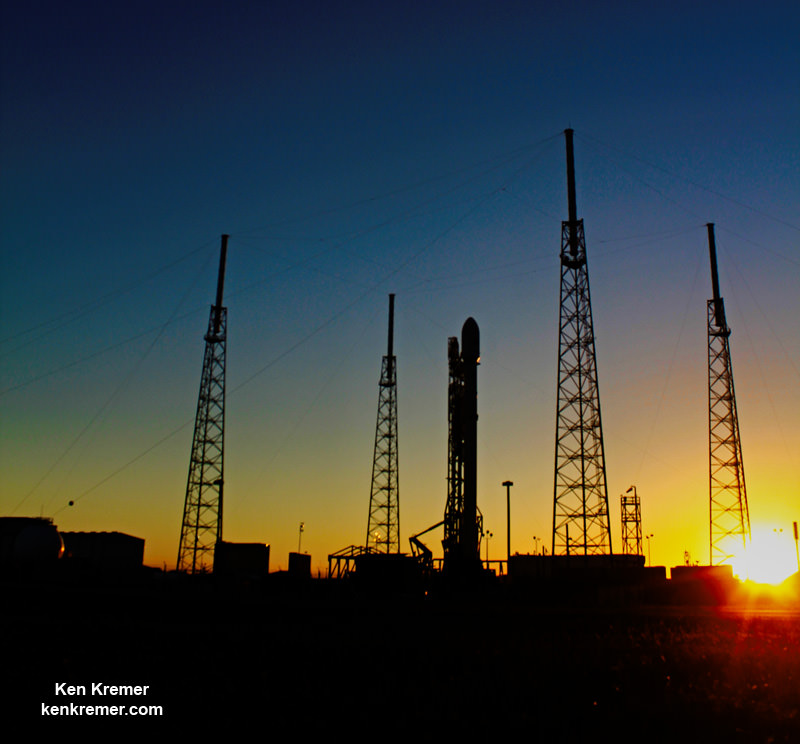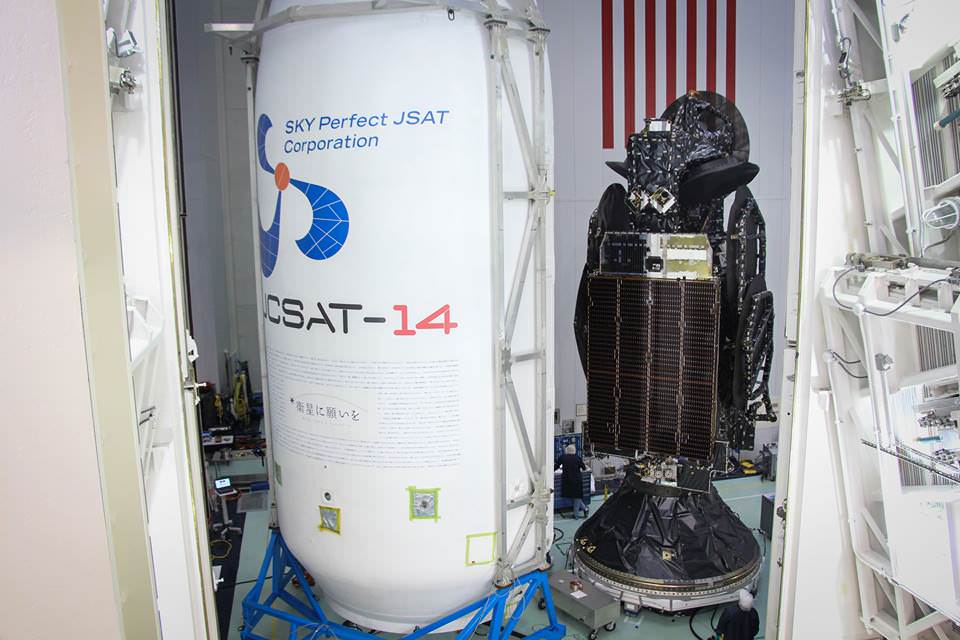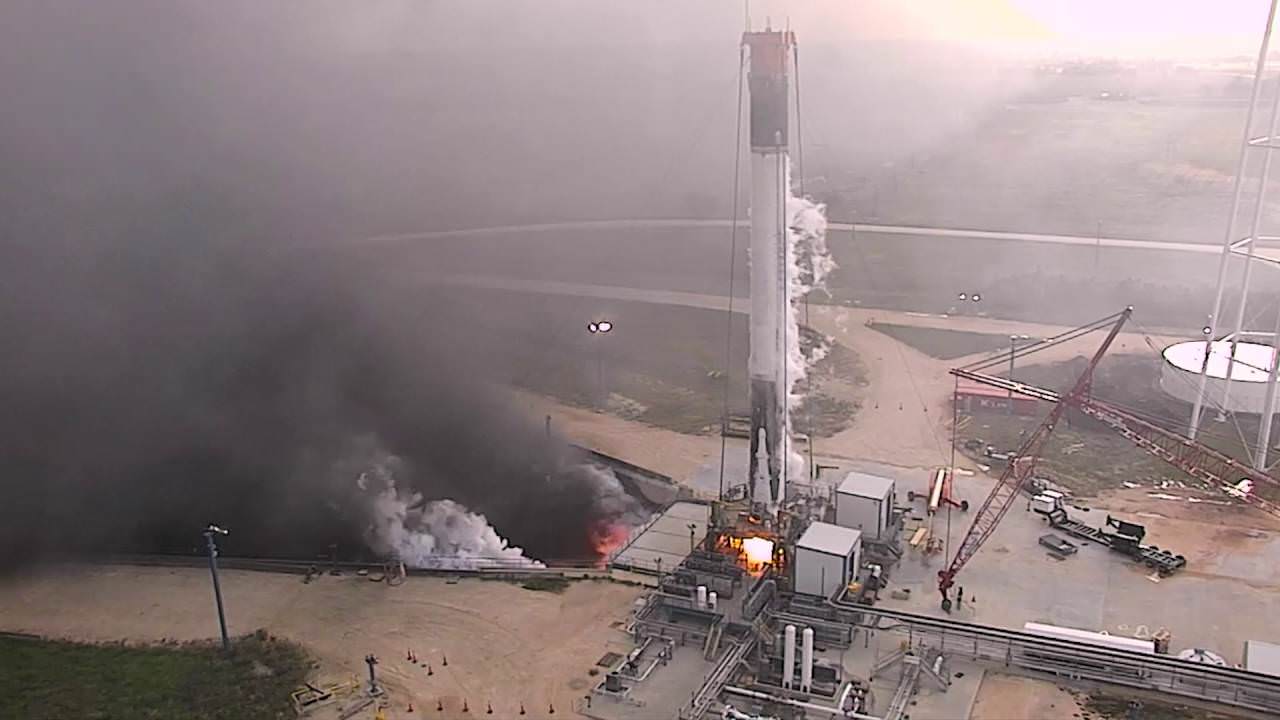
KENNEDY SPACE CENTER, FL – SpaceX founder Elon Musk’s daring dream of rocket recycling and reusability is getting closer and closer to reality with each passing day. After a breathtaking series of experimental flight tests aimed at safely landing the firms spent Falcon 9 first stages on land and at sea over the past half year the bold effort achieved another major milestone by just completing the first full duration test firing of one of those landed boosters.
On Thursday, July 28, SpaceX engineers successful conducted a full duration static engine test firing of the 156-foot-tall (47-meter) recovered Falcon 9 first stage booster while held down on a test stand at the company’s rocket development test facility in McGregor, Texas. The engines fired up for about two and a half minutes.
The SpaceX team has been perfecting the landing techniques by adopting lessons learned after each landing campaign attempt.
What are the lessons learned so far from the first stage landings and especially the hard landings? Are there any changes being made to the booster structure? How well did the landing burn scenario perform?
During SpaceX’s recent CRS-9 launch campaign media briefings at NASA’s Kennedy Space Center on July 18, I asked SpaceX VP Hans Koenigsmann for some insight.
“We learned a lot … from the landings,” Hans Koenigsmann, SpaceX vice president of Flight Reliability, told Universe Today during the recent media briefings for the SpaceX CRS-9 space station cargo resupply launch on July 18.
“There are no structural changes first of all.”
“The key thing is to protect the engines,” Koenigsmann elaborated, while they are in flight and “during reentry”.
The SpaceX Falcon 9 first stage is outfitted with four landing legs at the base and four grid fins at the top to conduct the landing attempts.
“In general I think the landing concept with the legs, and the number of burns and the way we perform those seems to work OK,” Koenigsmann told Universe Today.
After separating from the second stage at hypersonic speeds of up to some 4000 mph, the first stage engines are reignited to reverse course and do a boost backburn back to the landing site and slow the rocket down for a soft landing, via supersonic retropulsion.
Proper engine performance is critical to enabling a successful touchdown.
“The key thing is to protect the engines – and make sure that they start up well [in space during reentry],” Koenigsmann explained. “And in particular the hot trajectory, so to speak, like the ones that comes in after a fast payload, like the geo-transfer payload basically.”
“Those engines need to be protected so that they start up in the proper way. That’s something that we learned.”
Elon Musk’s goal is to radically slash the cost of launching rockets and access to space via rocket reuse – in a way that will one day lead to his vision of a ‘City on Mars.’
SpaceX hopes to refly a once flown booster later this year, sometime in the Fall, using the ocean landed Falcon from NASA’s CRS-8 space station mission launched in April, says Koenigsmann.
But the company first has to prove that the used vehicle can survive the extreme and unforgiving stresses of the violent spaceflight environment before they can relaunch it.
The July 28 test firing is part of that long life endurance testing and involved igniting all nine used first stage Merlin 1D engines housed at the base of a used landed rocket.
The Falcon 9 first stage generates over 1.71 million pounds of thrust when all nine Merlin engines fire up on the test stand for a duration of up to three minutes – the same as for an actual launch.
Watch the engine test in this SpaceX video:
Video Caption: Falcon 9 first stage from May 2016 JCSAT mission was test fired, full duration, at SpaceX’s McGregor, Texas rocket development facility on July 28, 2016. Credit: SpaceX
The used 15 story Falcon booster had successfully carried out an intact soft landing on an ocean going platform after launching a Japanese commercial telecommunications satellite only two months ago on May 6 of this year.
Just 10 minutes after launching the JCSAT-14 telecom satellite to a Geostationary Transfer Orbit (GTO), the used first stage relit a first stage Merlin 1D engine.
It conducted a series of three recovery burns to maneuver the rocket to a designated landing spot at sea or on land and rapidly decelerate it from supersonic speeds for a propulsive soft landing, intact and upright using a quartet of landing legs that deploy in the final moments before a slow speed touchdown.
However, although the landing was upright and intact, this particular landing was also classed as a ‘hard landing’ because the booster landed at a higher velocity and Merlin 1D first stage engines did sustain heavy damage as seen in up close photos and acknowledged by Musk.
“Most recent rocket took max damage, due to v high entry velocity. Will be our life leader for ground tests to confirm others are good,” Musk tweeted at the time.
Nevertheless it all worked out spectacularly and this was the first one to be recovered from the much more demanding, high velocity trajectory delivering a satellite to GTO.
Indeed prior to liftoff, Musk had openly doubted a successful landing outcome, since this first stage was flying faster and at a higher altitude at the time of separation from the second stage and thus was much more difficult to slow down and maneuver back to the ocean based platform compared to ISS missions, for example.
So although this one cannot be reflown, it still serves another great purpose for engineers seeking to determining the longevity of the booster and its various components – as now audaciously demonstrated by the July 28 engine test stand firing.
“We learned a lot even on the missions where things go wrong with the landing, everything goes well on the main mission of course,” said Koenigsmann.
Altogether SpaceX has successfully soft landed and recovered five of their first stage Falcon 9 boosters intact and upright since the history making first ever land landing took place just seven months ago in December 2015 at Cape Canaveral Air Force Station in Florida.
The most recent launch and landing occurred last week on July 18, 2016 during the dramatic midnight blastoff of the SpaceX CRS-9 commercial cargo resupply mission to the International Space Station (ISS) under contract for NASA.
See the stupendous events unfold in up close photos and videos herein.

Following each Falcon 9 launch and landing attempt, SpaceX engineers assess the voluminous and priceless data gathered, analyze the outcome and adopt the lessons learned.
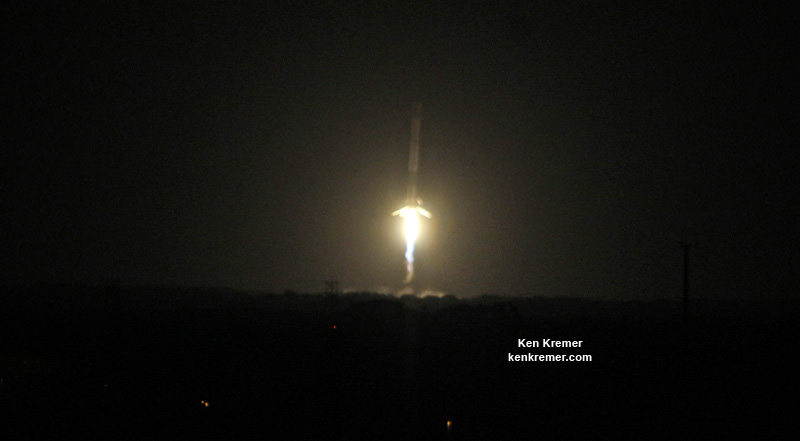
CRS-9 marks only the second time SpaceX has attempted a land landing of the 15 story tall first stage booster back at Cape Canaveral Air Force Station – at the location called Landing Zone 1 (LZ 1).
Watch this exquisitely detailed up close video showing the CRS-9 first stage landing at LZ 1, as shot by space colleague Jeff Seibert from the ITL causeway at CCAFS- which dramatically concluded with multiple shockingly loud sonic booms rocketing across the Space Coast and far beyond and waking hordes of sleepers:
Video caption: This was the second terrestrial landing of a SpaceX Falcon 9 booster on July 18, 2016. It had just launched the CRS9 Dragon mission towards the ISS. The landing took place at LZ1, formerly known as Pad 13, located on CCAFS and caused a triple sonic boom heard 50 miles away. Credit: Jeff Seibert
The history making first ever ground landing successfully took place at Landing Zone 1 (LZ 1) on Dec. 22, 2015 as part of the ORBCOMM-2 mission. Landing Zone 1 is built on the former site of Space Launch Complex 13, a U.S. Air Force rocket and missile testing range.
SpaceX also successfully recovered first stages three times in a row at sea this year on an ocean going drone ship barge using the company’s OCISLY Autonomous Spaceport Drone Ship (ASDS) on April 8, May 6 and May 27.
OCISLY is generally stationed approximately 400 miles (650 kilometers) off shore and east of Cape Canaveral, Florida in the Atlantic Ocean. The barge arrives back in port at Port Canaveral several days after the landing, depending on many factors like weather, port permission and the state of the rocket.
However while trying to extend the touchdown streak to 4 in a row during the latest drone ship landing attempt following the June 15 Eutelsat telecom launch to GTO, the booster basically crashed because it descended too quickly due to insufficient thrust from the Merlin descent engines.
The rocket apparently ran out of liquid oxygen fuel in the final moments before touchdown, hit hard, tipped over and pancaked onto the deck.
“Looks like early liquid oxygen depletion caused engine shutdown just above the deck,” Musk explained via twitter at the time.
“Looks like thrust was low on 1 of 3 landing engines. High g landings v sensitive to all engines operating at max.”
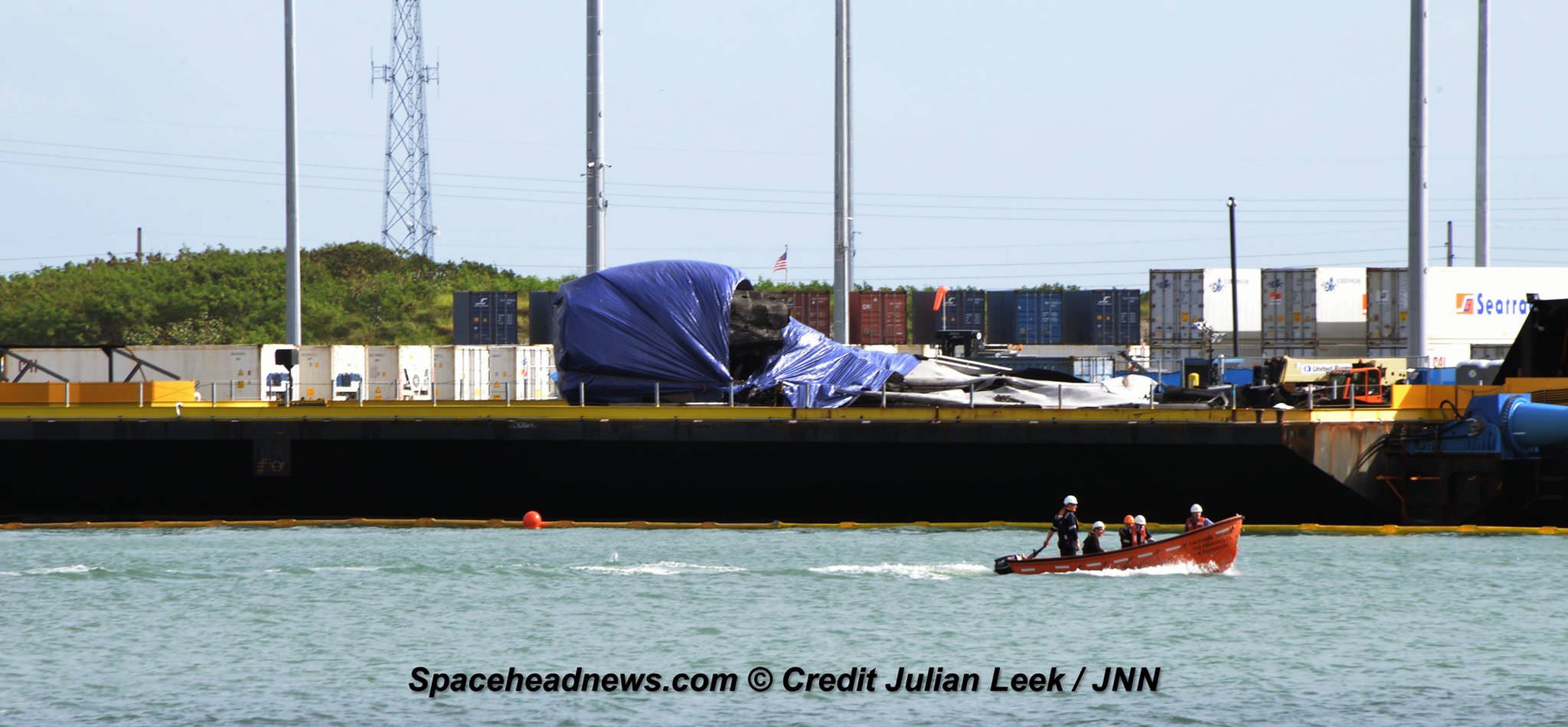
“We learned a lot even on the mission where things go wrong with the landing,” Koenigsmann explained. “Everything goes well on the main mission of course.”
“That’s actually something where you have successful deploy and the landing doesn’t quite work- and yet its the landing that gets all the attention.”
“But even on those landings we learned a lot. In particular on the last landing [from Eutelsat launch] we learned a lot.”
“We believe we found a way to operationally protect these engines and to make it safer for them to start up – and to come up to full thrust and stay at full thrust.”
What exactly does “protecting the engines” mean “in flight?”
“Yes I mean protecting the engines during reentry,” Koenigsmann told me.
“That’s when the engines get hot. We enter with the engines facing the flow. So its basically the engines directly exposed to the hot flow. And that’s when you need to protect the engines and the gases and liquids that are in the engines. To make sure that nothing boils off and does funny things.”
“So all in all these series of drone ship landings has been extremely successful, even when we didn’t recover all the first stages [fully intact].”
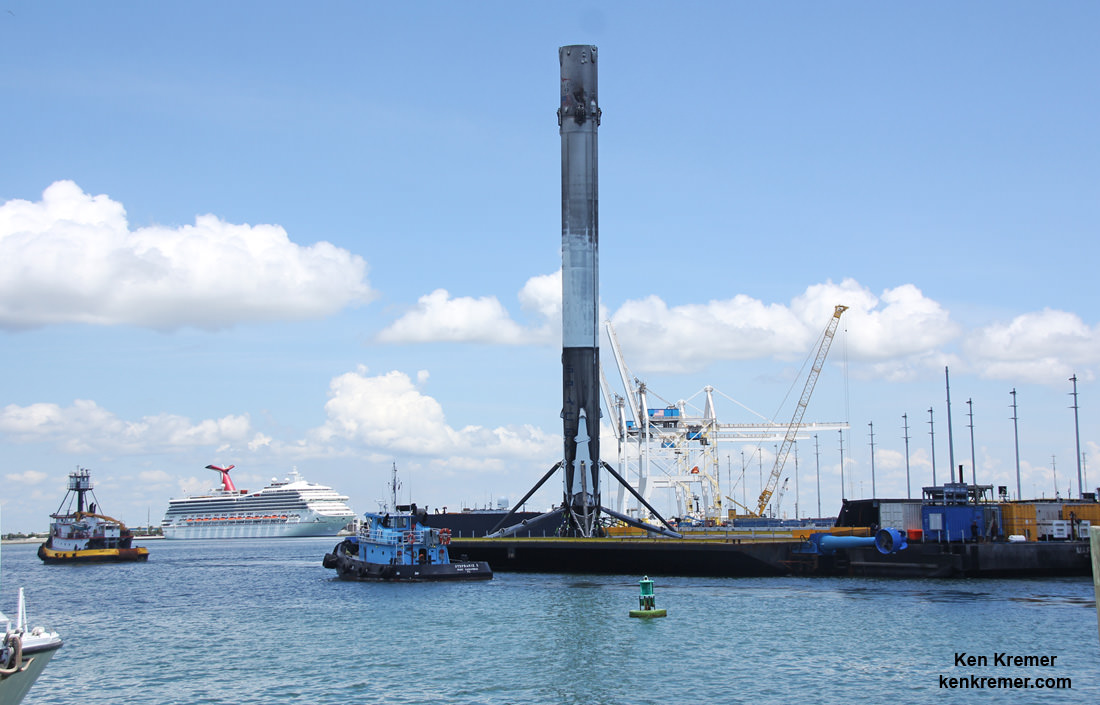
Watch for Ken’s continuing SpaceX and CRS-9 mission coverage where he reported onsite direct from the Kennedy Space Center and Cape Canaveral Air Force Station, Florida.
Stay tuned here for Ken’s continuing Earth and Planetary science and human spaceflight news.
Watch my launch pad video of the CRS-9 launch:
Video caption: SpaceX Falcon 9 lifts off with Dragon CRS-9 resupply ship bound for the International Space Station on July 18, 2016 at 12:45 a.m. EDT from Space Launch Complex 40 at Cape Canaveral Air Force Station, Fl, as seen in this up close video from Mobius remote camera positioned at pad. Credit: Ken Kremer/kenkremer.com
Watch this CRS-9 launch and landing video compilation from space colleague Mike Wagner:
Video caption: SpaceX CRS-9 Launch and Landing compilation on 7/18/2016. Local papers reported 911 calls for a loud explosion up to 75 miles away. This sonic boom seemed louder than the first landing at the Cape in Dec. 2015. Credit: USLaunchReport
